Quick filters:
Suitable habitats Stock Photos and Images
 Young women dancing in a rehearsal before a ceremonial event attended by Indonesian officials, which is to release Rote Island's endemic snake-necked turtle (Chelodina mccordi) to one of the suitable habitats in Lake Peto, Maubesi village, Rote Island, Indonesia. Stock Photohttps://www.alamy.com/image-license-details/?v=1https://www.alamy.com/young-women-dancing-in-a-rehearsal-before-a-ceremonial-event-attended-by-indonesian-officials-which-is-to-release-rote-islands-endemic-snake-necked-turtle-chelodina-mccordi-to-one-of-the-suitable-habitats-in-lake-peto-maubesi-village-rote-island-indonesia-image414781667.html
Young women dancing in a rehearsal before a ceremonial event attended by Indonesian officials, which is to release Rote Island's endemic snake-necked turtle (Chelodina mccordi) to one of the suitable habitats in Lake Peto, Maubesi village, Rote Island, Indonesia. Stock Photohttps://www.alamy.com/image-license-details/?v=1https://www.alamy.com/young-women-dancing-in-a-rehearsal-before-a-ceremonial-event-attended-by-indonesian-officials-which-is-to-release-rote-islands-endemic-snake-necked-turtle-chelodina-mccordi-to-one-of-the-suitable-habitats-in-lake-peto-maubesi-village-rote-island-indonesia-image414781667.htmlRM2F2PX6Y–Young women dancing in a rehearsal before a ceremonial event attended by Indonesian officials, which is to release Rote Island's endemic snake-necked turtle (Chelodina mccordi) to one of the suitable habitats in Lake Peto, Maubesi village, Rote Island, Indonesia.
 The Waterbuck is a large antelope found widely in Sub-Saharan Africa. Defassa Waterbuck (Kobus ellipsyprymnus defassa) are found in all suitable habitats in all four of Uganda's Savannah national parks. (Photo from Feb. 2015) | usage worldwide Stock Photohttps://www.alamy.com/image-license-details/?v=1https://www.alamy.com/stock-photo-the-waterbuck-is-a-large-antelope-found-widely-in-sub-saharan-africa-122036038.html
The Waterbuck is a large antelope found widely in Sub-Saharan Africa. Defassa Waterbuck (Kobus ellipsyprymnus defassa) are found in all suitable habitats in all four of Uganda's Savannah national parks. (Photo from Feb. 2015) | usage worldwide Stock Photohttps://www.alamy.com/image-license-details/?v=1https://www.alamy.com/stock-photo-the-waterbuck-is-a-large-antelope-found-widely-in-sub-saharan-africa-122036038.htmlRMH2F65X–The Waterbuck is a large antelope found widely in Sub-Saharan Africa. Defassa Waterbuck (Kobus ellipsyprymnus defassa) are found in all suitable habitats in all four of Uganda's Savannah national parks. (Photo from Feb. 2015) | usage worldwide
 Members of Team MacDill participate in an Earth Day clean-up event April 23, 2021 at MacDill Air Force Base, Fla. Throughout the year, MacDill hosts various events to bring awareness on how to protect the local environment. MacDill has over 1200 acres of natural areas that makes it one of the only suitable habitats for animal species in the Tampa Bay area. Stock Photohttps://www.alamy.com/image-license-details/?v=1https://www.alamy.com/members-of-team-macdill-participate-in-an-earth-day-clean-up-event-april-23-2021-at-macdill-air-force-base-fla-throughout-the-year-macdill-hosts-various-events-to-bring-awareness-on-how-to-protect-the-local-environment-macdill-has-over-1200-acres-of-natural-areas-that-makes-it-one-of-the-only-suitable-habitats-for-animal-species-in-the-tampa-bay-area-image442323334.html
Members of Team MacDill participate in an Earth Day clean-up event April 23, 2021 at MacDill Air Force Base, Fla. Throughout the year, MacDill hosts various events to bring awareness on how to protect the local environment. MacDill has over 1200 acres of natural areas that makes it one of the only suitable habitats for animal species in the Tampa Bay area. Stock Photohttps://www.alamy.com/image-license-details/?v=1https://www.alamy.com/members-of-team-macdill-participate-in-an-earth-day-clean-up-event-april-23-2021-at-macdill-air-force-base-fla-throughout-the-year-macdill-hosts-various-events-to-bring-awareness-on-how-to-protect-the-local-environment-macdill-has-over-1200-acres-of-natural-areas-that-makes-it-one-of-the-only-suitable-habitats-for-animal-species-in-the-tampa-bay-area-image442323334.htmlRM2GKHFWX–Members of Team MacDill participate in an Earth Day clean-up event April 23, 2021 at MacDill Air Force Base, Fla. Throughout the year, MacDill hosts various events to bring awareness on how to protect the local environment. MacDill has over 1200 acres of natural areas that makes it one of the only suitable habitats for animal species in the Tampa Bay area.
 The Waterbuck is a large antelope found widely in Sub-Saharan Africa. Defassa Waterbuck (Kobus ellipsyprymnus defassa) are found in all suitable habitats in all four of Uganda's Savannah national parks. (Photo from Feb. 2015) | usage worldwide Stock Photohttps://www.alamy.com/image-license-details/?v=1https://www.alamy.com/stock-photo-the-waterbuck-is-a-large-antelope-found-widely-in-sub-saharan-africa-122036096.html
The Waterbuck is a large antelope found widely in Sub-Saharan Africa. Defassa Waterbuck (Kobus ellipsyprymnus defassa) are found in all suitable habitats in all four of Uganda's Savannah national parks. (Photo from Feb. 2015) | usage worldwide Stock Photohttps://www.alamy.com/image-license-details/?v=1https://www.alamy.com/stock-photo-the-waterbuck-is-a-large-antelope-found-widely-in-sub-saharan-africa-122036096.htmlRMH2F680–The Waterbuck is a large antelope found widely in Sub-Saharan Africa. Defassa Waterbuck (Kobus ellipsyprymnus defassa) are found in all suitable habitats in all four of Uganda's Savannah national parks. (Photo from Feb. 2015) | usage worldwide
 Ursus malayanus, Print, The sun bear (Helarctos malayanus) is a bear species occurring in tropical forest habitats of Southeast Asia. It is listed as Vulnerable on the IUCN Red List. The global population is thought to have declined by more than 30% over the past three bear generations. Suitable habitat has been dramatically reduced due to the large-scale deforestation that has occurred throughout Southeast Asia over the past three decades., 1700-1880 Stock Photohttps://www.alamy.com/image-license-details/?v=1https://www.alamy.com/ursus-malayanus-print-the-sun-bear-helarctos-malayanus-is-a-bear-species-occurring-in-tropical-forest-habitats-of-southeast-asia-it-is-listed-as-vulnerable-on-the-iucn-red-list-the-global-population-is-thought-to-have-declined-by-more-than-30-over-the-past-three-bear-generations-suitable-habitat-has-been-dramatically-reduced-due-to-the-large-scale-deforestation-that-has-occurred-throughout-southeast-asia-over-the-past-three-decades-1700-1880-image328705035.html
Ursus malayanus, Print, The sun bear (Helarctos malayanus) is a bear species occurring in tropical forest habitats of Southeast Asia. It is listed as Vulnerable on the IUCN Red List. The global population is thought to have declined by more than 30% over the past three bear generations. Suitable habitat has been dramatically reduced due to the large-scale deforestation that has occurred throughout Southeast Asia over the past three decades., 1700-1880 Stock Photohttps://www.alamy.com/image-license-details/?v=1https://www.alamy.com/ursus-malayanus-print-the-sun-bear-helarctos-malayanus-is-a-bear-species-occurring-in-tropical-forest-habitats-of-southeast-asia-it-is-listed-as-vulnerable-on-the-iucn-red-list-the-global-population-is-thought-to-have-declined-by-more-than-30-over-the-past-three-bear-generations-suitable-habitat-has-been-dramatically-reduced-due-to-the-large-scale-deforestation-that-has-occurred-throughout-southeast-asia-over-the-past-three-decades-1700-1880-image328705035.htmlRM2A2NPHF–Ursus malayanus, Print, The sun bear (Helarctos malayanus) is a bear species occurring in tropical forest habitats of Southeast Asia. It is listed as Vulnerable on the IUCN Red List. The global population is thought to have declined by more than 30% over the past three bear generations. Suitable habitat has been dramatically reduced due to the large-scale deforestation that has occurred throughout Southeast Asia over the past three decades., 1700-1880
 Common Blue (Polyommatus icarus) is a common butterfly found in suitable habitats in Turkey. Stock Photohttps://www.alamy.com/image-license-details/?v=1https://www.alamy.com/common-blue-polyommatus-icarus-is-a-common-butterfly-found-in-suitable-habitats-in-turkey-image602033485.html
Common Blue (Polyommatus icarus) is a common butterfly found in suitable habitats in Turkey. Stock Photohttps://www.alamy.com/image-license-details/?v=1https://www.alamy.com/common-blue-polyommatus-icarus-is-a-common-butterfly-found-in-suitable-habitats-in-turkey-image602033485.htmlRF2WYCYRW–Common Blue (Polyommatus icarus) is a common butterfly found in suitable habitats in Turkey.
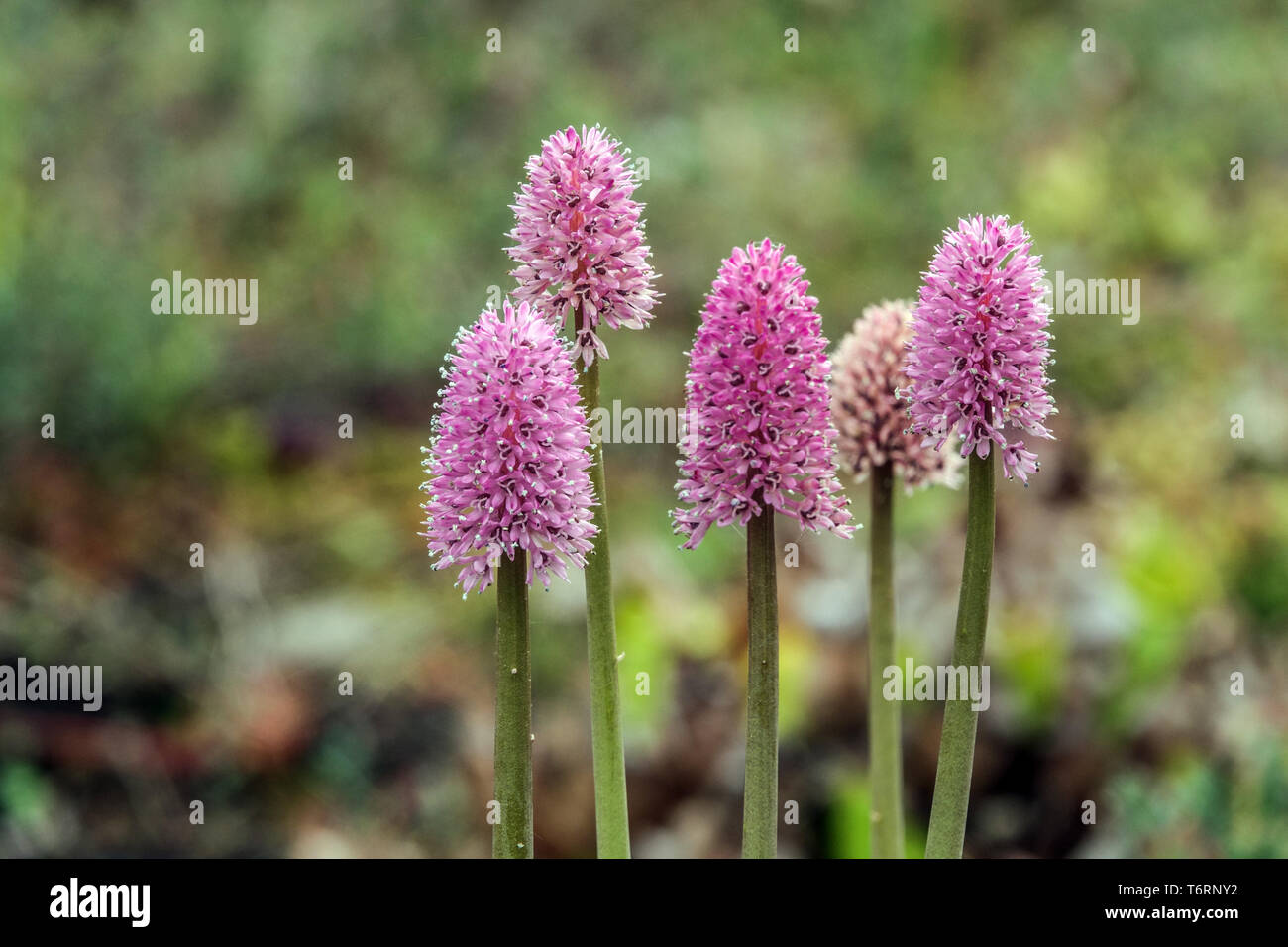 Swamp Pink, Helonias bullata, plant suitable for wet habitats - swamps and wetlands Peat bog flowers Stock Photohttps://www.alamy.com/image-license-details/?v=1https://www.alamy.com/swamp-pink-helonias-bullata-plant-suitable-for-wet-habitats-swamps-and-wetlands-peat-bog-flowers-image245155206.html
Swamp Pink, Helonias bullata, plant suitable for wet habitats - swamps and wetlands Peat bog flowers Stock Photohttps://www.alamy.com/image-license-details/?v=1https://www.alamy.com/swamp-pink-helonias-bullata-plant-suitable-for-wet-habitats-swamps-and-wetlands-peat-bog-flowers-image245155206.htmlRMT6RNY2–Swamp Pink, Helonias bullata, plant suitable for wet habitats - swamps and wetlands Peat bog flowers
 Common Blue (Polyommatus icarus) is a common butterfly found in suitable habitats in Turkey. Stock Photohttps://www.alamy.com/image-license-details/?v=1https://www.alamy.com/common-blue-polyommatus-icarus-is-a-common-butterfly-found-in-suitable-habitats-in-turkey-image602033382.html
Common Blue (Polyommatus icarus) is a common butterfly found in suitable habitats in Turkey. Stock Photohttps://www.alamy.com/image-license-details/?v=1https://www.alamy.com/common-blue-polyommatus-icarus-is-a-common-butterfly-found-in-suitable-habitats-in-turkey-image602033382.htmlRF2WYCYM6–Common Blue (Polyommatus icarus) is a common butterfly found in suitable habitats in Turkey.
 General guide to the exhibition halls of the American Museum of Natural History . rma and the Malay Peninsula. The Chital or Axis Deer is one of thehandsomest of the deer family. Theyoung of all deer arc spotted, but thisspecies retains the spotted patternthrough life. It frequents the bamboojungle and wooded regions near water,and is found in suitable habitats through-out most of India and Ceylon. The Gaur is perhaps the largest of theexisting cow-like animals, large bullsstanding over six feet at the shoulder.Gaur are found in forested hilly countryfrom India to Indo-China and the MalayPenin Stock Photohttps://www.alamy.com/image-license-details/?v=1https://www.alamy.com/general-guide-to-the-exhibition-halls-of-the-american-museum-of-natural-history-rma-and-the-malay-peninsula-the-chital-or-axis-deer-is-one-of-thehandsomest-of-the-deer-family-theyoung-of-all-deer-arc-spotted-but-thisspecies-retains-the-spotted-patternthrough-life-it-frequents-the-bamboojungle-and-wooded-regions-near-waterand-is-found-in-suitable-habitats-through-out-most-of-india-and-ceylon-the-gaur-is-perhaps-the-largest-of-theexisting-cow-like-animals-large-bullsstanding-over-six-feet-at-the-shouldergaur-are-found-in-forested-hilly-countryfrom-india-to-indo-china-and-the-malaypenin-image339964854.html
General guide to the exhibition halls of the American Museum of Natural History . rma and the Malay Peninsula. The Chital or Axis Deer is one of thehandsomest of the deer family. Theyoung of all deer arc spotted, but thisspecies retains the spotted patternthrough life. It frequents the bamboojungle and wooded regions near water,and is found in suitable habitats through-out most of India and Ceylon. The Gaur is perhaps the largest of theexisting cow-like animals, large bullsstanding over six feet at the shoulder.Gaur are found in forested hilly countryfrom India to Indo-China and the MalayPenin Stock Photohttps://www.alamy.com/image-license-details/?v=1https://www.alamy.com/general-guide-to-the-exhibition-halls-of-the-american-museum-of-natural-history-rma-and-the-malay-peninsula-the-chital-or-axis-deer-is-one-of-thehandsomest-of-the-deer-family-theyoung-of-all-deer-arc-spotted-but-thisspecies-retains-the-spotted-patternthrough-life-it-frequents-the-bamboojungle-and-wooded-regions-near-waterand-is-found-in-suitable-habitats-through-out-most-of-india-and-ceylon-the-gaur-is-perhaps-the-largest-of-theexisting-cow-like-animals-large-bullsstanding-over-six-feet-at-the-shouldergaur-are-found-in-forested-hilly-countryfrom-india-to-indo-china-and-the-malaypenin-image339964854.htmlRM2AN2MHX–General guide to the exhibition halls of the American Museum of Natural History . rma and the Malay Peninsula. The Chital or Axis Deer is one of thehandsomest of the deer family. Theyoung of all deer arc spotted, but thisspecies retains the spotted patternthrough life. It frequents the bamboojungle and wooded regions near water,and is found in suitable habitats through-out most of India and Ceylon. The Gaur is perhaps the largest of theexisting cow-like animals, large bullsstanding over six feet at the shoulder.Gaur are found in forested hilly countryfrom India to Indo-China and the MalayPenin
 Repurposed green electrical box in Bucklers Forest, Crowthorne, Berkshire, England, UK, being used as a nature curiosity box Stock Photohttps://www.alamy.com/image-license-details/?v=1https://www.alamy.com/repurposed-green-electrical-box-in-bucklers-forest-crowthorne-berkshire-england-uk-being-used-as-a-nature-curiosity-box-image566688886.html
Repurposed green electrical box in Bucklers Forest, Crowthorne, Berkshire, England, UK, being used as a nature curiosity box Stock Photohttps://www.alamy.com/image-license-details/?v=1https://www.alamy.com/repurposed-green-electrical-box-in-bucklers-forest-crowthorne-berkshire-england-uk-being-used-as-a-nature-curiosity-box-image566688886.htmlRM2RWXWCP–Repurposed green electrical box in Bucklers Forest, Crowthorne, Berkshire, England, UK, being used as a nature curiosity box
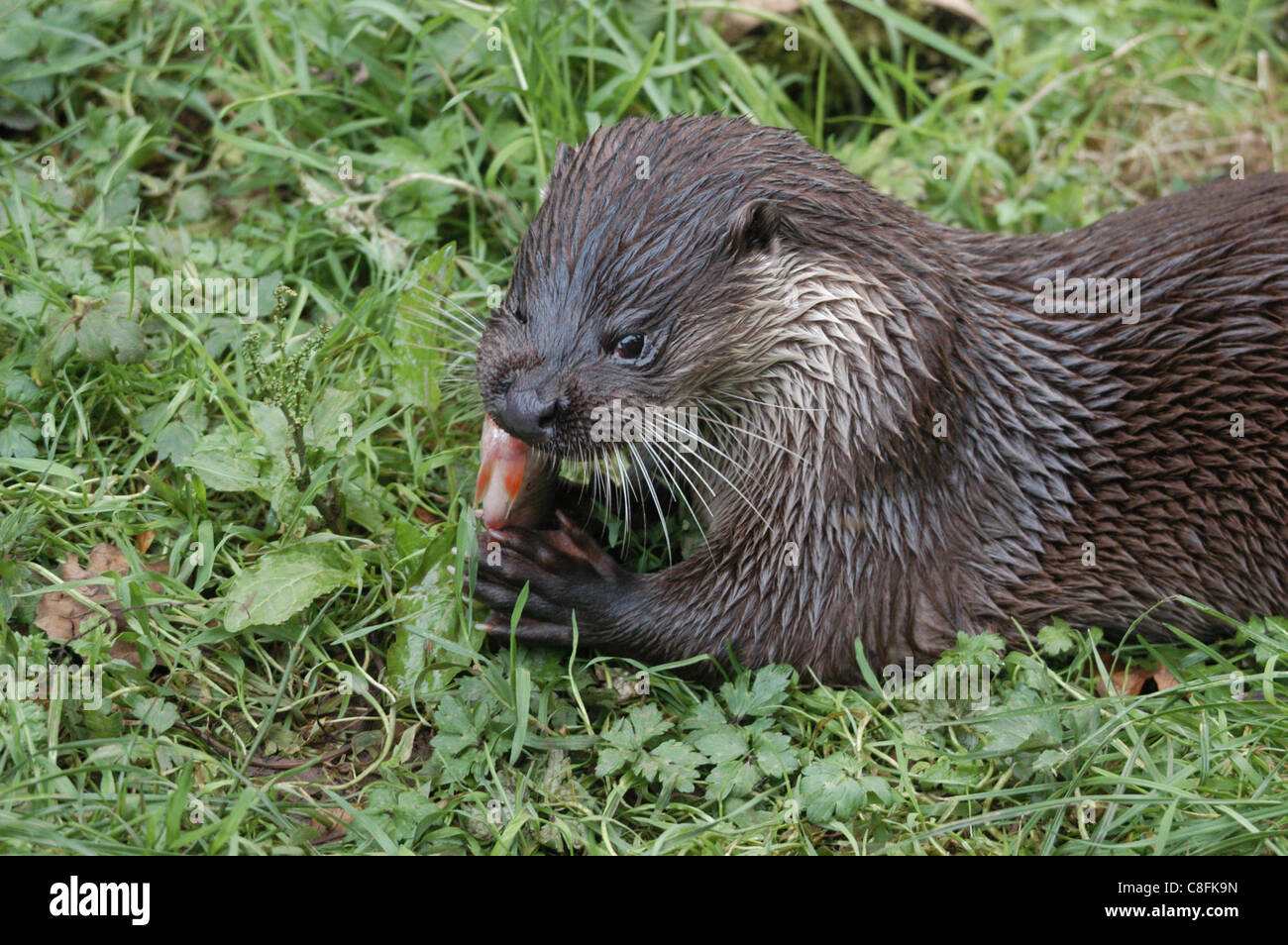 British or European Otter, making a come back to British coasts, estuaries and fresh water habitats with suitable cover. Stock Photohttps://www.alamy.com/image-license-details/?v=1https://www.alamy.com/stock-photo-british-or-european-otter-making-a-come-back-to-british-coasts-estuaries-39682433.html
British or European Otter, making a come back to British coasts, estuaries and fresh water habitats with suitable cover. Stock Photohttps://www.alamy.com/image-license-details/?v=1https://www.alamy.com/stock-photo-british-or-european-otter-making-a-come-back-to-british-coasts-estuaries-39682433.htmlRFC8FK9N–British or European Otter, making a come back to British coasts, estuaries and fresh water habitats with suitable cover.
 Tree stump with a large round hollow cavity, surrounded by grass and leafy vegetation. Suitable for nature, habitats, and ecological conservation visu Stock Vectorhttps://www.alamy.com/image-license-details/?v=1https://www.alamy.com/tree-stump-with-a-large-round-hollow-cavity-surrounded-by-grass-and-leafy-vegetation-suitable-for-nature-habitats-and-ecological-conservation-visu-image614243019.html
Tree stump with a large round hollow cavity, surrounded by grass and leafy vegetation. Suitable for nature, habitats, and ecological conservation visu Stock Vectorhttps://www.alamy.com/image-license-details/?v=1https://www.alamy.com/tree-stump-with-a-large-round-hollow-cavity-surrounded-by-grass-and-leafy-vegetation-suitable-for-nature-habitats-and-ecological-conservation-visu-image614243019.htmlRF2XK956K–Tree stump with a large round hollow cavity, surrounded by grass and leafy vegetation. Suitable for nature, habitats, and ecological conservation visu
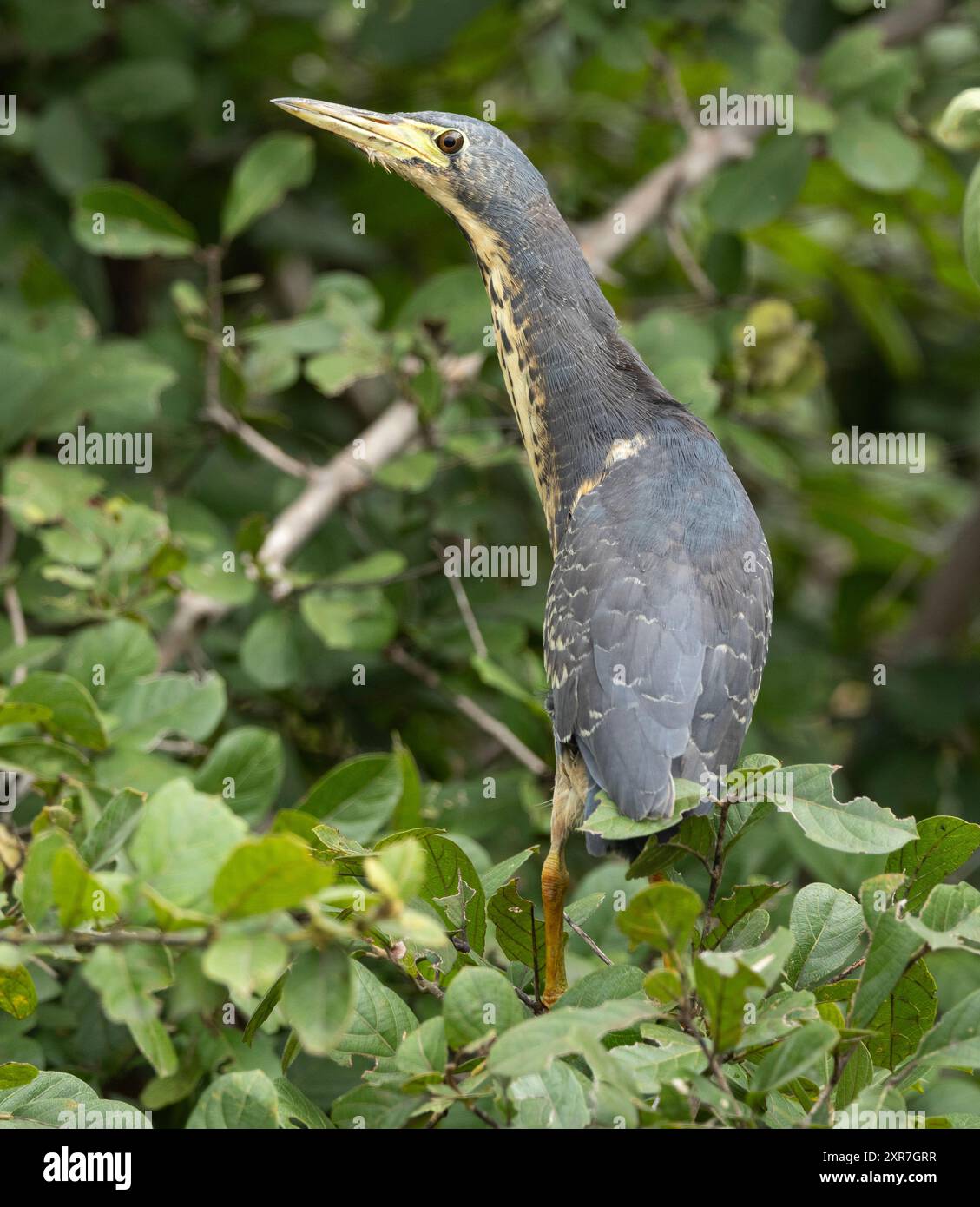 Seldom seen because of their secretive habits, the Dwarf Bittern is probably more widespread in suitable habitats than previously thought. Stock Photohttps://www.alamy.com/image-license-details/?v=1https://www.alamy.com/seldom-seen-because-of-their-secretive-habits-the-dwarf-bittern-is-probably-more-widespread-in-suitable-habitats-than-previously-thought-image616666843.html
Seldom seen because of their secretive habits, the Dwarf Bittern is probably more widespread in suitable habitats than previously thought. Stock Photohttps://www.alamy.com/image-license-details/?v=1https://www.alamy.com/seldom-seen-because-of-their-secretive-habits-the-dwarf-bittern-is-probably-more-widespread-in-suitable-habitats-than-previously-thought-image616666843.htmlRM2XR7GRR–Seldom seen because of their secretive habits, the Dwarf Bittern is probably more widespread in suitable habitats than previously thought.
 Curlew in breeding habitat on the North Wales moorland Stock Photohttps://www.alamy.com/image-license-details/?v=1https://www.alamy.com/curlew-in-breeding-habitat-on-the-north-wales-moorland-image468019948.html
Curlew in breeding habitat on the North Wales moorland Stock Photohttps://www.alamy.com/image-license-details/?v=1https://www.alamy.com/curlew-in-breeding-habitat-on-the-north-wales-moorland-image468019948.htmlRF2J5C464–Curlew in breeding habitat on the North Wales moorland
 Mallard duck, green body, brownish body, wild duck, glossy green head, grey wings and belly, suitable wetland habitats, shallow sanctuaries, yellow. Stock Photohttps://www.alamy.com/image-license-details/?v=1https://www.alamy.com/mallard-duck-green-body-brownish-body-wild-duck-glossy-green-head-grey-wings-and-belly-suitable-wetland-habitats-shallow-sanctuaries-yellow-image474458718.html
Mallard duck, green body, brownish body, wild duck, glossy green head, grey wings and belly, suitable wetland habitats, shallow sanctuaries, yellow. Stock Photohttps://www.alamy.com/image-license-details/?v=1https://www.alamy.com/mallard-duck-green-body-brownish-body-wild-duck-glossy-green-head-grey-wings-and-belly-suitable-wetland-habitats-shallow-sanctuaries-yellow-image474458718.htmlRF2JFWCX6–Mallard duck, green body, brownish body, wild duck, glossy green head, grey wings and belly, suitable wetland habitats, shallow sanctuaries, yellow.
 zoology / animals, insect, bees, Western honey bee, (Apis mellifera), female guard at entrance, distribution: Europe, Africa, in Stock Photohttps://www.alamy.com/image-license-details/?v=1https://www.alamy.com/stock-photo-zoology-animals-insect-bees-western-honey-bee-apis-mellifera-female-11694676.html
zoology / animals, insect, bees, Western honey bee, (Apis mellifera), female guard at entrance, distribution: Europe, Africa, in Stock Photohttps://www.alamy.com/image-license-details/?v=1https://www.alamy.com/stock-photo-zoology-animals-insect-bees-western-honey-bee-apis-mellifera-female-11694676.htmlRMA71M7H–zoology / animals, insect, bees, Western honey bee, (Apis mellifera), female guard at entrance, distribution: Europe, Africa, in
 Mallard duck, green body, brownish body, wild duck, glossy green head, grey wings and belly, suitable wetland habitats, shallow sanctuaries, yellow. Stock Photohttps://www.alamy.com/image-license-details/?v=1https://www.alamy.com/mallard-duck-green-body-brownish-body-wild-duck-glossy-green-head-grey-wings-and-belly-suitable-wetland-habitats-shallow-sanctuaries-yellow-image439579990.html
Mallard duck, green body, brownish body, wild duck, glossy green head, grey wings and belly, suitable wetland habitats, shallow sanctuaries, yellow. Stock Photohttps://www.alamy.com/image-license-details/?v=1https://www.alamy.com/mallard-duck-green-body-brownish-body-wild-duck-glossy-green-head-grey-wings-and-belly-suitable-wetland-habitats-shallow-sanctuaries-yellow-image439579990.htmlRF2GF4GNA–Mallard duck, green body, brownish body, wild duck, glossy green head, grey wings and belly, suitable wetland habitats, shallow sanctuaries, yellow.
 zoology / animals, insect, bees, bee house, honey bees in front of bee house, distribution: Africa, Europe and in worldwide suit Stock Photohttps://www.alamy.com/image-license-details/?v=1https://www.alamy.com/stock-photo-zoology-animals-insect-bees-bee-house-honey-bees-in-front-of-bee-house-10877198.html
zoology / animals, insect, bees, bee house, honey bees in front of bee house, distribution: Africa, Europe and in worldwide suit Stock Photohttps://www.alamy.com/image-license-details/?v=1https://www.alamy.com/stock-photo-zoology-animals-insect-bees-bee-house-honey-bees-in-front-of-bee-house-10877198.htmlRMA3XR7Y–zoology / animals, insect, bees, bee house, honey bees in front of bee house, distribution: Africa, Europe and in worldwide suit
 Ursus malayanus, Print, The sun bear (Helarctos malayanus) is a bear species occurring in tropical forest habitats of Southeast Asia. It is listed as Vulnerable on the IUCN Red List. The global population is thought to have declined by more than 30% over the past three bear generations. Suitable habitat has been dramatically reduced due to the large-scale deforestation that has occurred throughout Southeast Asia over the past three decades., 1700-1880, Reimagined by Gibon, design of warm cheerful glowing of brightness and light rays radiance. Classic art reinvented with a modern twist. Photogr Stock Photohttps://www.alamy.com/image-license-details/?v=1https://www.alamy.com/ursus-malayanus-print-the-sun-bear-helarctos-malayanus-is-a-bear-species-occurring-in-tropical-forest-habitats-of-southeast-asia-it-is-listed-as-vulnerable-on-the-iucn-red-list-the-global-population-is-thought-to-have-declined-by-more-than-30-over-the-past-three-bear-generations-suitable-habitat-has-been-dramatically-reduced-due-to-the-large-scale-deforestation-that-has-occurred-throughout-southeast-asia-over-the-past-three-decades-1700-1880-reimagined-by-gibon-design-of-warm-cheerful-glowing-of-brightness-and-light-rays-radiance-classic-art-reinvented-with-a-modern-twist-photogr-image349794791.html
Ursus malayanus, Print, The sun bear (Helarctos malayanus) is a bear species occurring in tropical forest habitats of Southeast Asia. It is listed as Vulnerable on the IUCN Red List. The global population is thought to have declined by more than 30% over the past three bear generations. Suitable habitat has been dramatically reduced due to the large-scale deforestation that has occurred throughout Southeast Asia over the past three decades., 1700-1880, Reimagined by Gibon, design of warm cheerful glowing of brightness and light rays radiance. Classic art reinvented with a modern twist. Photogr Stock Photohttps://www.alamy.com/image-license-details/?v=1https://www.alamy.com/ursus-malayanus-print-the-sun-bear-helarctos-malayanus-is-a-bear-species-occurring-in-tropical-forest-habitats-of-southeast-asia-it-is-listed-as-vulnerable-on-the-iucn-red-list-the-global-population-is-thought-to-have-declined-by-more-than-30-over-the-past-three-bear-generations-suitable-habitat-has-been-dramatically-reduced-due-to-the-large-scale-deforestation-that-has-occurred-throughout-southeast-asia-over-the-past-three-decades-1700-1880-reimagined-by-gibon-design-of-warm-cheerful-glowing-of-brightness-and-light-rays-radiance-classic-art-reinvented-with-a-modern-twist-photogr-image349794791.htmlRF2B92ER3–Ursus malayanus, Print, The sun bear (Helarctos malayanus) is a bear species occurring in tropical forest habitats of Southeast Asia. It is listed as Vulnerable on the IUCN Red List. The global population is thought to have declined by more than 30% over the past three bear generations. Suitable habitat has been dramatically reduced due to the large-scale deforestation that has occurred throughout Southeast Asia over the past three decades., 1700-1880, Reimagined by Gibon, design of warm cheerful glowing of brightness and light rays radiance. Classic art reinvented with a modern twist. Photogr
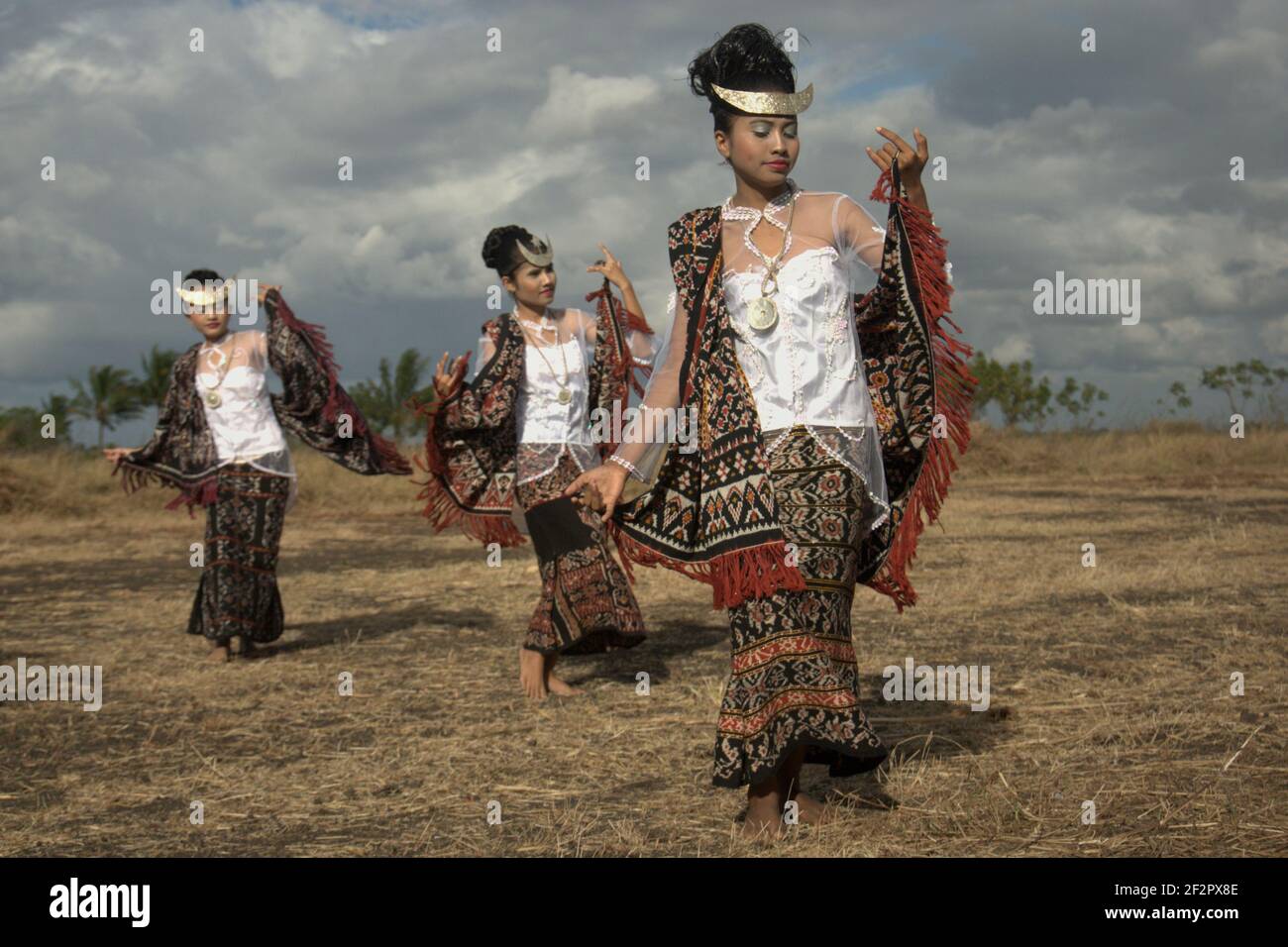 Young women dancing in a rehearsal before a ceremonial event attended by Indonesian officials, which is to release Rote Island's endemic snake-necked turtle (Chelodina mccordi) to one of the suitable habitats in Lake Peto, Maubesi village, Rote Island, Indonesia. Stock Photohttps://www.alamy.com/image-license-details/?v=1https://www.alamy.com/young-women-dancing-in-a-rehearsal-before-a-ceremonial-event-attended-by-indonesian-officials-which-is-to-release-rote-islands-endemic-snake-necked-turtle-chelodina-mccordi-to-one-of-the-suitable-habitats-in-lake-peto-maubesi-village-rote-island-indonesia-image414781710.html
Young women dancing in a rehearsal before a ceremonial event attended by Indonesian officials, which is to release Rote Island's endemic snake-necked turtle (Chelodina mccordi) to one of the suitable habitats in Lake Peto, Maubesi village, Rote Island, Indonesia. Stock Photohttps://www.alamy.com/image-license-details/?v=1https://www.alamy.com/young-women-dancing-in-a-rehearsal-before-a-ceremonial-event-attended-by-indonesian-officials-which-is-to-release-rote-islands-endemic-snake-necked-turtle-chelodina-mccordi-to-one-of-the-suitable-habitats-in-lake-peto-maubesi-village-rote-island-indonesia-image414781710.htmlRM2F2PX8E–Young women dancing in a rehearsal before a ceremonial event attended by Indonesian officials, which is to release Rote Island's endemic snake-necked turtle (Chelodina mccordi) to one of the suitable habitats in Lake Peto, Maubesi village, Rote Island, Indonesia.
 view of flowering head. Stock Photohttps://www.alamy.com/image-license-details/?v=1https://www.alamy.com/view-of-flowering-head-image66607610.html
view of flowering head. Stock Photohttps://www.alamy.com/image-license-details/?v=1https://www.alamy.com/view-of-flowering-head-image66607610.htmlRMDTA6K6–view of flowering head.
RF2RGPT73–Conservation Icon image. Suitable for mobile application.
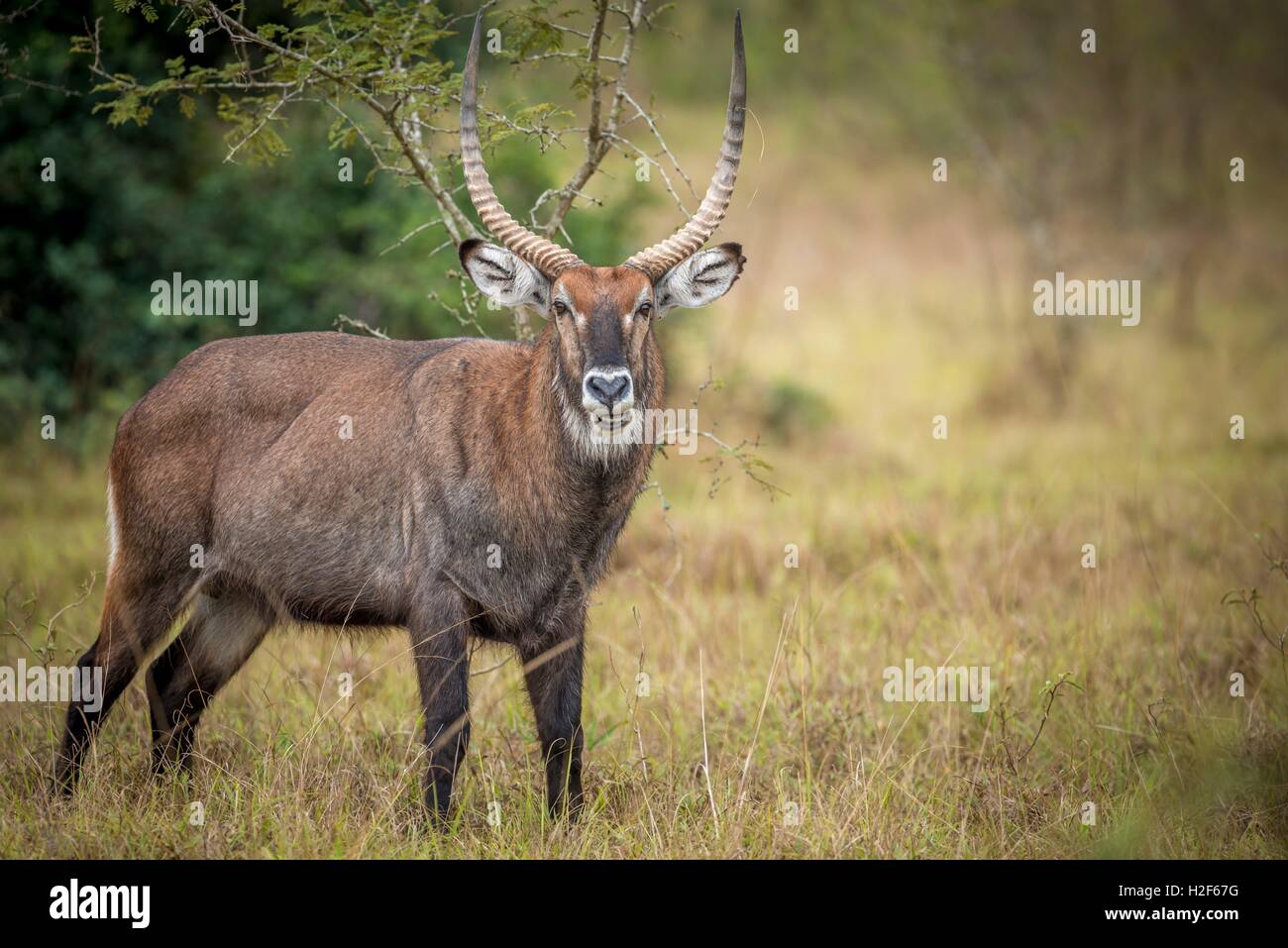 The Waterbuck is a large antelope found widely in Sub-Saharan Africa. Defassa Waterbuck (Kobus ellipsyprymnus defassa) are found in all suitable habitats in all four of Uganda's Savannah national parks. (Photo from Feb. 2015) | usage worldwide Stock Photohttps://www.alamy.com/image-license-details/?v=1https://www.alamy.com/stock-photo-the-waterbuck-is-a-large-antelope-found-widely-in-sub-saharan-africa-122036084.html
The Waterbuck is a large antelope found widely in Sub-Saharan Africa. Defassa Waterbuck (Kobus ellipsyprymnus defassa) are found in all suitable habitats in all four of Uganda's Savannah national parks. (Photo from Feb. 2015) | usage worldwide Stock Photohttps://www.alamy.com/image-license-details/?v=1https://www.alamy.com/stock-photo-the-waterbuck-is-a-large-antelope-found-widely-in-sub-saharan-africa-122036084.htmlRMH2F67G–The Waterbuck is a large antelope found widely in Sub-Saharan Africa. Defassa Waterbuck (Kobus ellipsyprymnus defassa) are found in all suitable habitats in all four of Uganda's Savannah national parks. (Photo from Feb. 2015) | usage worldwide
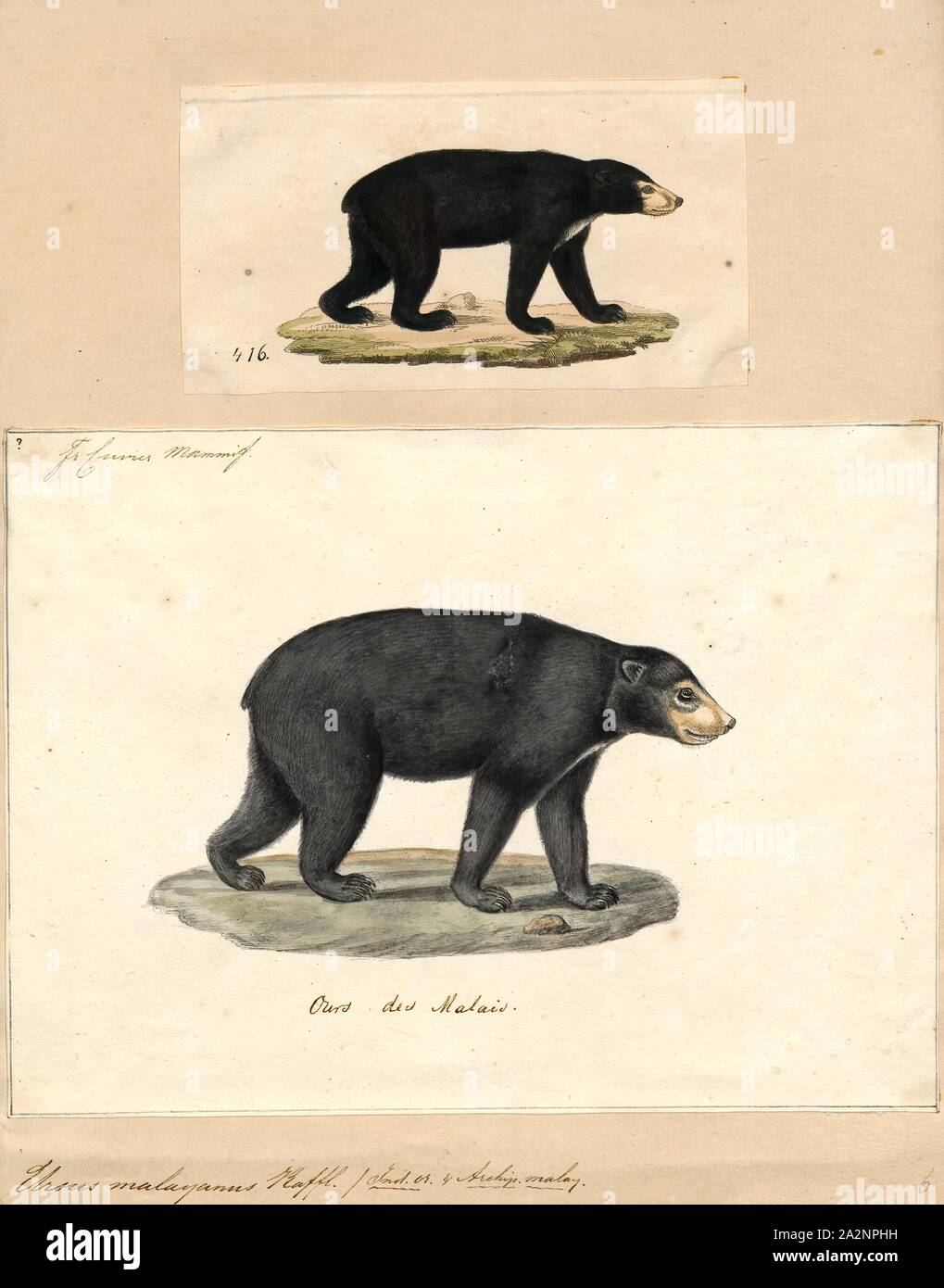 Ursus malayanus, Print, The sun bear (Helarctos malayanus) is a bear species occurring in tropical forest habitats of Southeast Asia. It is listed as Vulnerable on the IUCN Red List. The global population is thought to have declined by more than 30% over the past three bear generations. Suitable habitat has been dramatically reduced due to the large-scale deforestation that has occurred throughout Southeast Asia over the past three decades., 1700-1880 Stock Photohttps://www.alamy.com/image-license-details/?v=1https://www.alamy.com/ursus-malayanus-print-the-sun-bear-helarctos-malayanus-is-a-bear-species-occurring-in-tropical-forest-habitats-of-southeast-asia-it-is-listed-as-vulnerable-on-the-iucn-red-list-the-global-population-is-thought-to-have-declined-by-more-than-30-over-the-past-three-bear-generations-suitable-habitat-has-been-dramatically-reduced-due-to-the-large-scale-deforestation-that-has-occurred-throughout-southeast-asia-over-the-past-three-decades-1700-1880-image328705037.html
Ursus malayanus, Print, The sun bear (Helarctos malayanus) is a bear species occurring in tropical forest habitats of Southeast Asia. It is listed as Vulnerable on the IUCN Red List. The global population is thought to have declined by more than 30% over the past three bear generations. Suitable habitat has been dramatically reduced due to the large-scale deforestation that has occurred throughout Southeast Asia over the past three decades., 1700-1880 Stock Photohttps://www.alamy.com/image-license-details/?v=1https://www.alamy.com/ursus-malayanus-print-the-sun-bear-helarctos-malayanus-is-a-bear-species-occurring-in-tropical-forest-habitats-of-southeast-asia-it-is-listed-as-vulnerable-on-the-iucn-red-list-the-global-population-is-thought-to-have-declined-by-more-than-30-over-the-past-three-bear-generations-suitable-habitat-has-been-dramatically-reduced-due-to-the-large-scale-deforestation-that-has-occurred-throughout-southeast-asia-over-the-past-three-decades-1700-1880-image328705037.htmlRM2A2NPHH–Ursus malayanus, Print, The sun bear (Helarctos malayanus) is a bear species occurring in tropical forest habitats of Southeast Asia. It is listed as Vulnerable on the IUCN Red List. The global population is thought to have declined by more than 30% over the past three bear generations. Suitable habitat has been dramatically reduced due to the large-scale deforestation that has occurred throughout Southeast Asia over the past three decades., 1700-1880
 Iberian lynx or Lynx pardinus at wild life park Stock Photohttps://www.alamy.com/image-license-details/?v=1https://www.alamy.com/stock-photo-iberian-lynx-or-lynx-pardinus-at-wild-life-park-88739034.html
Iberian lynx or Lynx pardinus at wild life park Stock Photohttps://www.alamy.com/image-license-details/?v=1https://www.alamy.com/stock-photo-iberian-lynx-or-lynx-pardinus-at-wild-life-park-88739034.htmlRFF4ABF6–Iberian lynx or Lynx pardinus at wild life park
 Swamp Pink, Helonias bullata, plant suitable for wet habitats - swamps and wetlands peat bog plants peat moss flowers Stock Photohttps://www.alamy.com/image-license-details/?v=1https://www.alamy.com/swamp-pink-helonias-bullata-plant-suitable-for-wet-habitats-swamps-and-wetlands-peat-bog-plants-peat-moss-flowers-image245155204.html
Swamp Pink, Helonias bullata, plant suitable for wet habitats - swamps and wetlands peat bog plants peat moss flowers Stock Photohttps://www.alamy.com/image-license-details/?v=1https://www.alamy.com/swamp-pink-helonias-bullata-plant-suitable-for-wet-habitats-swamps-and-wetlands-peat-bog-plants-peat-moss-flowers-image245155204.htmlRMT6RNY0–Swamp Pink, Helonias bullata, plant suitable for wet habitats - swamps and wetlands peat bog plants peat moss flowers
 Common Blue (Polyommatus icarus) is a common butterfly found in suitable habitats in Turkey. Stock Photohttps://www.alamy.com/image-license-details/?v=1https://www.alamy.com/common-blue-polyommatus-icarus-is-a-common-butterfly-found-in-suitable-habitats-in-turkey-image602033371.html
Common Blue (Polyommatus icarus) is a common butterfly found in suitable habitats in Turkey. Stock Photohttps://www.alamy.com/image-license-details/?v=1https://www.alamy.com/common-blue-polyommatus-icarus-is-a-common-butterfly-found-in-suitable-habitats-in-turkey-image602033371.htmlRF2WYCYKR–Common Blue (Polyommatus icarus) is a common butterfly found in suitable habitats in Turkey.
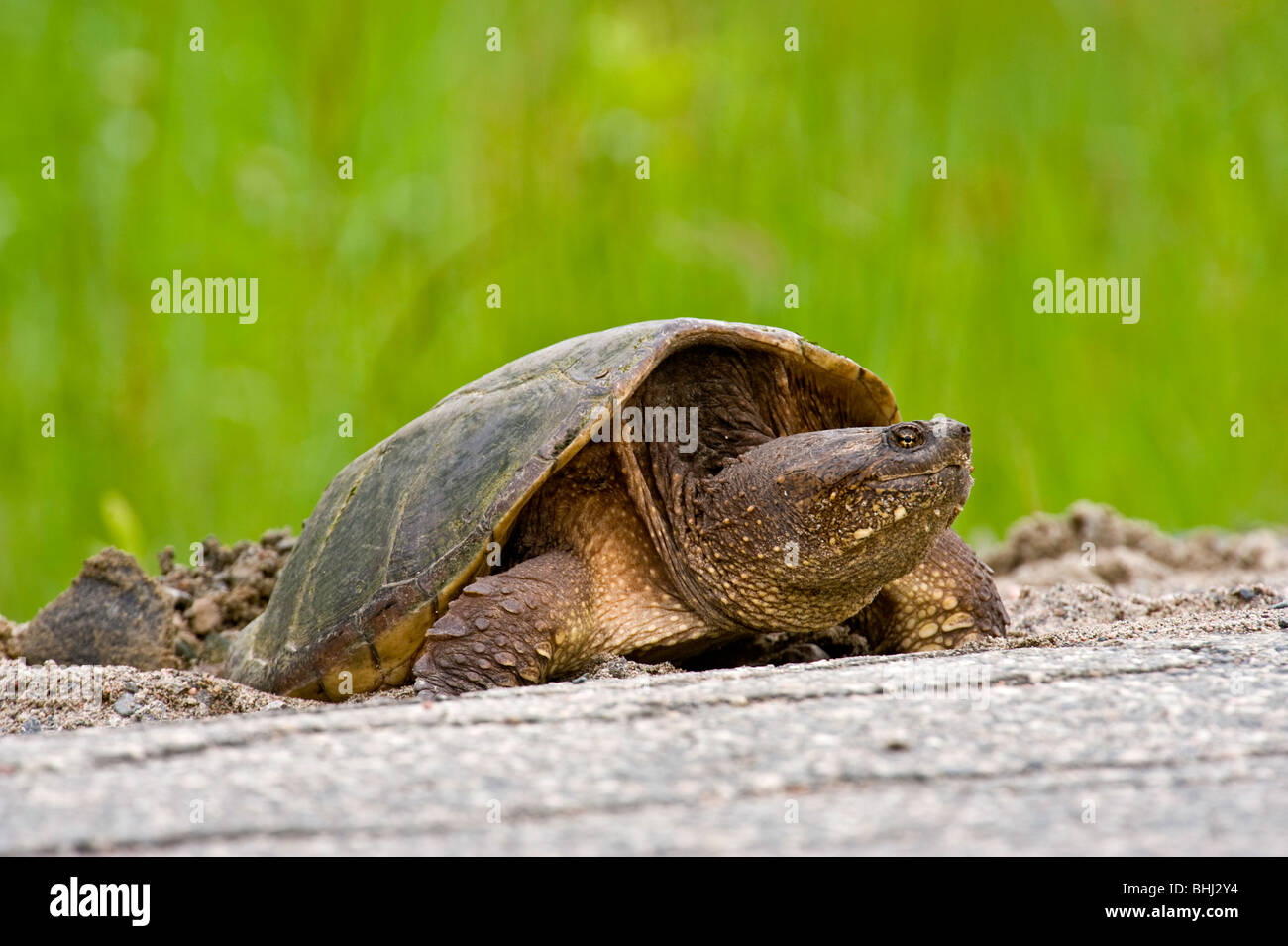 Snapping turtle (Chelydra serpentina) Female laying eggs in roadside gravel, Greater Sudbury, Ontario, Canada Stock Photohttps://www.alamy.com/image-license-details/?v=1https://www.alamy.com/stock-photo-snapping-turtle-chelydra-serpentina-female-laying-eggs-in-roadside-28056984.html
Snapping turtle (Chelydra serpentina) Female laying eggs in roadside gravel, Greater Sudbury, Ontario, Canada Stock Photohttps://www.alamy.com/image-license-details/?v=1https://www.alamy.com/stock-photo-snapping-turtle-chelydra-serpentina-female-laying-eggs-in-roadside-28056984.htmlRMBHJ2Y4–Snapping turtle (Chelydra serpentina) Female laying eggs in roadside gravel, Greater Sudbury, Ontario, Canada
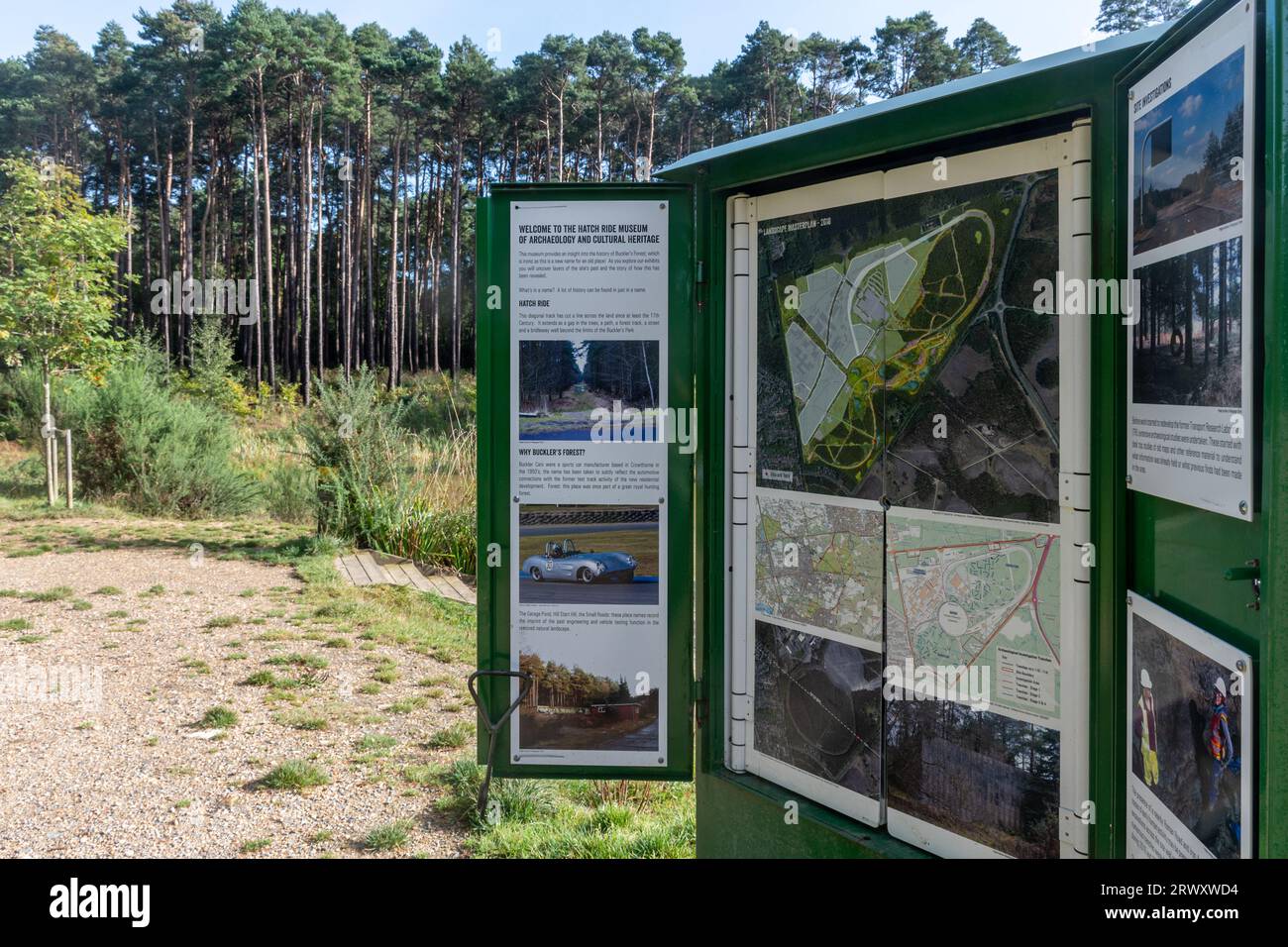 Repurposed green electrical box in Bucklers Forest, Crowthorne, Berkshire, England, UK, being used as a mini museum with information on local history Stock Photohttps://www.alamy.com/image-license-details/?v=1https://www.alamy.com/repurposed-green-electrical-box-in-bucklers-forest-crowthorne-berkshire-england-uk-being-used-as-a-mini-museum-with-information-on-local-history-image566688896.html
Repurposed green electrical box in Bucklers Forest, Crowthorne, Berkshire, England, UK, being used as a mini museum with information on local history Stock Photohttps://www.alamy.com/image-license-details/?v=1https://www.alamy.com/repurposed-green-electrical-box-in-bucklers-forest-crowthorne-berkshire-england-uk-being-used-as-a-mini-museum-with-information-on-local-history-image566688896.htmlRM2RWXWD4–Repurposed green electrical box in Bucklers Forest, Crowthorne, Berkshire, England, UK, being used as a mini museum with information on local history
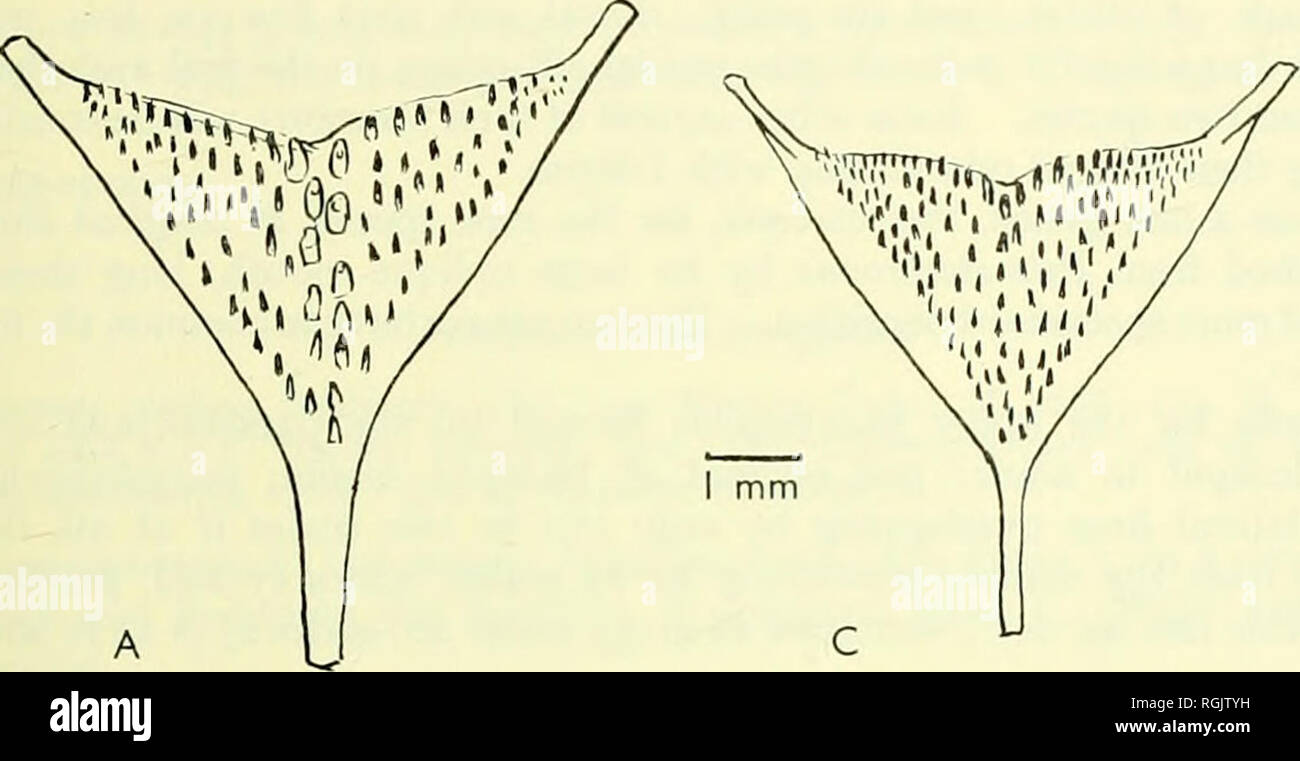 . Bulletin of the British Museum (Natural History). PELMATOCHROMIS, TILAPIA AND SAROTHERODON 9 finrays and gill-rakers are in agreement with H. bimactilatus and the arrangement of the circuh of the scales is gothic (see p. 14 and fig. 10). This species occurs in the Nile, whence the fish-fauna of Lake Rudolf is derived, and although it has not been caught in subsequent collections from the lake it is probably there in suitable habitats. This correction removes an apparent anomaly in the distribution of Pelmato- chroniis.. Please note that these images are extracted from scanned page images tha Stock Photohttps://www.alamy.com/image-license-details/?v=1https://www.alamy.com/bulletin-of-the-british-museum-natural-history-pelmatochromis-tilapia-and-sarotherodon-9-finrays-and-gill-rakers-are-in-agreement-with-h-bimactilatus-and-the-arrangement-of-the-circuh-of-the-scales-is-gothic-see-p-14-and-fig-10-this-species-occurs-in-the-nile-whence-the-fish-fauna-of-lake-rudolf-is-derived-and-although-it-has-not-been-caught-in-subsequent-collections-from-the-lake-it-is-probably-there-in-suitable-habitats-this-correction-removes-an-apparent-anomaly-in-the-distribution-of-pelmato-chroniis-please-note-that-these-images-are-extracted-from-scanned-page-images-tha-image233984005.html
. Bulletin of the British Museum (Natural History). PELMATOCHROMIS, TILAPIA AND SAROTHERODON 9 finrays and gill-rakers are in agreement with H. bimactilatus and the arrangement of the circuh of the scales is gothic (see p. 14 and fig. 10). This species occurs in the Nile, whence the fish-fauna of Lake Rudolf is derived, and although it has not been caught in subsequent collections from the lake it is probably there in suitable habitats. This correction removes an apparent anomaly in the distribution of Pelmato- chroniis.. Please note that these images are extracted from scanned page images tha Stock Photohttps://www.alamy.com/image-license-details/?v=1https://www.alamy.com/bulletin-of-the-british-museum-natural-history-pelmatochromis-tilapia-and-sarotherodon-9-finrays-and-gill-rakers-are-in-agreement-with-h-bimactilatus-and-the-arrangement-of-the-circuh-of-the-scales-is-gothic-see-p-14-and-fig-10-this-species-occurs-in-the-nile-whence-the-fish-fauna-of-lake-rudolf-is-derived-and-although-it-has-not-been-caught-in-subsequent-collections-from-the-lake-it-is-probably-there-in-suitable-habitats-this-correction-removes-an-apparent-anomaly-in-the-distribution-of-pelmato-chroniis-please-note-that-these-images-are-extracted-from-scanned-page-images-tha-image233984005.htmlRMRGJTYH–. Bulletin of the British Museum (Natural History). PELMATOCHROMIS, TILAPIA AND SAROTHERODON 9 finrays and gill-rakers are in agreement with H. bimactilatus and the arrangement of the circuh of the scales is gothic (see p. 14 and fig. 10). This species occurs in the Nile, whence the fish-fauna of Lake Rudolf is derived, and although it has not been caught in subsequent collections from the lake it is probably there in suitable habitats. This correction removes an apparent anomaly in the distribution of Pelmato- chroniis.. Please note that these images are extracted from scanned page images tha
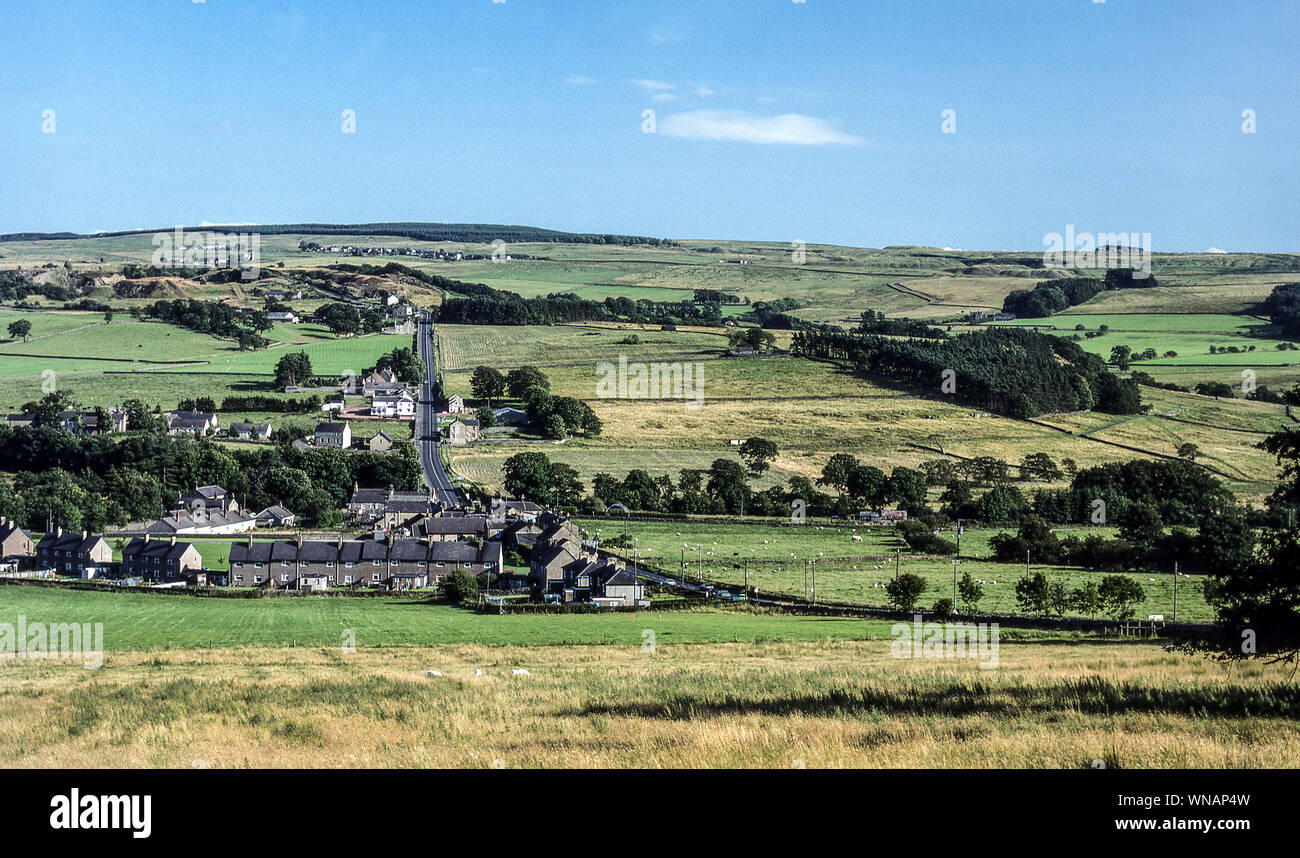 West Woodburn village in its Northumberland landscape.The village is near the Northumberland National Park.North East England. Stock Photohttps://www.alamy.com/image-license-details/?v=1https://www.alamy.com/west-woodburn-village-in-its-northumberland-landscapethe-village-is-near-the-northumberland-national-parknorth-east-england-image271300201.html
West Woodburn village in its Northumberland landscape.The village is near the Northumberland National Park.North East England. Stock Photohttps://www.alamy.com/image-license-details/?v=1https://www.alamy.com/west-woodburn-village-in-its-northumberland-landscapethe-village-is-near-the-northumberland-national-parknorth-east-england-image271300201.htmlRMWNAP4W–West Woodburn village in its Northumberland landscape.The village is near the Northumberland National Park.North East England.
 Seldom seen because of their secretive habits, the Dwarf Bittern is probably more widespread in suitable habitats than previously thought. Stock Photohttps://www.alamy.com/image-license-details/?v=1https://www.alamy.com/seldom-seen-because-of-their-secretive-habits-the-dwarf-bittern-is-probably-more-widespread-in-suitable-habitats-than-previously-thought-image616666315.html
Seldom seen because of their secretive habits, the Dwarf Bittern is probably more widespread in suitable habitats than previously thought. Stock Photohttps://www.alamy.com/image-license-details/?v=1https://www.alamy.com/seldom-seen-because-of-their-secretive-habits-the-dwarf-bittern-is-probably-more-widespread-in-suitable-habitats-than-previously-thought-image616666315.htmlRM2XR7G4Y–Seldom seen because of their secretive habits, the Dwarf Bittern is probably more widespread in suitable habitats than previously thought.
 Curlew in breeding habitat on the North Wales moorland Stock Photohttps://www.alamy.com/image-license-details/?v=1https://www.alamy.com/curlew-in-breeding-habitat-on-the-north-wales-moorland-image468019930.html
Curlew in breeding habitat on the North Wales moorland Stock Photohttps://www.alamy.com/image-license-details/?v=1https://www.alamy.com/curlew-in-breeding-habitat-on-the-north-wales-moorland-image468019930.htmlRF2J5C45E–Curlew in breeding habitat on the North Wales moorland
 Aylesbury Vale, Buckinghamshire, UK. 7th May, 2021. HS2 were scraping the ancient woodland floor from Jones Hill Wood today and putting it in dumper trucks. They were then tipping it onto a receptor field as part of their mitigation for destroying ancient woodland. They have also put some felled tree limbs into the area to supposedly make a new environment suitable for wildlife. Jones Hill Wood is said to have inspired local author Roald Dahl to write the popular children's novel, The Fantastic Mr Fox. The High Speed Rail 2 from London to Birmingham is carving a huge scar across the Chilterns. Stock Photohttps://www.alamy.com/image-license-details/?v=1https://www.alamy.com/aylesbury-vale-buckinghamshire-uk-7th-may-2021-hs2-were-scraping-the-ancient-woodland-floor-from-jones-hill-wood-today-and-putting-it-in-dumper-trucks-they-were-then-tipping-it-onto-a-receptor-field-as-part-of-their-mitigation-for-destroying-ancient-woodland-they-have-also-put-some-felled-tree-limbs-into-the-area-to-supposedly-make-a-new-environment-suitable-for-wildlife-jones-hill-wood-is-said-to-have-inspired-local-author-roald-dahl-to-write-the-popular-childrens-novel-the-fantastic-mr-fox-the-high-speed-rail-2-from-london-to-birmingham-is-carving-a-huge-scar-across-the-chilterns-image425572046.html
Aylesbury Vale, Buckinghamshire, UK. 7th May, 2021. HS2 were scraping the ancient woodland floor from Jones Hill Wood today and putting it in dumper trucks. They were then tipping it onto a receptor field as part of their mitigation for destroying ancient woodland. They have also put some felled tree limbs into the area to supposedly make a new environment suitable for wildlife. Jones Hill Wood is said to have inspired local author Roald Dahl to write the popular children's novel, The Fantastic Mr Fox. The High Speed Rail 2 from London to Birmingham is carving a huge scar across the Chilterns. Stock Photohttps://www.alamy.com/image-license-details/?v=1https://www.alamy.com/aylesbury-vale-buckinghamshire-uk-7th-may-2021-hs2-were-scraping-the-ancient-woodland-floor-from-jones-hill-wood-today-and-putting-it-in-dumper-trucks-they-were-then-tipping-it-onto-a-receptor-field-as-part-of-their-mitigation-for-destroying-ancient-woodland-they-have-also-put-some-felled-tree-limbs-into-the-area-to-supposedly-make-a-new-environment-suitable-for-wildlife-jones-hill-wood-is-said-to-have-inspired-local-author-roald-dahl-to-write-the-popular-childrens-novel-the-fantastic-mr-fox-the-high-speed-rail-2-from-london-to-birmingham-is-carving-a-huge-scar-across-the-chilterns-image425572046.htmlRM2FMADDJ–Aylesbury Vale, Buckinghamshire, UK. 7th May, 2021. HS2 were scraping the ancient woodland floor from Jones Hill Wood today and putting it in dumper trucks. They were then tipping it onto a receptor field as part of their mitigation for destroying ancient woodland. They have also put some felled tree limbs into the area to supposedly make a new environment suitable for wildlife. Jones Hill Wood is said to have inspired local author Roald Dahl to write the popular children's novel, The Fantastic Mr Fox. The High Speed Rail 2 from London to Birmingham is carving a huge scar across the Chilterns.
 Curlew have been a declining species in the UK over the last few decades due to changes in farming practices and drainage of suitable nesting habitat Stock Photohttps://www.alamy.com/image-license-details/?v=1https://www.alamy.com/curlew-have-been-a-declining-species-in-the-uk-over-the-last-few-decades-due-to-changes-in-farming-practices-and-drainage-of-suitable-nesting-habitat-image451214959.html
Curlew have been a declining species in the UK over the last few decades due to changes in farming practices and drainage of suitable nesting habitat Stock Photohttps://www.alamy.com/image-license-details/?v=1https://www.alamy.com/curlew-have-been-a-declining-species-in-the-uk-over-the-last-few-decades-due-to-changes-in-farming-practices-and-drainage-of-suitable-nesting-habitat-image451214959.htmlRF2H62H7Y–Curlew have been a declining species in the UK over the last few decades due to changes in farming practices and drainage of suitable nesting habitat
 Mallard duck, green body, brownish body, wild duck, glossy green head, grey wings and belly, suitable wetland habitats, shallow sanctuaries, yellow. Stock Photohttps://www.alamy.com/image-license-details/?v=1https://www.alamy.com/mallard-duck-green-body-brownish-body-wild-duck-glossy-green-head-grey-wings-and-belly-suitable-wetland-habitats-shallow-sanctuaries-yellow-image439579995.html
Mallard duck, green body, brownish body, wild duck, glossy green head, grey wings and belly, suitable wetland habitats, shallow sanctuaries, yellow. Stock Photohttps://www.alamy.com/image-license-details/?v=1https://www.alamy.com/mallard-duck-green-body-brownish-body-wild-duck-glossy-green-head-grey-wings-and-belly-suitable-wetland-habitats-shallow-sanctuaries-yellow-image439579995.htmlRF2GF4GNF–Mallard duck, green body, brownish body, wild duck, glossy green head, grey wings and belly, suitable wetland habitats, shallow sanctuaries, yellow.
 South-west France.Dept.Pyrenees-Atlantiques. Sunset over the Pyrenees. Stock Photohttps://www.alamy.com/image-license-details/?v=1https://www.alamy.com/south-west-francedeptpyrenees-atlantiques-sunset-over-the-pyrenees-image227726622.html
South-west France.Dept.Pyrenees-Atlantiques. Sunset over the Pyrenees. Stock Photohttps://www.alamy.com/image-license-details/?v=1https://www.alamy.com/south-west-francedeptpyrenees-atlantiques-sunset-over-the-pyrenees-image227726622.htmlRMR6DRHJ–South-west France.Dept.Pyrenees-Atlantiques. Sunset over the Pyrenees.
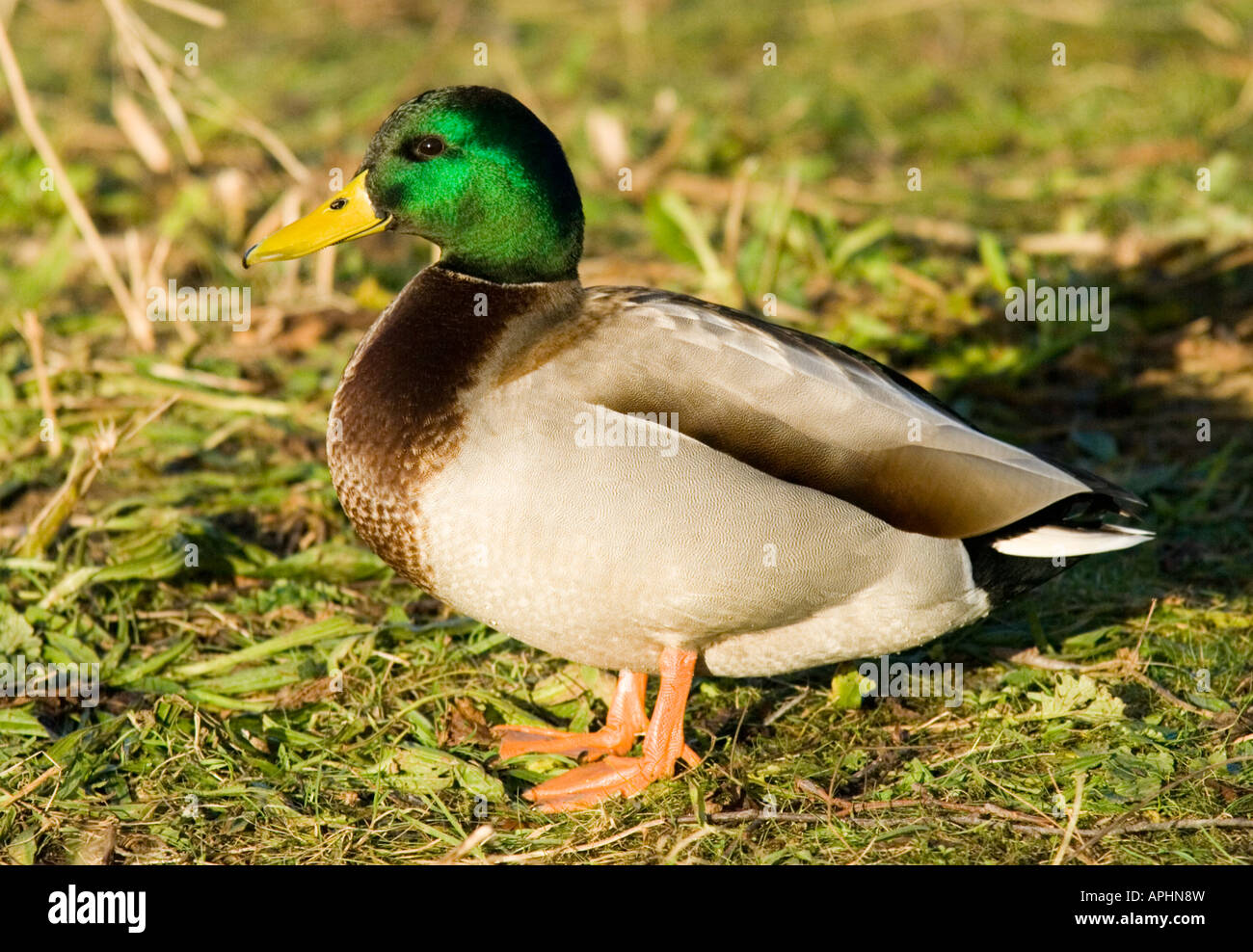 Mallard duck, green body, brownish body, wild duck, glossy green head, grey wings and belly, suitable wetland habitats, shallow sanctuaries, yellow. Stock Photohttps://www.alamy.com/image-license-details/?v=1https://www.alamy.com/stock-photo-mallard-duck-green-body-brownish-body-wild-duck-glossy-green-head-15796920.html
Mallard duck, green body, brownish body, wild duck, glossy green head, grey wings and belly, suitable wetland habitats, shallow sanctuaries, yellow. Stock Photohttps://www.alamy.com/image-license-details/?v=1https://www.alamy.com/stock-photo-mallard-duck-green-body-brownish-body-wild-duck-glossy-green-head-15796920.htmlRFAPHN8W–Mallard duck, green body, brownish body, wild duck, glossy green head, grey wings and belly, suitable wetland habitats, shallow sanctuaries, yellow.
 Young women dancing in a rehearsal before a ceremonial event attended by Indonesian officials, which is to release Rote Island's endemic snake-necked turtle (Chelodina mccordi) to one of the suitable habitats in Lake Peto, Maubesi village, Rote Island, Indonesia. Stock Photohttps://www.alamy.com/image-license-details/?v=1https://www.alamy.com/young-women-dancing-in-a-rehearsal-before-a-ceremonial-event-attended-by-indonesian-officials-which-is-to-release-rote-islands-endemic-snake-necked-turtle-chelodina-mccordi-to-one-of-the-suitable-habitats-in-lake-peto-maubesi-village-rote-island-indonesia-image414779911.html
Young women dancing in a rehearsal before a ceremonial event attended by Indonesian officials, which is to release Rote Island's endemic snake-necked turtle (Chelodina mccordi) to one of the suitable habitats in Lake Peto, Maubesi village, Rote Island, Indonesia. Stock Photohttps://www.alamy.com/image-license-details/?v=1https://www.alamy.com/young-women-dancing-in-a-rehearsal-before-a-ceremonial-event-attended-by-indonesian-officials-which-is-to-release-rote-islands-endemic-snake-necked-turtle-chelodina-mccordi-to-one-of-the-suitable-habitats-in-lake-peto-maubesi-village-rote-island-indonesia-image414779911.htmlRM2F2PT07–Young women dancing in a rehearsal before a ceremonial event attended by Indonesian officials, which is to release Rote Island's endemic snake-necked turtle (Chelodina mccordi) to one of the suitable habitats in Lake Peto, Maubesi village, Rote Island, Indonesia.
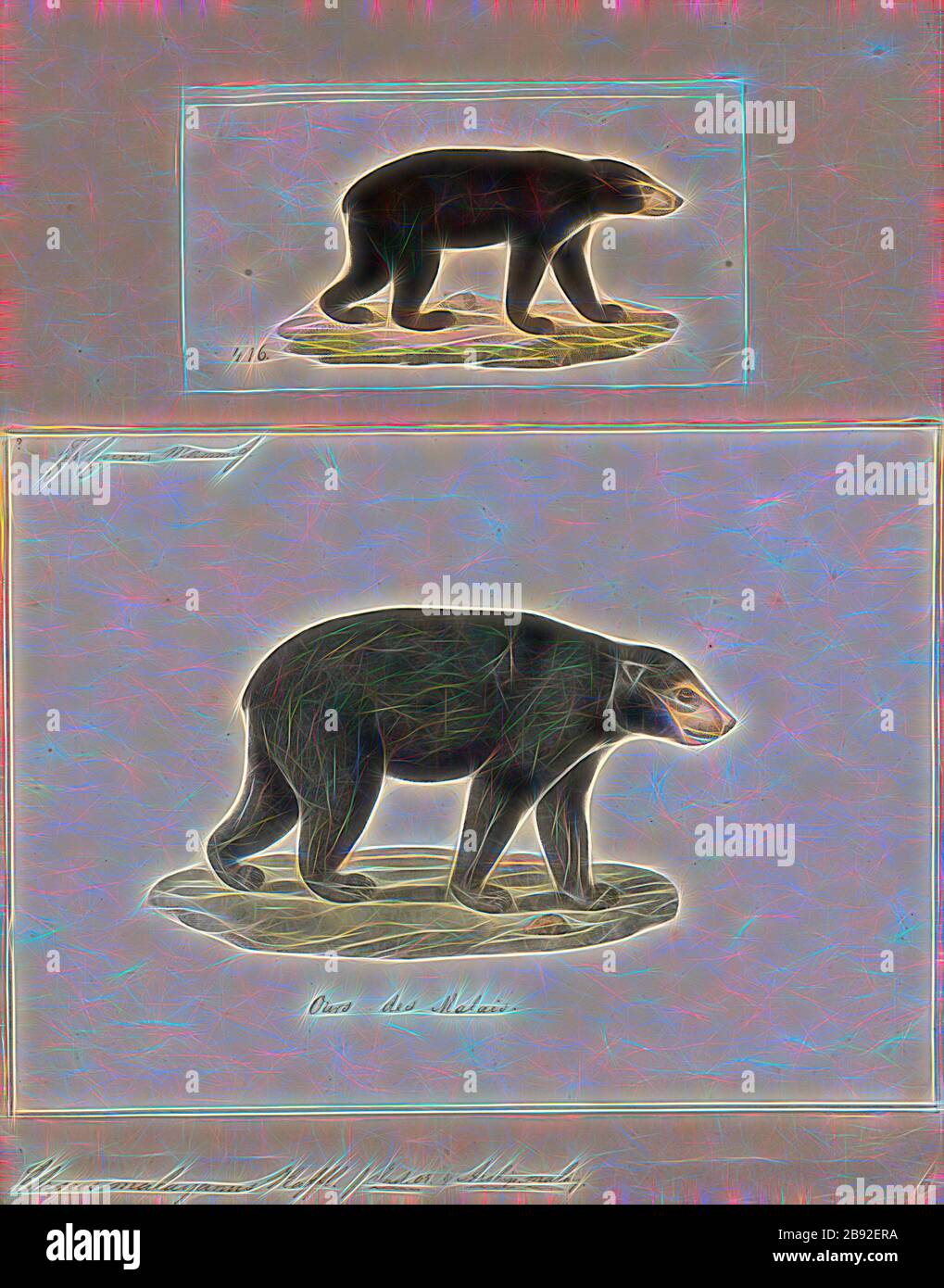 Ursus malayanus, Print, The sun bear (Helarctos malayanus) is a bear species occurring in tropical forest habitats of Southeast Asia. It is listed as Vulnerable on the IUCN Red List. The global population is thought to have declined by more than 30% over the past three bear generations. Suitable habitat has been dramatically reduced due to the large-scale deforestation that has occurred throughout Southeast Asia over the past three decades., 1700-1880, Reimagined by Gibon, design of warm cheerful glowing of brightness and light rays radiance. Classic art reinvented with a modern twist. Photogr Stock Photohttps://www.alamy.com/image-license-details/?v=1https://www.alamy.com/ursus-malayanus-print-the-sun-bear-helarctos-malayanus-is-a-bear-species-occurring-in-tropical-forest-habitats-of-southeast-asia-it-is-listed-as-vulnerable-on-the-iucn-red-list-the-global-population-is-thought-to-have-declined-by-more-than-30-over-the-past-three-bear-generations-suitable-habitat-has-been-dramatically-reduced-due-to-the-large-scale-deforestation-that-has-occurred-throughout-southeast-asia-over-the-past-three-decades-1700-1880-reimagined-by-gibon-design-of-warm-cheerful-glowing-of-brightness-and-light-rays-radiance-classic-art-reinvented-with-a-modern-twist-photogr-image349794798.html
Ursus malayanus, Print, The sun bear (Helarctos malayanus) is a bear species occurring in tropical forest habitats of Southeast Asia. It is listed as Vulnerable on the IUCN Red List. The global population is thought to have declined by more than 30% over the past three bear generations. Suitable habitat has been dramatically reduced due to the large-scale deforestation that has occurred throughout Southeast Asia over the past three decades., 1700-1880, Reimagined by Gibon, design of warm cheerful glowing of brightness and light rays radiance. Classic art reinvented with a modern twist. Photogr Stock Photohttps://www.alamy.com/image-license-details/?v=1https://www.alamy.com/ursus-malayanus-print-the-sun-bear-helarctos-malayanus-is-a-bear-species-occurring-in-tropical-forest-habitats-of-southeast-asia-it-is-listed-as-vulnerable-on-the-iucn-red-list-the-global-population-is-thought-to-have-declined-by-more-than-30-over-the-past-three-bear-generations-suitable-habitat-has-been-dramatically-reduced-due-to-the-large-scale-deforestation-that-has-occurred-throughout-southeast-asia-over-the-past-three-decades-1700-1880-reimagined-by-gibon-design-of-warm-cheerful-glowing-of-brightness-and-light-rays-radiance-classic-art-reinvented-with-a-modern-twist-photogr-image349794798.htmlRF2B92ERA–Ursus malayanus, Print, The sun bear (Helarctos malayanus) is a bear species occurring in tropical forest habitats of Southeast Asia. It is listed as Vulnerable on the IUCN Red List. The global population is thought to have declined by more than 30% over the past three bear generations. Suitable habitat has been dramatically reduced due to the large-scale deforestation that has occurred throughout Southeast Asia over the past three decades., 1700-1880, Reimagined by Gibon, design of warm cheerful glowing of brightness and light rays radiance. Classic art reinvented with a modern twist. Photogr
RF2RADGY7–Conservation Icon image. Suitable for mobile application.
 The Waterbuck is a large antelope found widely in Sub-Saharan Africa. Defassa Waterbuck (Kobus ellipsyprymnus defassa) are found in all suitable habitats in all four of Uganda's Savannah national parks. (Photo from Feb. 2015) | usage worldwide Stock Photohttps://www.alamy.com/image-license-details/?v=1https://www.alamy.com/stock-photo-the-waterbuck-is-a-large-antelope-found-widely-in-sub-saharan-africa-122036063.html
The Waterbuck is a large antelope found widely in Sub-Saharan Africa. Defassa Waterbuck (Kobus ellipsyprymnus defassa) are found in all suitable habitats in all four of Uganda's Savannah national parks. (Photo from Feb. 2015) | usage worldwide Stock Photohttps://www.alamy.com/image-license-details/?v=1https://www.alamy.com/stock-photo-the-waterbuck-is-a-large-antelope-found-widely-in-sub-saharan-africa-122036063.htmlRMH2F66R–The Waterbuck is a large antelope found widely in Sub-Saharan Africa. Defassa Waterbuck (Kobus ellipsyprymnus defassa) are found in all suitable habitats in all four of Uganda's Savannah national parks. (Photo from Feb. 2015) | usage worldwide
 Ursus malayanus, Print, The sun bear (Helarctos malayanus) is a bear species occurring in tropical forest habitats of Southeast Asia. It is listed as Vulnerable on the IUCN Red List. The global population is thought to have declined by more than 30% over the past three bear generations. Suitable habitat has been dramatically reduced due to the large-scale deforestation that has occurred throughout Southeast Asia over the past three decades., 1700-1880 Stock Photohttps://www.alamy.com/image-license-details/?v=1https://www.alamy.com/ursus-malayanus-print-the-sun-bear-helarctos-malayanus-is-a-bear-species-occurring-in-tropical-forest-habitats-of-southeast-asia-it-is-listed-as-vulnerable-on-the-iucn-red-list-the-global-population-is-thought-to-have-declined-by-more-than-30-over-the-past-three-bear-generations-suitable-habitat-has-been-dramatically-reduced-due-to-the-large-scale-deforestation-that-has-occurred-throughout-southeast-asia-over-the-past-three-decades-1700-1880-image328705036.html
Ursus malayanus, Print, The sun bear (Helarctos malayanus) is a bear species occurring in tropical forest habitats of Southeast Asia. It is listed as Vulnerable on the IUCN Red List. The global population is thought to have declined by more than 30% over the past three bear generations. Suitable habitat has been dramatically reduced due to the large-scale deforestation that has occurred throughout Southeast Asia over the past three decades., 1700-1880 Stock Photohttps://www.alamy.com/image-license-details/?v=1https://www.alamy.com/ursus-malayanus-print-the-sun-bear-helarctos-malayanus-is-a-bear-species-occurring-in-tropical-forest-habitats-of-southeast-asia-it-is-listed-as-vulnerable-on-the-iucn-red-list-the-global-population-is-thought-to-have-declined-by-more-than-30-over-the-past-three-bear-generations-suitable-habitat-has-been-dramatically-reduced-due-to-the-large-scale-deforestation-that-has-occurred-throughout-southeast-asia-over-the-past-three-decades-1700-1880-image328705036.htmlRM2A2NPHG–Ursus malayanus, Print, The sun bear (Helarctos malayanus) is a bear species occurring in tropical forest habitats of Southeast Asia. It is listed as Vulnerable on the IUCN Red List. The global population is thought to have declined by more than 30% over the past three bear generations. Suitable habitat has been dramatically reduced due to the large-scale deforestation that has occurred throughout Southeast Asia over the past three decades., 1700-1880
 Wiesbaden, Germany. 08th Nov, 2019. Biologists have bred this small European pond turtle, which is now being prepared for reintroduction into the wild. As soon as the animal is big enough, it will be reintroduced by experts in suitable habitats in Hesse and Rhineland-Palatinate. Credit: Boris Roessler/dpa/Alamy Live News Stock Photohttps://www.alamy.com/image-license-details/?v=1https://www.alamy.com/wiesbaden-germany-08th-nov-2019-biologists-have-bred-this-small-european-pond-turtle-which-is-now-being-prepared-for-reintroduction-into-the-wild-as-soon-as-the-animal-is-big-enough-it-will-be-reintroduced-by-experts-in-suitable-habitats-in-hesse-and-rhineland-palatinate-credit-boris-roesslerdpaalamy-live-news-image333088691.html
Wiesbaden, Germany. 08th Nov, 2019. Biologists have bred this small European pond turtle, which is now being prepared for reintroduction into the wild. As soon as the animal is big enough, it will be reintroduced by experts in suitable habitats in Hesse and Rhineland-Palatinate. Credit: Boris Roessler/dpa/Alamy Live News Stock Photohttps://www.alamy.com/image-license-details/?v=1https://www.alamy.com/wiesbaden-germany-08th-nov-2019-biologists-have-bred-this-small-european-pond-turtle-which-is-now-being-prepared-for-reintroduction-into-the-wild-as-soon-as-the-animal-is-big-enough-it-will-be-reintroduced-by-experts-in-suitable-habitats-in-hesse-and-rhineland-palatinate-credit-boris-roesslerdpaalamy-live-news-image333088691.htmlRM2A9WE0K–Wiesbaden, Germany. 08th Nov, 2019. Biologists have bred this small European pond turtle, which is now being prepared for reintroduction into the wild. As soon as the animal is big enough, it will be reintroduced by experts in suitable habitats in Hesse and Rhineland-Palatinate. Credit: Boris Roessler/dpa/Alamy Live News
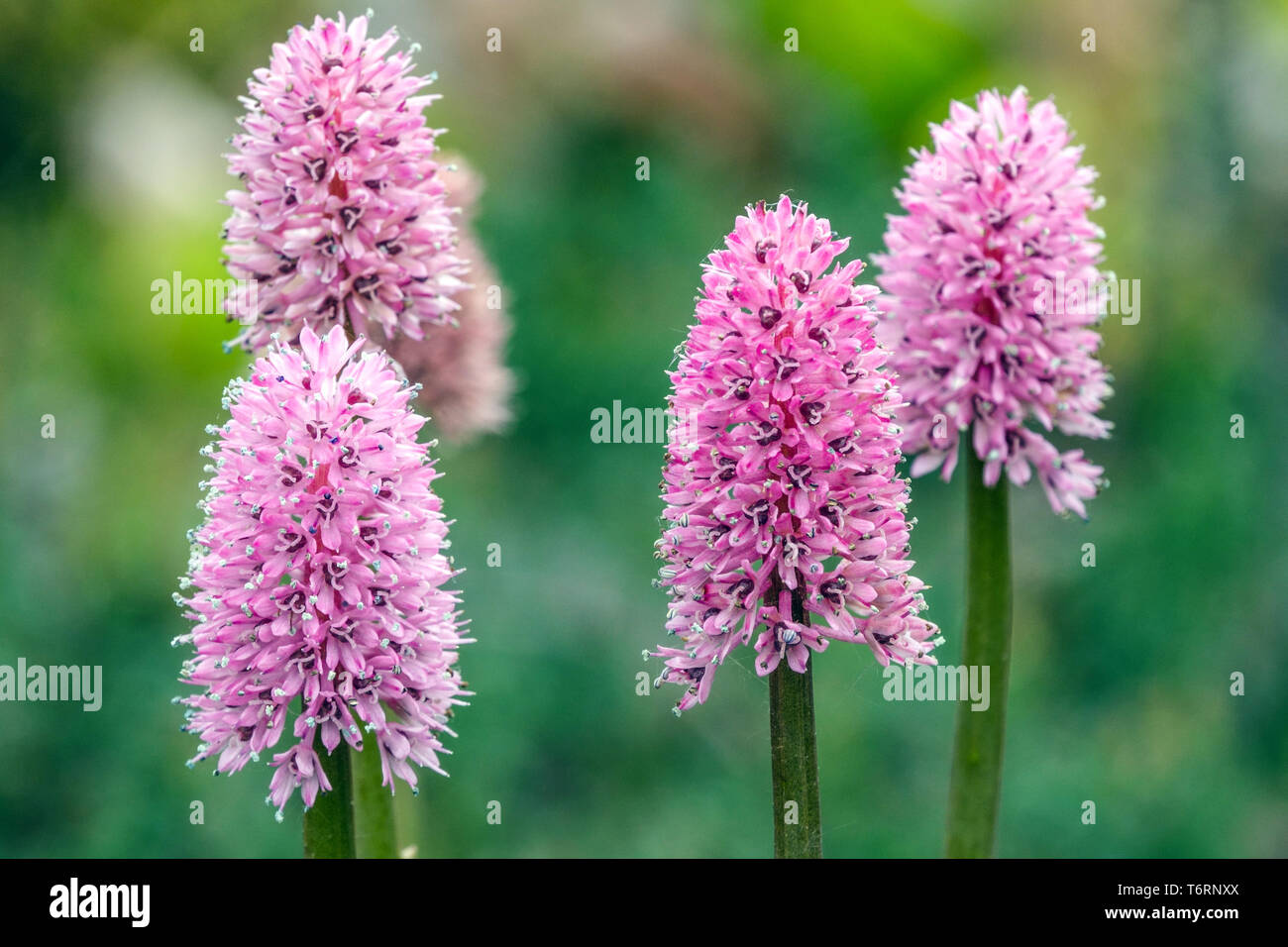 Swamp Pink, Helonias bullata, plant suitable for wet habitats - swamps and wetlands Peat bog flowers plants peat moss flowers stud flower Stock Photohttps://www.alamy.com/image-license-details/?v=1https://www.alamy.com/swamp-pink-helonias-bullata-plant-suitable-for-wet-habitats-swamps-and-wetlands-peat-bog-flowers-plants-peat-moss-flowers-stud-flower-image245155202.html
Swamp Pink, Helonias bullata, plant suitable for wet habitats - swamps and wetlands Peat bog flowers plants peat moss flowers stud flower Stock Photohttps://www.alamy.com/image-license-details/?v=1https://www.alamy.com/swamp-pink-helonias-bullata-plant-suitable-for-wet-habitats-swamps-and-wetlands-peat-bog-flowers-plants-peat-moss-flowers-stud-flower-image245155202.htmlRMT6RNXX–Swamp Pink, Helonias bullata, plant suitable for wet habitats - swamps and wetlands Peat bog flowers plants peat moss flowers stud flower
 Common Blue (Polyommatus icarus) is a common butterfly found in suitable habitats in Turkey. Stock Photohttps://www.alamy.com/image-license-details/?v=1https://www.alamy.com/common-blue-polyommatus-icarus-is-a-common-butterfly-found-in-suitable-habitats-in-turkey-image602033384.html
Common Blue (Polyommatus icarus) is a common butterfly found in suitable habitats in Turkey. Stock Photohttps://www.alamy.com/image-license-details/?v=1https://www.alamy.com/common-blue-polyommatus-icarus-is-a-common-butterfly-found-in-suitable-habitats-in-turkey-image602033384.htmlRF2WYCYM8–Common Blue (Polyommatus icarus) is a common butterfly found in suitable habitats in Turkey.
 Snapping turtle (Chelydra serpentina) Female laying eggs in roadside gravel, Greater Sudbury, Ontario, Canada Stock Photohttps://www.alamy.com/image-license-details/?v=1https://www.alamy.com/stock-photo-snapping-turtle-chelydra-serpentina-female-laying-eggs-in-roadside-28057075.html
Snapping turtle (Chelydra serpentina) Female laying eggs in roadside gravel, Greater Sudbury, Ontario, Canada Stock Photohttps://www.alamy.com/image-license-details/?v=1https://www.alamy.com/stock-photo-snapping-turtle-chelydra-serpentina-female-laying-eggs-in-roadside-28057075.htmlRMBHJ32B–Snapping turtle (Chelydra serpentina) Female laying eggs in roadside gravel, Greater Sudbury, Ontario, Canada
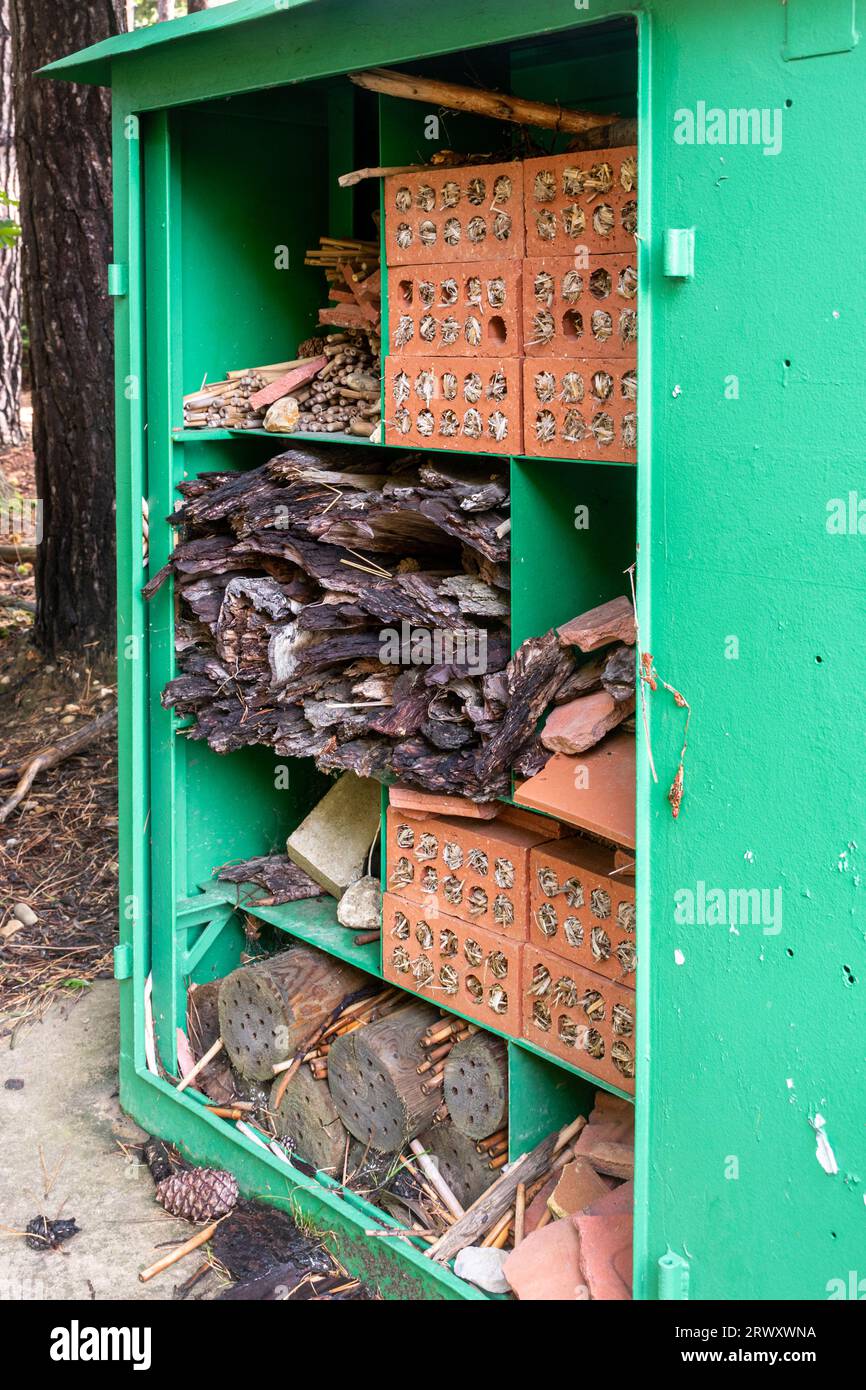 Repurposed old green electrical box in Bucklers Forest, Crowthorne, Berkshire, England, UK, being used as an insect habitat Stock Photohttps://www.alamy.com/image-license-details/?v=1https://www.alamy.com/repurposed-old-green-electrical-box-in-bucklers-forest-crowthorne-berkshire-england-uk-being-used-as-an-insect-habitat-image566689126.html
Repurposed old green electrical box in Bucklers Forest, Crowthorne, Berkshire, England, UK, being used as an insect habitat Stock Photohttps://www.alamy.com/image-license-details/?v=1https://www.alamy.com/repurposed-old-green-electrical-box-in-bucklers-forest-crowthorne-berkshire-england-uk-being-used-as-an-insect-habitat-image566689126.htmlRM2RWXWNA–Repurposed old green electrical box in Bucklers Forest, Crowthorne, Berkshire, England, UK, being used as an insect habitat
 . Bulletin. Natural history; Natural history. November, 1961 Smith: Amphibians and Reptiles of Illinois 77 Habits.—Fowler's toad is one of the most conspicuous amphibians in the southern half of Illinois and it is abundant in almost all suitable habitats. It may be encountered day or night; during the hottest part of the summer it is found less frequently during. Fig. 64.—Distribution of Bufo icoodhotisei. Hatching indicates the presumed range of the subspecies foivleri in Illinois; solid circles indicate localities represented by specimens examined during this study; open circles, localities Stock Photohttps://www.alamy.com/image-license-details/?v=1https://www.alamy.com/bulletin-natural-history-natural-history-november-1961-smith-amphibians-and-reptiles-of-illinois-77-habitsfowlers-toad-is-one-of-the-most-conspicuous-amphibians-in-the-southern-half-of-illinois-and-it-is-abundant-in-almost-all-suitable-habitats-it-may-be-encountered-day-or-night-during-the-hottest-part-of-the-summer-it-is-found-less-frequently-during-fig-64distribution-of-bufo-icoodhotisei-hatching-indicates-the-presumed-range-of-the-subspecies-foivleri-in-illinois-solid-circles-indicate-localities-represented-by-specimens-examined-during-this-study-open-circles-localities-image234127909.html
. Bulletin. Natural history; Natural history. November, 1961 Smith: Amphibians and Reptiles of Illinois 77 Habits.—Fowler's toad is one of the most conspicuous amphibians in the southern half of Illinois and it is abundant in almost all suitable habitats. It may be encountered day or night; during the hottest part of the summer it is found less frequently during. Fig. 64.—Distribution of Bufo icoodhotisei. Hatching indicates the presumed range of the subspecies foivleri in Illinois; solid circles indicate localities represented by specimens examined during this study; open circles, localities Stock Photohttps://www.alamy.com/image-license-details/?v=1https://www.alamy.com/bulletin-natural-history-natural-history-november-1961-smith-amphibians-and-reptiles-of-illinois-77-habitsfowlers-toad-is-one-of-the-most-conspicuous-amphibians-in-the-southern-half-of-illinois-and-it-is-abundant-in-almost-all-suitable-habitats-it-may-be-encountered-day-or-night-during-the-hottest-part-of-the-summer-it-is-found-less-frequently-during-fig-64distribution-of-bufo-icoodhotisei-hatching-indicates-the-presumed-range-of-the-subspecies-foivleri-in-illinois-solid-circles-indicate-localities-represented-by-specimens-examined-during-this-study-open-circles-localities-image234127909.htmlRMRGWCF1–. Bulletin. Natural history; Natural history. November, 1961 Smith: Amphibians and Reptiles of Illinois 77 Habits.—Fowler's toad is one of the most conspicuous amphibians in the southern half of Illinois and it is abundant in almost all suitable habitats. It may be encountered day or night; during the hottest part of the summer it is found less frequently during. Fig. 64.—Distribution of Bufo icoodhotisei. Hatching indicates the presumed range of the subspecies foivleri in Illinois; solid circles indicate localities represented by specimens examined during this study; open circles, localities
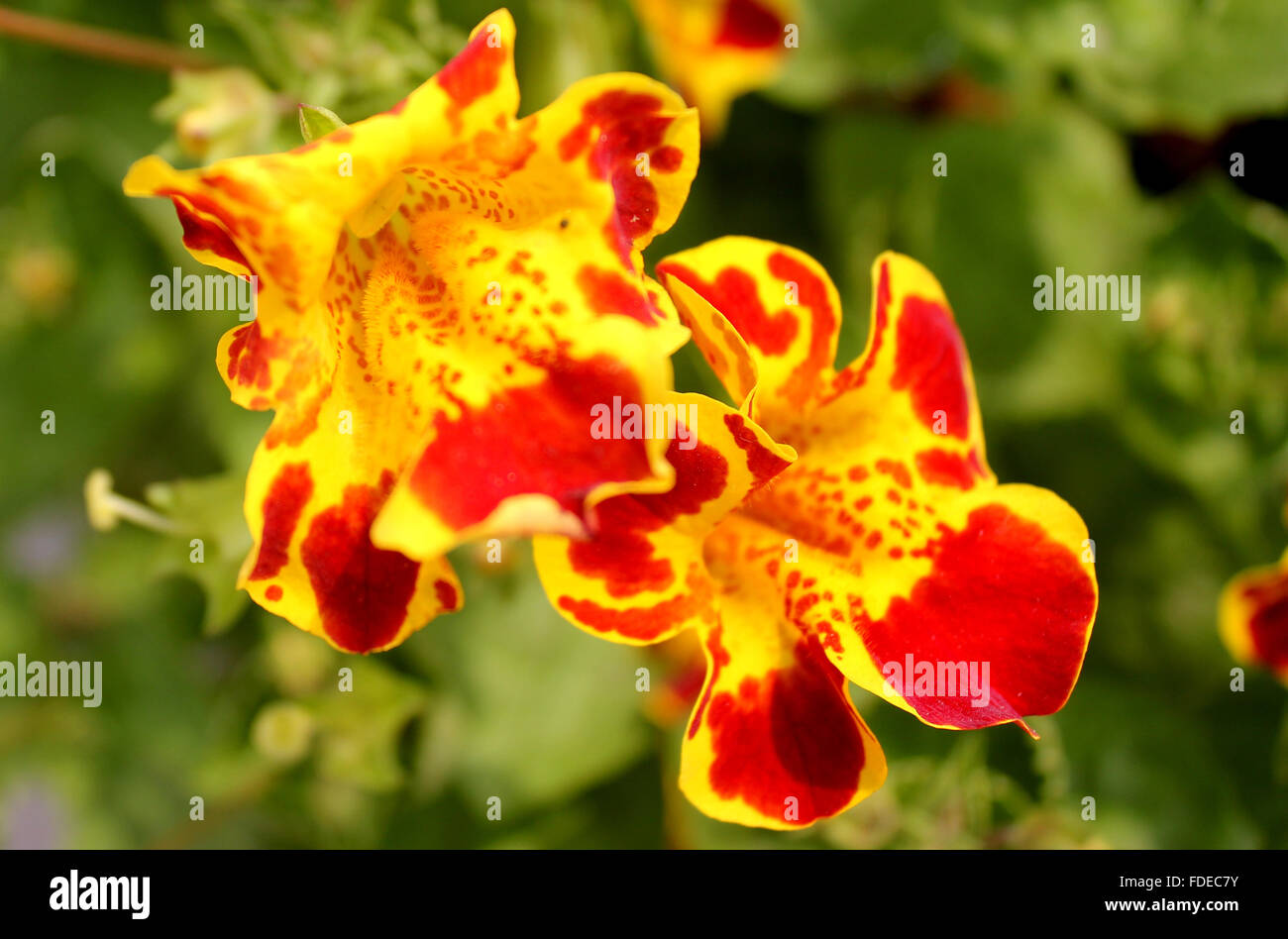 Mimulus tigrinus, Tiger Monkey Flower, annual ornamental herb with green leaves and orange flowers with red speckles Stock Photohttps://www.alamy.com/image-license-details/?v=1https://www.alamy.com/stock-photo-mimulus-tigrinus-tiger-monkey-flower-annual-ornamental-herb-with-green-94359327.html
Mimulus tigrinus, Tiger Monkey Flower, annual ornamental herb with green leaves and orange flowers with red speckles Stock Photohttps://www.alamy.com/image-license-details/?v=1https://www.alamy.com/stock-photo-mimulus-tigrinus-tiger-monkey-flower-annual-ornamental-herb-with-green-94359327.htmlRFFDEC7Y–Mimulus tigrinus, Tiger Monkey Flower, annual ornamental herb with green leaves and orange flowers with red speckles
 Seldom seen because of their secretive habits, the Dwarf Bittern is probably more widespread in suitable habitats than previously thought. Stock Photohttps://www.alamy.com/image-license-details/?v=1https://www.alamy.com/seldom-seen-because-of-their-secretive-habits-the-dwarf-bittern-is-probably-more-widespread-in-suitable-habitats-than-previously-thought-image616668681.html
Seldom seen because of their secretive habits, the Dwarf Bittern is probably more widespread in suitable habitats than previously thought. Stock Photohttps://www.alamy.com/image-license-details/?v=1https://www.alamy.com/seldom-seen-because-of-their-secretive-habits-the-dwarf-bittern-is-probably-more-widespread-in-suitable-habitats-than-previously-thought-image616668681.htmlRM2XR7K5D–Seldom seen because of their secretive habits, the Dwarf Bittern is probably more widespread in suitable habitats than previously thought.
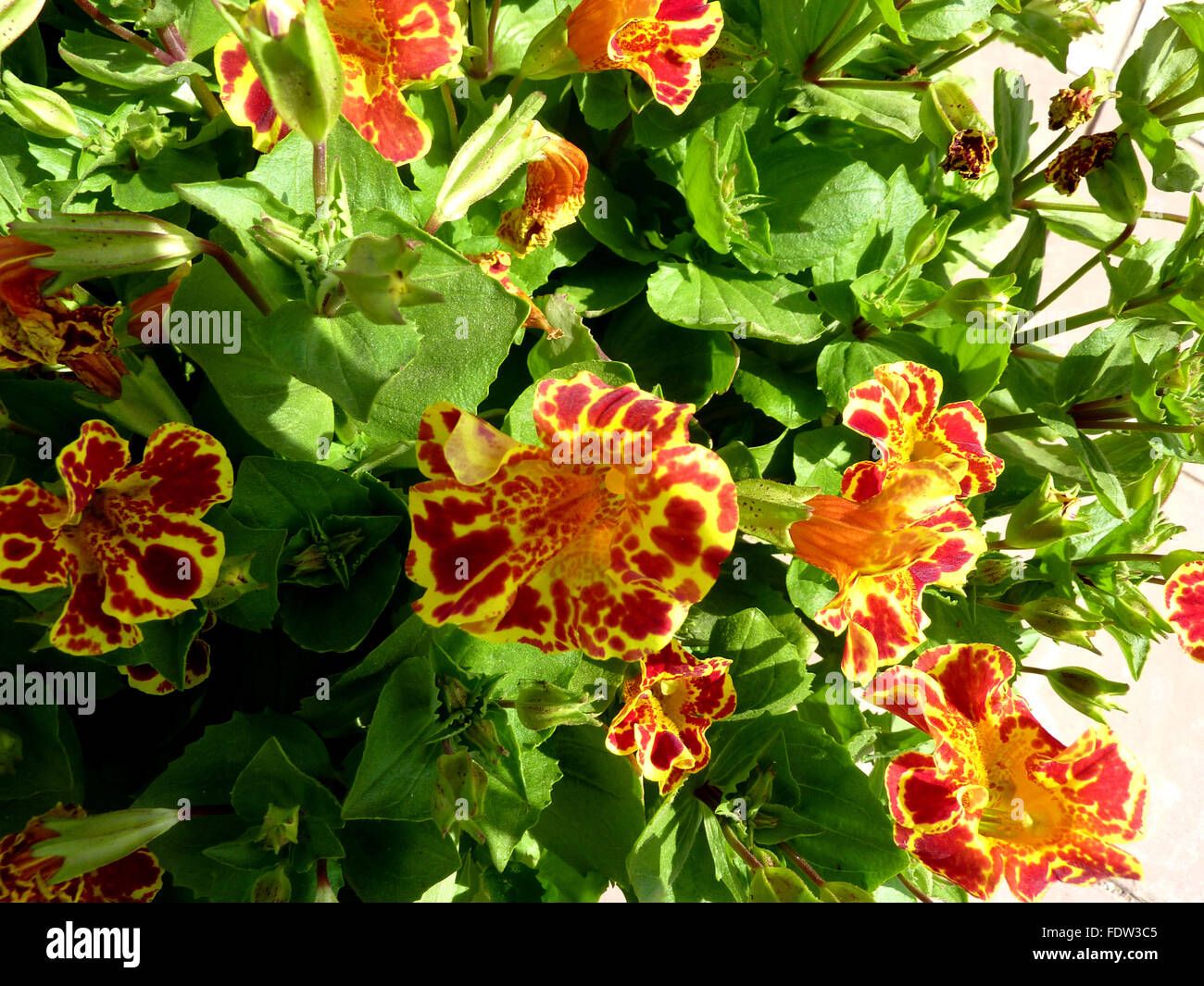 Mimulus tigrinus, Tiger Monkey Flower, annual ornamental herb with green leaves and orange flowers with red speckles Stock Photohttps://www.alamy.com/image-license-details/?v=1https://www.alamy.com/stock-photo-mimulus-tigrinus-tiger-monkey-flower-annual-ornamental-herb-with-green-94593861.html
Mimulus tigrinus, Tiger Monkey Flower, annual ornamental herb with green leaves and orange flowers with red speckles Stock Photohttps://www.alamy.com/image-license-details/?v=1https://www.alamy.com/stock-photo-mimulus-tigrinus-tiger-monkey-flower-annual-ornamental-herb-with-green-94593861.htmlRFFDW3C5–Mimulus tigrinus, Tiger Monkey Flower, annual ornamental herb with green leaves and orange flowers with red speckles
 The Blacksmith Lapwing is a noisy and conspicuous resident of wetlands and widely spread throughout suitable habitats in Africa. Stock Photohttps://www.alamy.com/image-license-details/?v=1https://www.alamy.com/the-blacksmith-lapwing-is-a-noisy-and-conspicuous-resident-of-wetlands-and-widely-spread-throughout-suitable-habitats-in-africa-image365976625.html
The Blacksmith Lapwing is a noisy and conspicuous resident of wetlands and widely spread throughout suitable habitats in Africa. Stock Photohttps://www.alamy.com/image-license-details/?v=1https://www.alamy.com/the-blacksmith-lapwing-is-a-noisy-and-conspicuous-resident-of-wetlands-and-widely-spread-throughout-suitable-habitats-in-africa-image365976625.htmlRM2C7BJWN–The Blacksmith Lapwing is a noisy and conspicuous resident of wetlands and widely spread throughout suitable habitats in Africa.
 Aylesbury Vale, Buckinghamshire, UK. 7th May, 2021. HS2 have stuck a few felled and now damaged tree limbs, into a field next to Jones Hill Wood as their mitigation for destroying the beautiful ancient woodland. The HS2 translocation is to supposedly make a new environment suitable for wildlife. Jones Hill Wood is said to have inspired local author Roald Dahl to write the popular children's novel, The Fantastic Mr Fox. The High Speed Rail 2 from London to Birmingham is carving a huge scar across the Chilterns. Credit: Maureen McLean/Alamy Live News Stock Photohttps://www.alamy.com/image-license-details/?v=1https://www.alamy.com/aylesbury-vale-buckinghamshire-uk-7th-may-2021-hs2-have-stuck-a-few-felled-and-now-damaged-tree-limbs-into-a-field-next-to-jones-hill-wood-as-their-mitigation-for-destroying-the-beautiful-ancient-woodland-the-hs2-translocation-is-to-supposedly-make-a-new-environment-suitable-for-wildlife-jones-hill-wood-is-said-to-have-inspired-local-author-roald-dahl-to-write-the-popular-childrens-novel-the-fantastic-mr-fox-the-high-speed-rail-2-from-london-to-birmingham-is-carving-a-huge-scar-across-the-chilterns-credit-maureen-mcleanalamy-live-news-image425571979.html
Aylesbury Vale, Buckinghamshire, UK. 7th May, 2021. HS2 have stuck a few felled and now damaged tree limbs, into a field next to Jones Hill Wood as their mitigation for destroying the beautiful ancient woodland. The HS2 translocation is to supposedly make a new environment suitable for wildlife. Jones Hill Wood is said to have inspired local author Roald Dahl to write the popular children's novel, The Fantastic Mr Fox. The High Speed Rail 2 from London to Birmingham is carving a huge scar across the Chilterns. Credit: Maureen McLean/Alamy Live News Stock Photohttps://www.alamy.com/image-license-details/?v=1https://www.alamy.com/aylesbury-vale-buckinghamshire-uk-7th-may-2021-hs2-have-stuck-a-few-felled-and-now-damaged-tree-limbs-into-a-field-next-to-jones-hill-wood-as-their-mitigation-for-destroying-the-beautiful-ancient-woodland-the-hs2-translocation-is-to-supposedly-make-a-new-environment-suitable-for-wildlife-jones-hill-wood-is-said-to-have-inspired-local-author-roald-dahl-to-write-the-popular-childrens-novel-the-fantastic-mr-fox-the-high-speed-rail-2-from-london-to-birmingham-is-carving-a-huge-scar-across-the-chilterns-credit-maureen-mcleanalamy-live-news-image425571979.htmlRM2FMADB7–Aylesbury Vale, Buckinghamshire, UK. 7th May, 2021. HS2 have stuck a few felled and now damaged tree limbs, into a field next to Jones Hill Wood as their mitigation for destroying the beautiful ancient woodland. The HS2 translocation is to supposedly make a new environment suitable for wildlife. Jones Hill Wood is said to have inspired local author Roald Dahl to write the popular children's novel, The Fantastic Mr Fox. The High Speed Rail 2 from London to Birmingham is carving a huge scar across the Chilterns. Credit: Maureen McLean/Alamy Live News
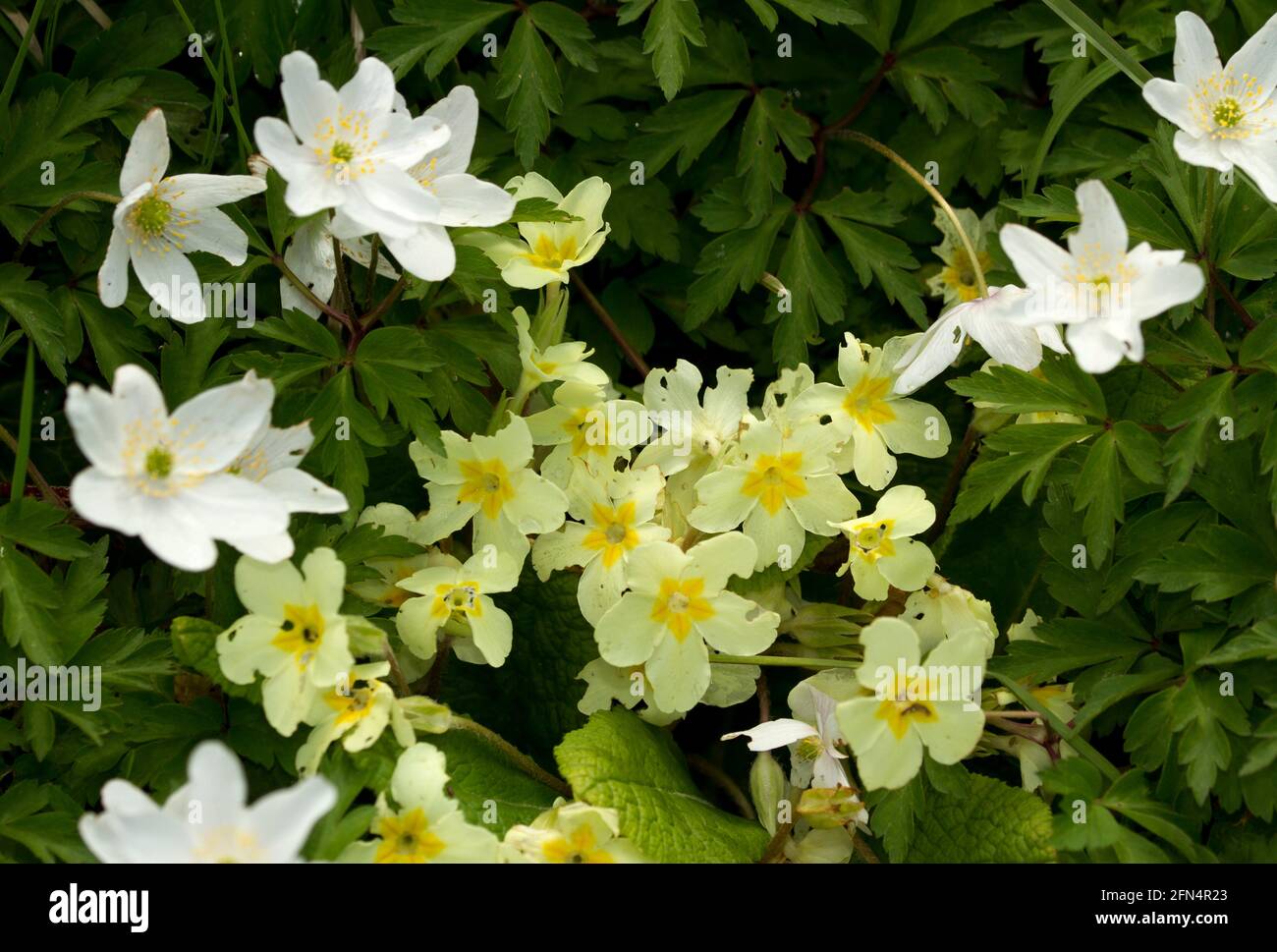 The Wood Anemone and Primrose are spring flowers that carpet the floor of deciduous woodland in suitable habitats. They flower before the canopy opens Stock Photohttps://www.alamy.com/image-license-details/?v=1https://www.alamy.com/the-wood-anemone-and-primrose-are-spring-flowers-that-carpet-the-floor-of-deciduous-woodland-in-suitable-habitats-they-flower-before-the-canopy-opens-image426062507.html
The Wood Anemone and Primrose are spring flowers that carpet the floor of deciduous woodland in suitable habitats. They flower before the canopy opens Stock Photohttps://www.alamy.com/image-license-details/?v=1https://www.alamy.com/the-wood-anemone-and-primrose-are-spring-flowers-that-carpet-the-floor-of-deciduous-woodland-in-suitable-habitats-they-flower-before-the-canopy-opens-image426062507.htmlRM2FN4R23–The Wood Anemone and Primrose are spring flowers that carpet the floor of deciduous woodland in suitable habitats. They flower before the canopy opens
 France.Dept.Pyrenees-Atlantiques. Sunset over the Pyrenees. Stock Photohttps://www.alamy.com/image-license-details/?v=1https://www.alamy.com/francedeptpyrenees-atlantiques-sunset-over-the-pyrenees-image227726624.html
France.Dept.Pyrenees-Atlantiques. Sunset over the Pyrenees. Stock Photohttps://www.alamy.com/image-license-details/?v=1https://www.alamy.com/francedeptpyrenees-atlantiques-sunset-over-the-pyrenees-image227726624.htmlRMR6DRHM–France.Dept.Pyrenees-Atlantiques. Sunset over the Pyrenees.
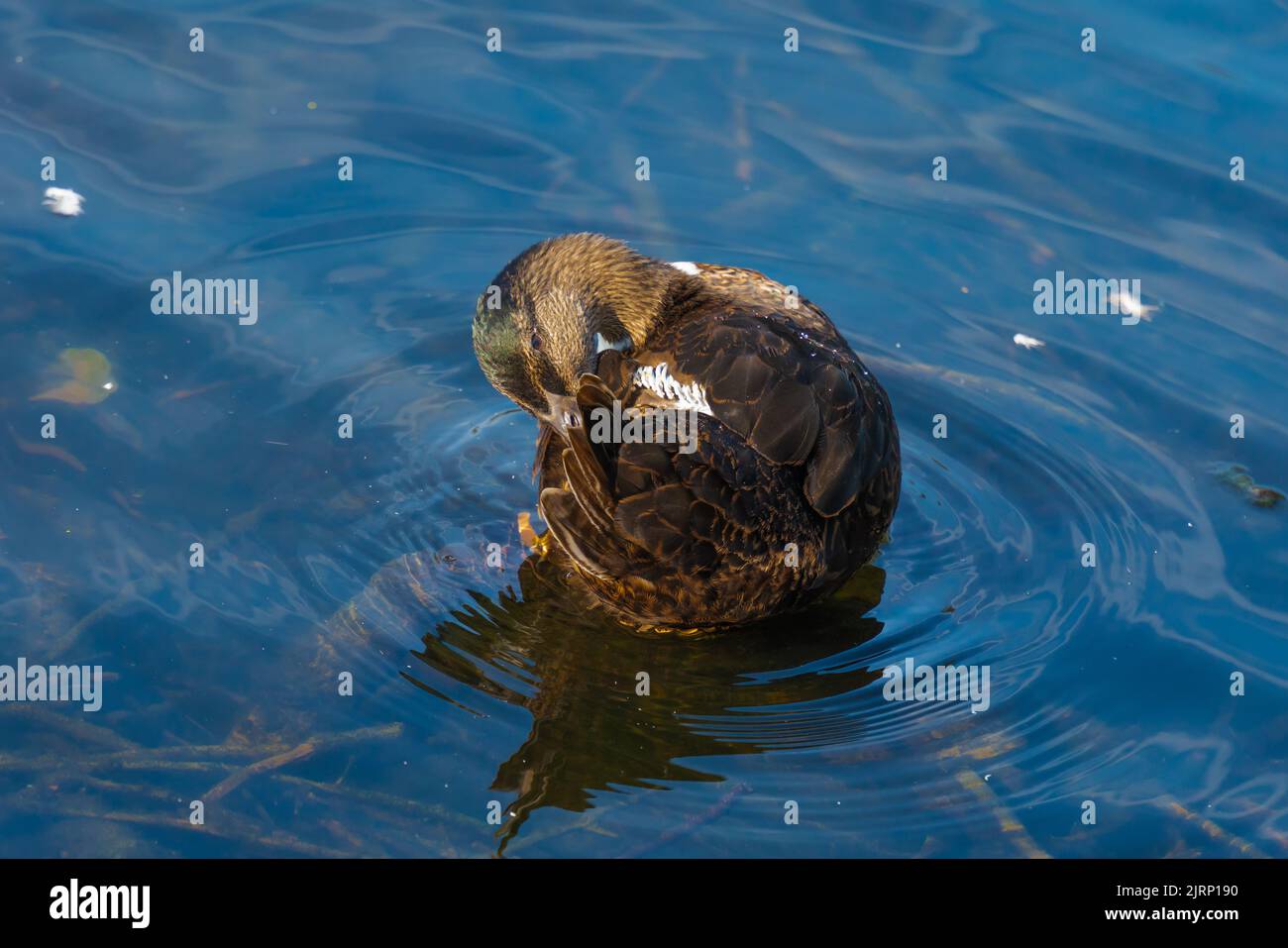 Mallard duck, green body, brownish body, wild duck, glossy green head, grey wings and belly, suitable wetland habitats, shallow sanctuaries, yellow. Stock Photohttps://www.alamy.com/image-license-details/?v=1https://www.alamy.com/mallard-duck-green-body-brownish-body-wild-duck-glossy-green-head-grey-wings-and-belly-suitable-wetland-habitats-shallow-sanctuaries-yellow-image479301004.html
Mallard duck, green body, brownish body, wild duck, glossy green head, grey wings and belly, suitable wetland habitats, shallow sanctuaries, yellow. Stock Photohttps://www.alamy.com/image-license-details/?v=1https://www.alamy.com/mallard-duck-green-body-brownish-body-wild-duck-glossy-green-head-grey-wings-and-belly-suitable-wetland-habitats-shallow-sanctuaries-yellow-image479301004.htmlRF2JRP190–Mallard duck, green body, brownish body, wild duck, glossy green head, grey wings and belly, suitable wetland habitats, shallow sanctuaries, yellow.
 Rote Island, Indonesia. July 16, 2009. Indonesian minister of forestry, MS Kaban, and other officials releasing Rote Island's snake-necked turtles (Chelodina mccordi) bred in captivity back to one of the suitable habitats, which is Lake Peto in Maubesi village, during a ceremonial event to save the critically endangered species threatened by wildlife trade. Lake Peto, Maubesi village, Rote Ndao regency, East Nusa Tenggara, Indonesia. Stock Photohttps://www.alamy.com/image-license-details/?v=1https://www.alamy.com/rote-island-indonesia-july-16-2009-indonesian-minister-of-forestry-ms-kaban-and-other-officials-releasing-rote-islands-snake-necked-turtles-chelodina-mccordi-bred-in-captivity-back-to-one-of-the-suitable-habitats-which-is-lake-peto-in-maubesi-village-during-a-ceremonial-event-to-save-the-critically-endangered-species-threatened-by-wildlife-trade-lake-peto-maubesi-village-rote-ndao-regency-east-nusa-tenggara-indonesia-image414115782.html
Rote Island, Indonesia. July 16, 2009. Indonesian minister of forestry, MS Kaban, and other officials releasing Rote Island's snake-necked turtles (Chelodina mccordi) bred in captivity back to one of the suitable habitats, which is Lake Peto in Maubesi village, during a ceremonial event to save the critically endangered species threatened by wildlife trade. Lake Peto, Maubesi village, Rote Ndao regency, East Nusa Tenggara, Indonesia. Stock Photohttps://www.alamy.com/image-license-details/?v=1https://www.alamy.com/rote-island-indonesia-july-16-2009-indonesian-minister-of-forestry-ms-kaban-and-other-officials-releasing-rote-islands-snake-necked-turtles-chelodina-mccordi-bred-in-captivity-back-to-one-of-the-suitable-habitats-which-is-lake-peto-in-maubesi-village-during-a-ceremonial-event-to-save-the-critically-endangered-species-threatened-by-wildlife-trade-lake-peto-maubesi-village-rote-ndao-regency-east-nusa-tenggara-indonesia-image414115782.htmlRM2F1MGWA–Rote Island, Indonesia. July 16, 2009. Indonesian minister of forestry, MS Kaban, and other officials releasing Rote Island's snake-necked turtles (Chelodina mccordi) bred in captivity back to one of the suitable habitats, which is Lake Peto in Maubesi village, during a ceremonial event to save the critically endangered species threatened by wildlife trade. Lake Peto, Maubesi village, Rote Ndao regency, East Nusa Tenggara, Indonesia.
 Ursus malayanus, Print, The sun bear (Helarctos malayanus) is a bear species occurring in tropical forest habitats of Southeast Asia. It is listed as Vulnerable on the IUCN Red List. The global population is thought to have declined by more than 30% over the past three bear generations. Suitable habitat has been dramatically reduced due to the large-scale deforestation that has occurred throughout Southeast Asia over the past three decades., 1700-1880, Reimagined by Gibon, design of warm cheerful glowing of brightness and light rays radiance. Classic art reinvented with a modern twist. Photogr Stock Photohttps://www.alamy.com/image-license-details/?v=1https://www.alamy.com/ursus-malayanus-print-the-sun-bear-helarctos-malayanus-is-a-bear-species-occurring-in-tropical-forest-habitats-of-southeast-asia-it-is-listed-as-vulnerable-on-the-iucn-red-list-the-global-population-is-thought-to-have-declined-by-more-than-30-over-the-past-three-bear-generations-suitable-habitat-has-been-dramatically-reduced-due-to-the-large-scale-deforestation-that-has-occurred-throughout-southeast-asia-over-the-past-three-decades-1700-1880-reimagined-by-gibon-design-of-warm-cheerful-glowing-of-brightness-and-light-rays-radiance-classic-art-reinvented-with-a-modern-twist-photogr-image349794794.html
Ursus malayanus, Print, The sun bear (Helarctos malayanus) is a bear species occurring in tropical forest habitats of Southeast Asia. It is listed as Vulnerable on the IUCN Red List. The global population is thought to have declined by more than 30% over the past three bear generations. Suitable habitat has been dramatically reduced due to the large-scale deforestation that has occurred throughout Southeast Asia over the past three decades., 1700-1880, Reimagined by Gibon, design of warm cheerful glowing of brightness and light rays radiance. Classic art reinvented with a modern twist. Photogr Stock Photohttps://www.alamy.com/image-license-details/?v=1https://www.alamy.com/ursus-malayanus-print-the-sun-bear-helarctos-malayanus-is-a-bear-species-occurring-in-tropical-forest-habitats-of-southeast-asia-it-is-listed-as-vulnerable-on-the-iucn-red-list-the-global-population-is-thought-to-have-declined-by-more-than-30-over-the-past-three-bear-generations-suitable-habitat-has-been-dramatically-reduced-due-to-the-large-scale-deforestation-that-has-occurred-throughout-southeast-asia-over-the-past-three-decades-1700-1880-reimagined-by-gibon-design-of-warm-cheerful-glowing-of-brightness-and-light-rays-radiance-classic-art-reinvented-with-a-modern-twist-photogr-image349794794.htmlRF2B92ER6–Ursus malayanus, Print, The sun bear (Helarctos malayanus) is a bear species occurring in tropical forest habitats of Southeast Asia. It is listed as Vulnerable on the IUCN Red List. The global population is thought to have declined by more than 30% over the past three bear generations. Suitable habitat has been dramatically reduced due to the large-scale deforestation that has occurred throughout Southeast Asia over the past three decades., 1700-1880, Reimagined by Gibon, design of warm cheerful glowing of brightness and light rays radiance. Classic art reinvented with a modern twist. Photogr
RF2RTC6KN–Conservation Icon image. Suitable for mobile application.
 A group of French birdwatchers from the Gers Bird Club birding in the Parc Naturel Des Grand Causses. Dept.12. Aveyron. Stock Photohttps://www.alamy.com/image-license-details/?v=1https://www.alamy.com/a-group-of-french-birdwatchers-from-the-gers-bird-club-birding-in-the-parc-naturel-des-grand-causses-dept12-aveyron-image227726632.html
A group of French birdwatchers from the Gers Bird Club birding in the Parc Naturel Des Grand Causses. Dept.12. Aveyron. Stock Photohttps://www.alamy.com/image-license-details/?v=1https://www.alamy.com/a-group-of-french-birdwatchers-from-the-gers-bird-club-birding-in-the-parc-naturel-des-grand-causses-dept12-aveyron-image227726632.htmlRMR6DRJ0–A group of French birdwatchers from the Gers Bird Club birding in the Parc Naturel Des Grand Causses. Dept.12. Aveyron.
 Tableau élémentaire d'ornithologie, Histoire naturelle des oiseaux que l'on rencontre communément en France, Paris, Tournelsen, 1806-1822, birds, collection and preservation, France, recueil de planches du Tableau élémentaire d’ornithologie., The illustration features four distinct waterfowl species, each meticulously detailed. At the top left is the Bernache, known for its elongated neck and distinct plumage. Next to it, the Marouette displays a compact body and characteristic markings. Below, the Maillotin showcases a streamlined shape suitable for swimming, while the petite Sorelle, positio Stock Photohttps://www.alamy.com/image-license-details/?v=1https://www.alamy.com/tableau-lmentaire-dornithologie-histoire-naturelle-des-oiseaux-que-lon-rencontre-communment-en-france-paris-tournelsen-1806-1822-birds-collection-and-preservation-france-recueil-de-planches-du-tableau-lmentaire-dornithologie-the-illustration-features-four-distinct-waterfowl-species-each-meticulously-detailed-at-the-top-left-is-the-bernache-known-for-its-elongated-neck-and-distinct-plumage-next-to-it-the-marouette-displays-a-compact-body-and-characteristic-markings-below-the-maillotin-showcases-a-streamlined-shape-suitable-for-swimming-while-the-petite-sorelle-positio-image636065604.html
Tableau élémentaire d'ornithologie, Histoire naturelle des oiseaux que l'on rencontre communément en France, Paris, Tournelsen, 1806-1822, birds, collection and preservation, France, recueil de planches du Tableau élémentaire d’ornithologie., The illustration features four distinct waterfowl species, each meticulously detailed. At the top left is the Bernache, known for its elongated neck and distinct plumage. Next to it, the Marouette displays a compact body and characteristic markings. Below, the Maillotin showcases a streamlined shape suitable for swimming, while the petite Sorelle, positio Stock Photohttps://www.alamy.com/image-license-details/?v=1https://www.alamy.com/tableau-lmentaire-dornithologie-histoire-naturelle-des-oiseaux-que-lon-rencontre-communment-en-france-paris-tournelsen-1806-1822-birds-collection-and-preservation-france-recueil-de-planches-du-tableau-lmentaire-dornithologie-the-illustration-features-four-distinct-waterfowl-species-each-meticulously-detailed-at-the-top-left-is-the-bernache-known-for-its-elongated-neck-and-distinct-plumage-next-to-it-the-marouette-displays-a-compact-body-and-characteristic-markings-below-the-maillotin-showcases-a-streamlined-shape-suitable-for-swimming-while-the-petite-sorelle-positio-image636065604.htmlRM2YXR84M–Tableau élémentaire d'ornithologie, Histoire naturelle des oiseaux que l'on rencontre communément en France, Paris, Tournelsen, 1806-1822, birds, collection and preservation, France, recueil de planches du Tableau élémentaire d’ornithologie., The illustration features four distinct waterfowl species, each meticulously detailed. At the top left is the Bernache, known for its elongated neck and distinct plumage. Next to it, the Marouette displays a compact body and characteristic markings. Below, the Maillotin showcases a streamlined shape suitable for swimming, while the petite Sorelle, positio
 Wiesbaden, Germany. 08th Nov, 2019. Biologists have bred this small European pond turtle, which is now being prepared for reintroduction into the wild. As soon as the animal is big enough, it will be reintroduced by experts in suitable habitats in Hesse and Rhineland-Palatinate. (Zu dpa 'Swamp tortoises populate Hesse and Rhineland-Palatinate again') Credit: Boris Roessler/dpa/Alamy Live News Stock Photohttps://www.alamy.com/image-license-details/?v=1https://www.alamy.com/wiesbaden-germany-08th-nov-2019-biologists-have-bred-this-small-european-pond-turtle-which-is-now-being-prepared-for-reintroduction-into-the-wild-as-soon-as-the-animal-is-big-enough-it-will-be-reintroduced-by-experts-in-suitable-habitats-in-hesse-and-rhineland-palatinate-zu-dpa-swamp-tortoises-populate-hesse-and-rhineland-palatinate-again-credit-boris-roesslerdpaalamy-live-news-image333088679.html
Wiesbaden, Germany. 08th Nov, 2019. Biologists have bred this small European pond turtle, which is now being prepared for reintroduction into the wild. As soon as the animal is big enough, it will be reintroduced by experts in suitable habitats in Hesse and Rhineland-Palatinate. (Zu dpa 'Swamp tortoises populate Hesse and Rhineland-Palatinate again') Credit: Boris Roessler/dpa/Alamy Live News Stock Photohttps://www.alamy.com/image-license-details/?v=1https://www.alamy.com/wiesbaden-germany-08th-nov-2019-biologists-have-bred-this-small-european-pond-turtle-which-is-now-being-prepared-for-reintroduction-into-the-wild-as-soon-as-the-animal-is-big-enough-it-will-be-reintroduced-by-experts-in-suitable-habitats-in-hesse-and-rhineland-palatinate-zu-dpa-swamp-tortoises-populate-hesse-and-rhineland-palatinate-again-credit-boris-roesslerdpaalamy-live-news-image333088679.htmlRM2A9WE07–Wiesbaden, Germany. 08th Nov, 2019. Biologists have bred this small European pond turtle, which is now being prepared for reintroduction into the wild. As soon as the animal is big enough, it will be reintroduced by experts in suitable habitats in Hesse and Rhineland-Palatinate. (Zu dpa 'Swamp tortoises populate Hesse and Rhineland-Palatinate again') Credit: Boris Roessler/dpa/Alamy Live News
 Habitat creation for Bumble Bees and other invertebrates. Stock Photohttps://www.alamy.com/image-license-details/?v=1https://www.alamy.com/stock-photo-habitat-creation-for-bumble-bees-and-other-invertebrates-35789424.html
Habitat creation for Bumble Bees and other invertebrates. Stock Photohttps://www.alamy.com/image-license-details/?v=1https://www.alamy.com/stock-photo-habitat-creation-for-bumble-bees-and-other-invertebrates-35789424.htmlRMC269NM–Habitat creation for Bumble Bees and other invertebrates.
 Common Blue (Polyommatus icarus) is a common butterfly found in suitable habitats in Turkey. Stock Photohttps://www.alamy.com/image-license-details/?v=1https://www.alamy.com/common-blue-polyommatus-icarus-is-a-common-butterfly-found-in-suitable-habitats-in-turkey-image602033415.html
Common Blue (Polyommatus icarus) is a common butterfly found in suitable habitats in Turkey. Stock Photohttps://www.alamy.com/image-license-details/?v=1https://www.alamy.com/common-blue-polyommatus-icarus-is-a-common-butterfly-found-in-suitable-habitats-in-turkey-image602033415.htmlRF2WYCYNB–Common Blue (Polyommatus icarus) is a common butterfly found in suitable habitats in Turkey.
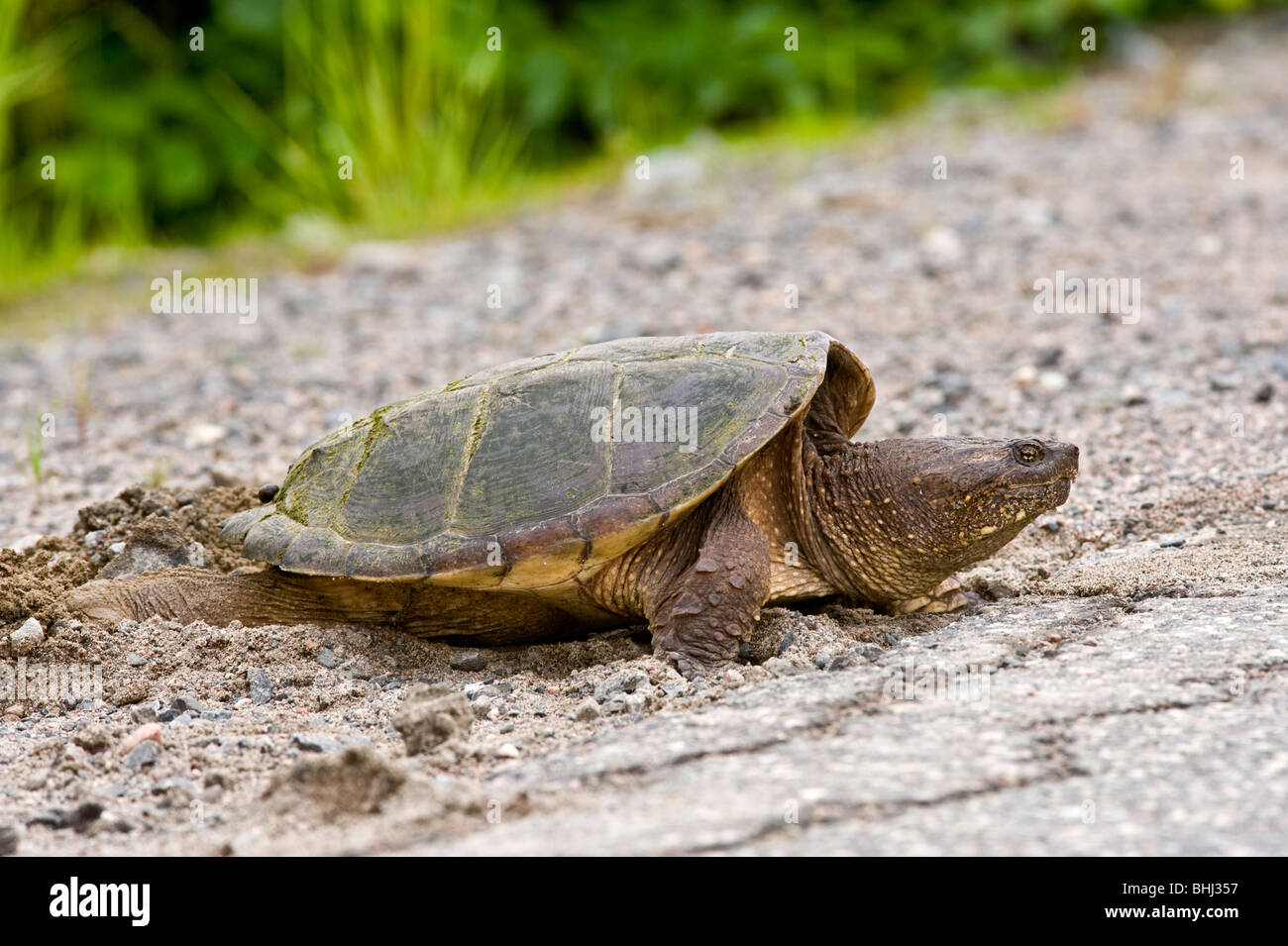 Snapping turtle (Chelydra serpentina) Female laying eggs in roadside gravel, Greater Sudbury, Ontario, Canada Stock Photohttps://www.alamy.com/image-license-details/?v=1https://www.alamy.com/stock-photo-snapping-turtle-chelydra-serpentina-female-laying-eggs-in-roadside-28057155.html
Snapping turtle (Chelydra serpentina) Female laying eggs in roadside gravel, Greater Sudbury, Ontario, Canada Stock Photohttps://www.alamy.com/image-license-details/?v=1https://www.alamy.com/stock-photo-snapping-turtle-chelydra-serpentina-female-laying-eggs-in-roadside-28057155.htmlRMBHJ357–Snapping turtle (Chelydra serpentina) Female laying eggs in roadside gravel, Greater Sudbury, Ontario, Canada
 Curlew on typical breeding habitat on North Uist. The island is covered with moorland and bogs ideal habitat for this declining UK species. Stock Photohttps://www.alamy.com/image-license-details/?v=1https://www.alamy.com/curlew-on-typical-breeding-habitat-on-north-uist-the-island-is-covered-with-moorland-and-bogs-ideal-habitat-for-this-declining-uk-species-image453101444.html
Curlew on typical breeding habitat on North Uist. The island is covered with moorland and bogs ideal habitat for this declining UK species. Stock Photohttps://www.alamy.com/image-license-details/?v=1https://www.alamy.com/curlew-on-typical-breeding-habitat-on-north-uist-the-island-is-covered-with-moorland-and-bogs-ideal-habitat-for-this-declining-uk-species-image453101444.htmlRF2H94FEC–Curlew on typical breeding habitat on North Uist. The island is covered with moorland and bogs ideal habitat for this declining UK species.
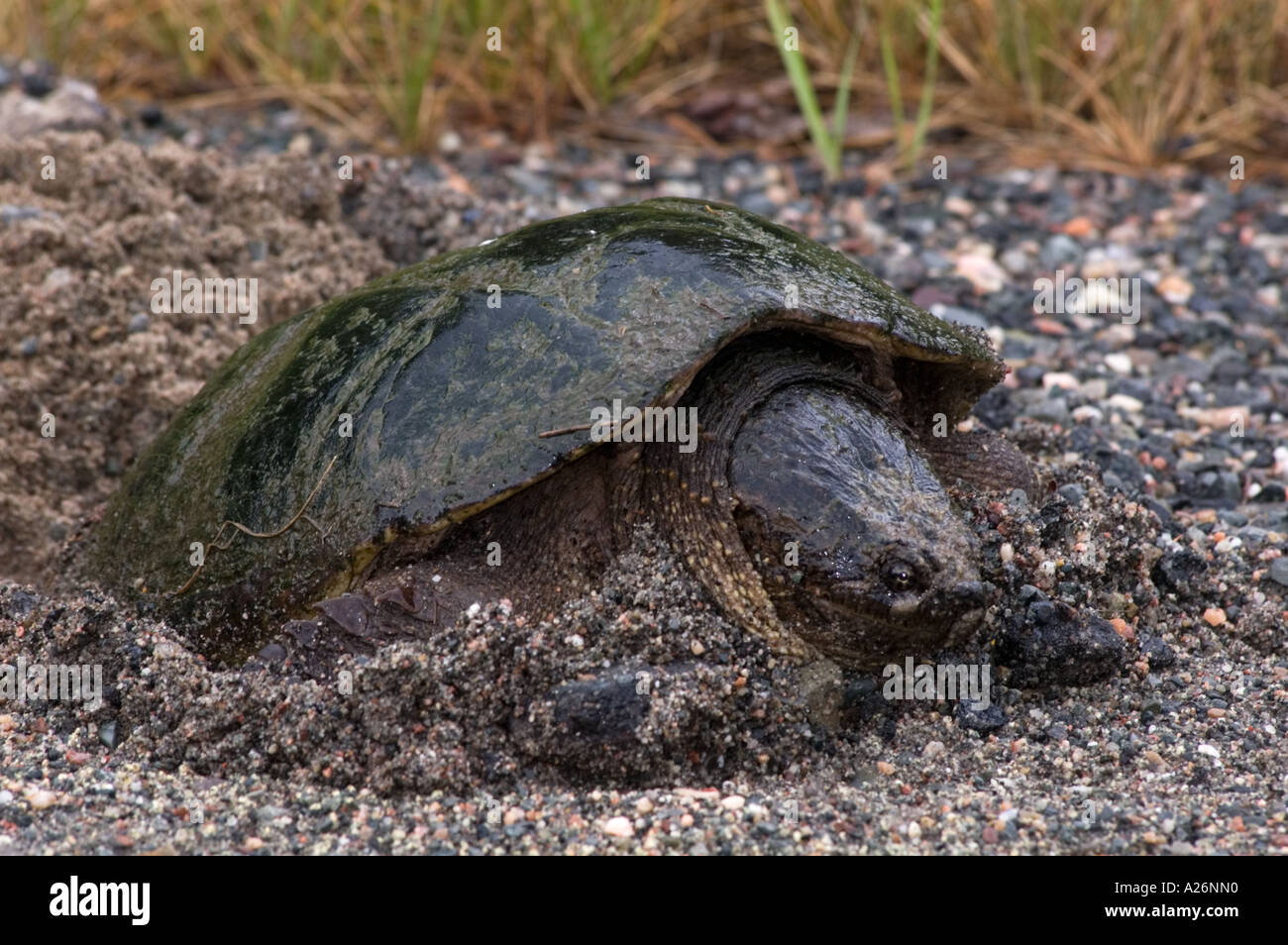 Snapping turtle (Chelydra serpentina) Female laying eggs in roadside gravel Ontario, Canada, Canada Stock Photohttps://www.alamy.com/image-license-details/?v=1https://www.alamy.com/snapping-turtle-chelydra-serpentina-female-laying-eggs-in-roadside-image5957135.html
Snapping turtle (Chelydra serpentina) Female laying eggs in roadside gravel Ontario, Canada, Canada Stock Photohttps://www.alamy.com/image-license-details/?v=1https://www.alamy.com/snapping-turtle-chelydra-serpentina-female-laying-eggs-in-roadside-image5957135.htmlRMA26NN0–Snapping turtle (Chelydra serpentina) Female laying eggs in roadside gravel Ontario, Canada, Canada
 . The Canadian field-naturalist. 1971 Erskine: Bird Communities in Cape Breton 137 as was the Common Grackle. The Bank Swal- low, like the kingfisher, was most frequent along the lower reaches of rivers, where its colonies in eroding clay banks were common. Most other birds in Table 6 belong to upland bird com- munities, and were detected from the rivers and marshes abutting on suitable habitats. The up- land birds are discussed briefly, for their habitats were not sampled systematically. Tables 5 and 6 show that most of these birds were detected more frequently from the mer- ganser areas (riv Stock Photohttps://www.alamy.com/image-license-details/?v=1https://www.alamy.com/the-canadian-field-naturalist-1971-erskine-bird-communities-in-cape-breton-137-as-was-the-common-grackle-the-bank-swal-low-like-the-kingfisher-was-most-frequent-along-the-lower-reaches-of-rivers-where-its-colonies-in-eroding-clay-banks-were-common-most-other-birds-in-table-6-belong-to-upland-bird-com-munities-and-were-detected-from-the-rivers-and-marshes-abutting-on-suitable-habitats-the-up-land-birds-are-discussed-briefly-for-their-habitats-were-not-sampled-systematically-tables-5-and-6-show-that-most-of-these-birds-were-detected-more-frequently-from-the-mer-ganser-areas-riv-image233631041.html
. The Canadian field-naturalist. 1971 Erskine: Bird Communities in Cape Breton 137 as was the Common Grackle. The Bank Swal- low, like the kingfisher, was most frequent along the lower reaches of rivers, where its colonies in eroding clay banks were common. Most other birds in Table 6 belong to upland bird com- munities, and were detected from the rivers and marshes abutting on suitable habitats. The up- land birds are discussed briefly, for their habitats were not sampled systematically. Tables 5 and 6 show that most of these birds were detected more frequently from the mer- ganser areas (riv Stock Photohttps://www.alamy.com/image-license-details/?v=1https://www.alamy.com/the-canadian-field-naturalist-1971-erskine-bird-communities-in-cape-breton-137-as-was-the-common-grackle-the-bank-swal-low-like-the-kingfisher-was-most-frequent-along-the-lower-reaches-of-rivers-where-its-colonies-in-eroding-clay-banks-were-common-most-other-birds-in-table-6-belong-to-upland-bird-com-munities-and-were-detected-from-the-rivers-and-marshes-abutting-on-suitable-habitats-the-up-land-birds-are-discussed-briefly-for-their-habitats-were-not-sampled-systematically-tables-5-and-6-show-that-most-of-these-birds-were-detected-more-frequently-from-the-mer-ganser-areas-riv-image233631041.htmlRMRG2PNN–. The Canadian field-naturalist. 1971 Erskine: Bird Communities in Cape Breton 137 as was the Common Grackle. The Bank Swal- low, like the kingfisher, was most frequent along the lower reaches of rivers, where its colonies in eroding clay banks were common. Most other birds in Table 6 belong to upland bird com- munities, and were detected from the rivers and marshes abutting on suitable habitats. The up- land birds are discussed briefly, for their habitats were not sampled systematically. Tables 5 and 6 show that most of these birds were detected more frequently from the mer- ganser areas (riv
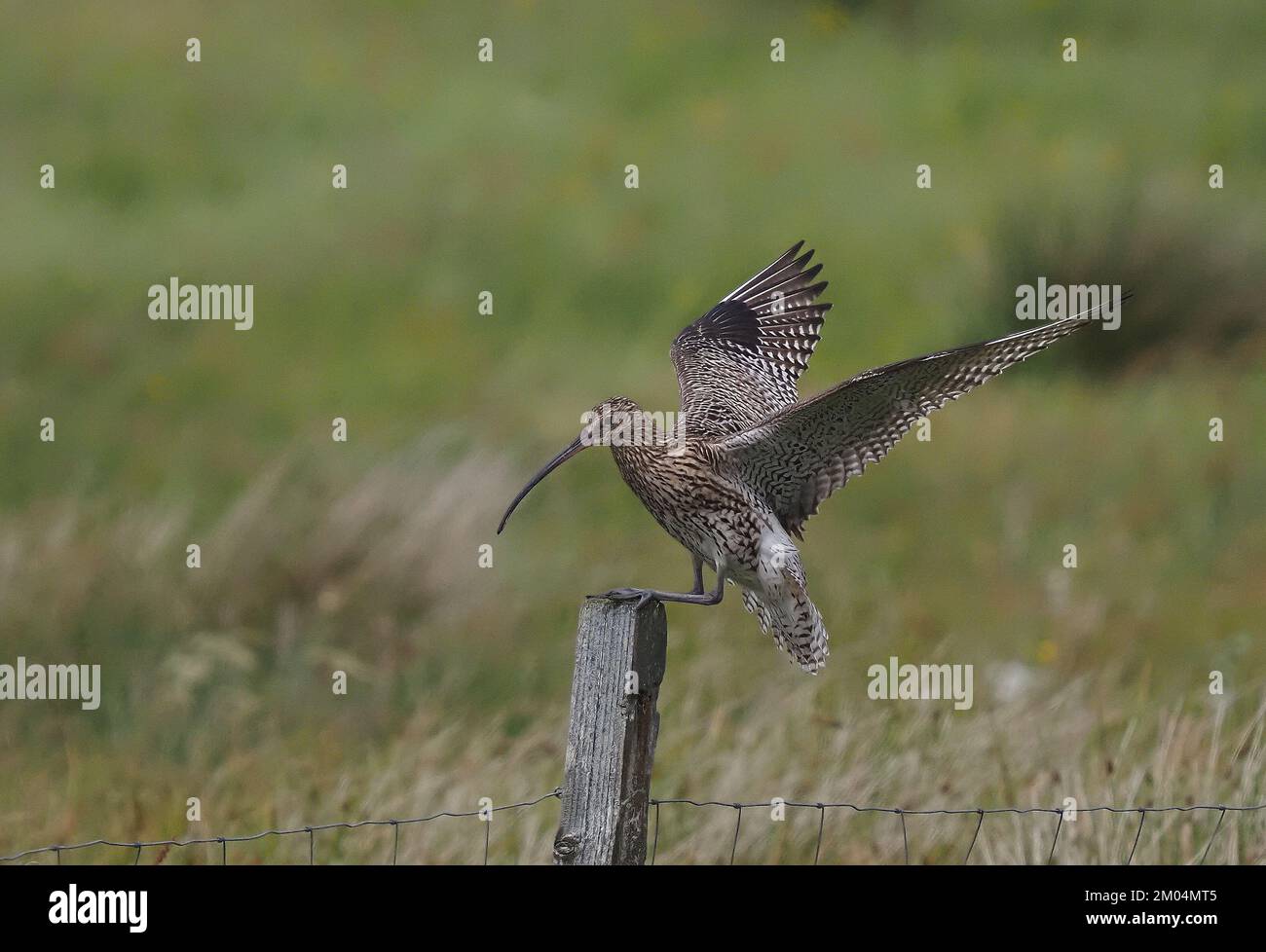 curlew landing near my car was indicative there were young nearby, be aware of behaviours and respect the birds. Stock Photohttps://www.alamy.com/image-license-details/?v=1https://www.alamy.com/curlew-landing-near-my-car-was-indicative-there-were-young-nearby-be-aware-of-behaviours-and-respect-the-birds-image499204837.html
curlew landing near my car was indicative there were young nearby, be aware of behaviours and respect the birds. Stock Photohttps://www.alamy.com/image-license-details/?v=1https://www.alamy.com/curlew-landing-near-my-car-was-indicative-there-were-young-nearby-be-aware-of-behaviours-and-respect-the-birds-image499204837.htmlRF2M04MT5–curlew landing near my car was indicative there were young nearby, be aware of behaviours and respect the birds.
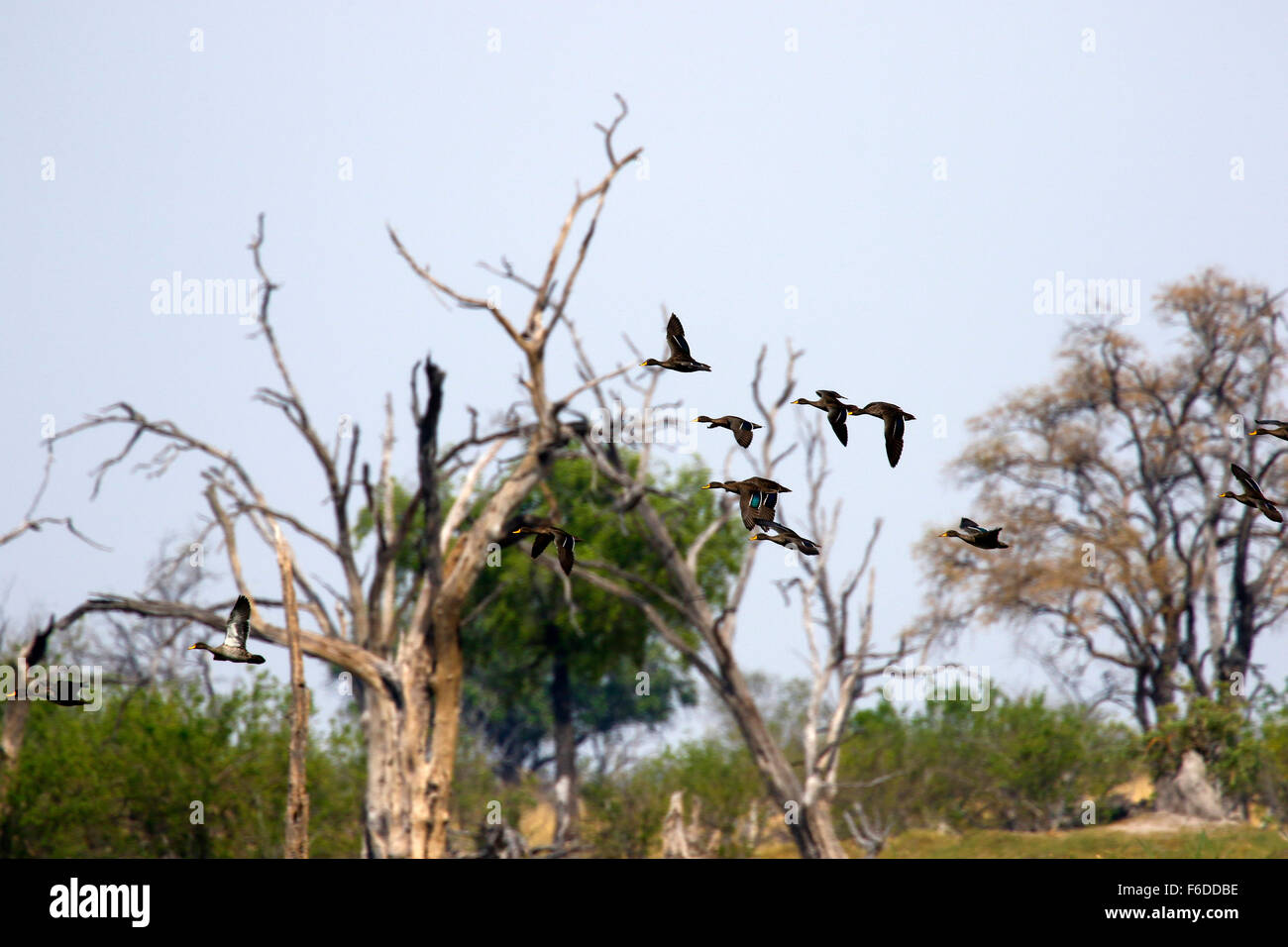 Flock of flying Yellow-billed ducks over Dead Tree Island in Botswana Stock Photohttps://www.alamy.com/image-license-details/?v=1https://www.alamy.com/stock-photo-flock-of-flying-yellow-billed-ducks-over-dead-tree-island-in-botswana-90035666.html
Flock of flying Yellow-billed ducks over Dead Tree Island in Botswana Stock Photohttps://www.alamy.com/image-license-details/?v=1https://www.alamy.com/stock-photo-flock-of-flying-yellow-billed-ducks-over-dead-tree-island-in-botswana-90035666.htmlRFF6DDBE–Flock of flying Yellow-billed ducks over Dead Tree Island in Botswana
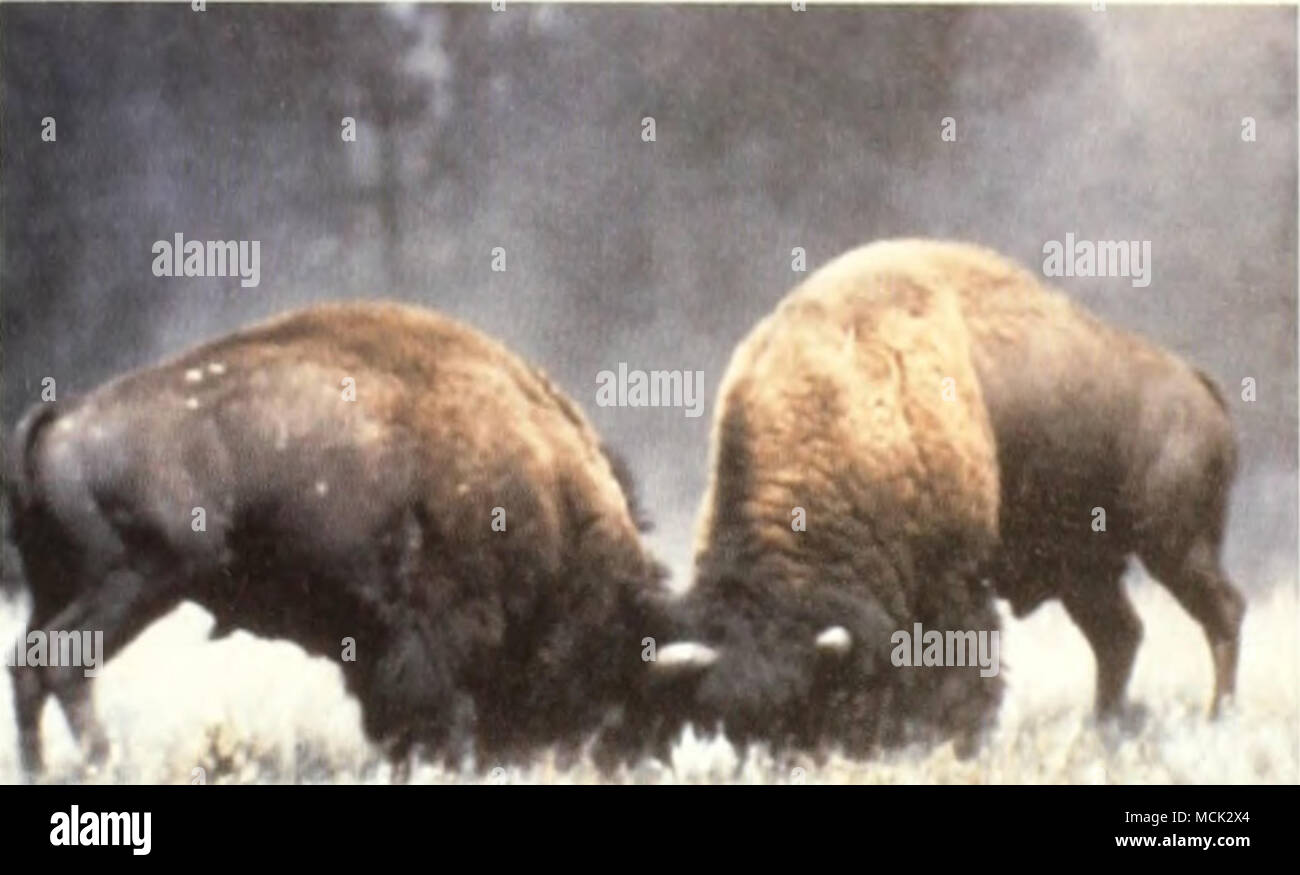 . Bull bison fighting. Valley, and Lamar Valley are suitable habitats for seasonally large bison herds. The National Park Service is currently initiating research to study the ecological carrying capacity in the park. However, herds of any size will seldom spend much time in any one place. Because individual bison tend to live on large quantities of low-quality forage, bison herds are constantly on the move, feeding from one site to the next. They will seek out higher-quality forage, but those sources are generally available only on a short-term, seasonal basis. Despite their size and seemingl Stock Photohttps://www.alamy.com/image-license-details/?v=1https://www.alamy.com/bull-bison-fighting-valley-and-lamar-valley-are-suitable-habitats-for-seasonally-large-bison-herds-the-national-park-service-is-currently-initiating-research-to-study-the-ecological-carrying-capacity-in-the-park-however-herds-of-any-size-will-seldom-spend-much-time-in-any-one-place-because-individual-bison-tend-to-live-on-large-quantities-of-low-quality-forage-bison-herds-are-constantly-on-the-move-feeding-from-one-site-to-the-next-they-will-seek-out-higher-quality-forage-but-those-sources-are-generally-available-only-on-a-short-term-seasonal-basis-despite-their-size-and-seemingl-image179898940.html
. Bull bison fighting. Valley, and Lamar Valley are suitable habitats for seasonally large bison herds. The National Park Service is currently initiating research to study the ecological carrying capacity in the park. However, herds of any size will seldom spend much time in any one place. Because individual bison tend to live on large quantities of low-quality forage, bison herds are constantly on the move, feeding from one site to the next. They will seek out higher-quality forage, but those sources are generally available only on a short-term, seasonal basis. Despite their size and seemingl Stock Photohttps://www.alamy.com/image-license-details/?v=1https://www.alamy.com/bull-bison-fighting-valley-and-lamar-valley-are-suitable-habitats-for-seasonally-large-bison-herds-the-national-park-service-is-currently-initiating-research-to-study-the-ecological-carrying-capacity-in-the-park-however-herds-of-any-size-will-seldom-spend-much-time-in-any-one-place-because-individual-bison-tend-to-live-on-large-quantities-of-low-quality-forage-bison-herds-are-constantly-on-the-move-feeding-from-one-site-to-the-next-they-will-seek-out-higher-quality-forage-but-those-sources-are-generally-available-only-on-a-short-term-seasonal-basis-despite-their-size-and-seemingl-image179898940.htmlRMMCK2X4–. Bull bison fighting. Valley, and Lamar Valley are suitable habitats for seasonally large bison herds. The National Park Service is currently initiating research to study the ecological carrying capacity in the park. However, herds of any size will seldom spend much time in any one place. Because individual bison tend to live on large quantities of low-quality forage, bison herds are constantly on the move, feeding from one site to the next. They will seek out higher-quality forage, but those sources are generally available only on a short-term, seasonal basis. Despite their size and seemingl
 Aylesbury Vale, Buckinghamshire, UK. 7th May, 2021. HS2 have stuck a few felled and now damaged tree limbs, into a field next to Jones Hill Wood as their mitigation for destroying the beautiful ancient woodland. The HS2 translocation is to supposedly make a new environment suitable for wildlife. Jones Hill Wood is said to have inspired local author Roald Dahl to write the popular children's novel, The Fantastic Mr Fox. The High Speed Rail 2 from London to Birmingham is carving a huge scar across the Chilterns. Credit: Maureen McLean/Alamy Live News Stock Photohttps://www.alamy.com/image-license-details/?v=1https://www.alamy.com/aylesbury-vale-buckinghamshire-uk-7th-may-2021-hs2-have-stuck-a-few-felled-and-now-damaged-tree-limbs-into-a-field-next-to-jones-hill-wood-as-their-mitigation-for-destroying-the-beautiful-ancient-woodland-the-hs2-translocation-is-to-supposedly-make-a-new-environment-suitable-for-wildlife-jones-hill-wood-is-said-to-have-inspired-local-author-roald-dahl-to-write-the-popular-childrens-novel-the-fantastic-mr-fox-the-high-speed-rail-2-from-london-to-birmingham-is-carving-a-huge-scar-across-the-chilterns-credit-maureen-mcleanalamy-live-news-image425571965.html
Aylesbury Vale, Buckinghamshire, UK. 7th May, 2021. HS2 have stuck a few felled and now damaged tree limbs, into a field next to Jones Hill Wood as their mitigation for destroying the beautiful ancient woodland. The HS2 translocation is to supposedly make a new environment suitable for wildlife. Jones Hill Wood is said to have inspired local author Roald Dahl to write the popular children's novel, The Fantastic Mr Fox. The High Speed Rail 2 from London to Birmingham is carving a huge scar across the Chilterns. Credit: Maureen McLean/Alamy Live News Stock Photohttps://www.alamy.com/image-license-details/?v=1https://www.alamy.com/aylesbury-vale-buckinghamshire-uk-7th-may-2021-hs2-have-stuck-a-few-felled-and-now-damaged-tree-limbs-into-a-field-next-to-jones-hill-wood-as-their-mitigation-for-destroying-the-beautiful-ancient-woodland-the-hs2-translocation-is-to-supposedly-make-a-new-environment-suitable-for-wildlife-jones-hill-wood-is-said-to-have-inspired-local-author-roald-dahl-to-write-the-popular-childrens-novel-the-fantastic-mr-fox-the-high-speed-rail-2-from-london-to-birmingham-is-carving-a-huge-scar-across-the-chilterns-credit-maureen-mcleanalamy-live-news-image425571965.htmlRM2FMADAN–Aylesbury Vale, Buckinghamshire, UK. 7th May, 2021. HS2 have stuck a few felled and now damaged tree limbs, into a field next to Jones Hill Wood as their mitigation for destroying the beautiful ancient woodland. The HS2 translocation is to supposedly make a new environment suitable for wildlife. Jones Hill Wood is said to have inspired local author Roald Dahl to write the popular children's novel, The Fantastic Mr Fox. The High Speed Rail 2 from London to Birmingham is carving a huge scar across the Chilterns. Credit: Maureen McLean/Alamy Live News
 The Wood Anemone is a delicate spring flower that will carpet the floor of deciduous woodland in suitable habitats. They flower before the tree canopy Stock Photohttps://www.alamy.com/image-license-details/?v=1https://www.alamy.com/the-wood-anemone-is-a-delicate-spring-flower-that-will-carpet-the-floor-of-deciduous-woodland-in-suitable-habitats-they-flower-before-the-tree-canopy-image426062516.html
The Wood Anemone is a delicate spring flower that will carpet the floor of deciduous woodland in suitable habitats. They flower before the tree canopy Stock Photohttps://www.alamy.com/image-license-details/?v=1https://www.alamy.com/the-wood-anemone-is-a-delicate-spring-flower-that-will-carpet-the-floor-of-deciduous-woodland-in-suitable-habitats-they-flower-before-the-tree-canopy-image426062516.htmlRM2FN4R2C–The Wood Anemone is a delicate spring flower that will carpet the floor of deciduous woodland in suitable habitats. They flower before the tree canopy
 Clear plastic hamster cage with wood shavings inside, suitable for small pets Stock Photohttps://www.alamy.com/image-license-details/?v=1https://www.alamy.com/clear-plastic-hamster-cage-with-wood-shavings-inside-suitable-for-small-pets-image623859224.html
Clear plastic hamster cage with wood shavings inside, suitable for small pets Stock Photohttps://www.alamy.com/image-license-details/?v=1https://www.alamy.com/clear-plastic-hamster-cage-with-wood-shavings-inside-suitable-for-small-pets-image623859224.htmlRF2Y6Y6PG–Clear plastic hamster cage with wood shavings inside, suitable for small pets
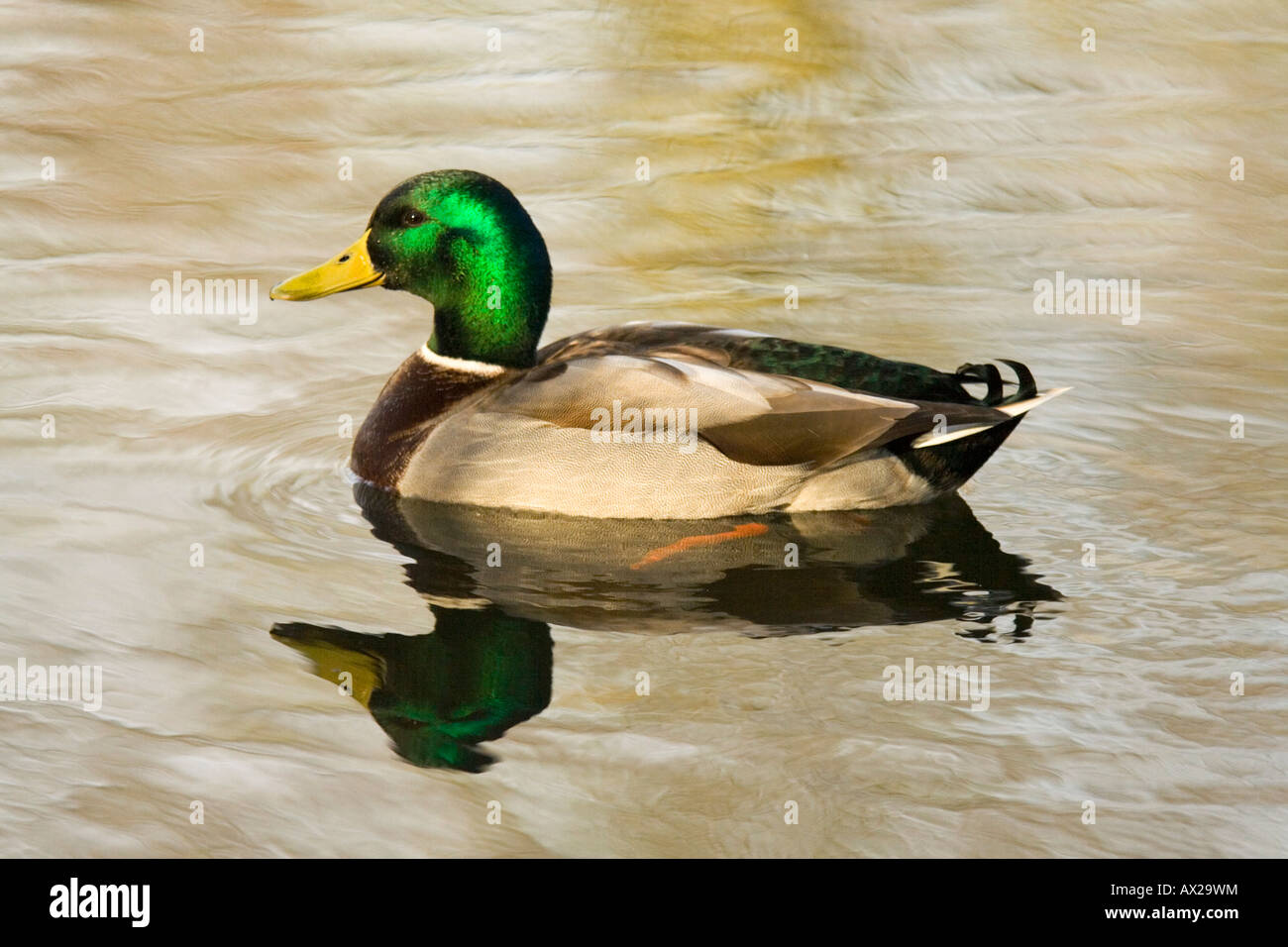 Mallard duck, green body, brownish body, wild duck, glossy green head, grey wings and belly, suitable wetland habitats, shallow sanctuaries, yellow. Stock Photohttps://www.alamy.com/image-license-details/?v=1https://www.alamy.com/stock-photo-mallard-duck-green-body-brownish-body-wild-duck-glossy-green-head-16705663.html
Mallard duck, green body, brownish body, wild duck, glossy green head, grey wings and belly, suitable wetland habitats, shallow sanctuaries, yellow. Stock Photohttps://www.alamy.com/image-license-details/?v=1https://www.alamy.com/stock-photo-mallard-duck-green-body-brownish-body-wild-duck-glossy-green-head-16705663.htmlRFAX29WM–Mallard duck, green body, brownish body, wild duck, glossy green head, grey wings and belly, suitable wetland habitats, shallow sanctuaries, yellow.
 Rote Island, Indonesia. July 16, 2009. Indonesian minister of forestry, MS Kaban, and other officials releasing Rote Island's snake-necked turtles (Chelodina mccordi) bred in captivity back to one of the suitable habitats, which is Lake Peto in Maubesi village, during a ceremonial event to save the critically endangered species threatened by wildlife trade. Lake Peto, Maubesi village, Rote Ndao regency, East Nusa Tenggara, Indonesia. Stock Photohttps://www.alamy.com/image-license-details/?v=1https://www.alamy.com/rote-island-indonesia-july-16-2009-indonesian-minister-of-forestry-ms-kaban-and-other-officials-releasing-rote-islands-snake-necked-turtles-chelodina-mccordi-bred-in-captivity-back-to-one-of-the-suitable-habitats-which-is-lake-peto-in-maubesi-village-during-a-ceremonial-event-to-save-the-critically-endangered-species-threatened-by-wildlife-trade-lake-peto-maubesi-village-rote-ndao-regency-east-nusa-tenggara-indonesia-image414115675.html
Rote Island, Indonesia. July 16, 2009. Indonesian minister of forestry, MS Kaban, and other officials releasing Rote Island's snake-necked turtles (Chelodina mccordi) bred in captivity back to one of the suitable habitats, which is Lake Peto in Maubesi village, during a ceremonial event to save the critically endangered species threatened by wildlife trade. Lake Peto, Maubesi village, Rote Ndao regency, East Nusa Tenggara, Indonesia. Stock Photohttps://www.alamy.com/image-license-details/?v=1https://www.alamy.com/rote-island-indonesia-july-16-2009-indonesian-minister-of-forestry-ms-kaban-and-other-officials-releasing-rote-islands-snake-necked-turtles-chelodina-mccordi-bred-in-captivity-back-to-one-of-the-suitable-habitats-which-is-lake-peto-in-maubesi-village-during-a-ceremonial-event-to-save-the-critically-endangered-species-threatened-by-wildlife-trade-lake-peto-maubesi-village-rote-ndao-regency-east-nusa-tenggara-indonesia-image414115675.htmlRM2F1MGNF–Rote Island, Indonesia. July 16, 2009. Indonesian minister of forestry, MS Kaban, and other officials releasing Rote Island's snake-necked turtles (Chelodina mccordi) bred in captivity back to one of the suitable habitats, which is Lake Peto in Maubesi village, during a ceremonial event to save the critically endangered species threatened by wildlife trade. Lake Peto, Maubesi village, Rote Ndao regency, East Nusa Tenggara, Indonesia.
 . Nature study and life. Nature study. io6 NATURE STUDY AND LIFE know, and for other sections the teachers, at some of their local meetings, should appoint a committee to arrange a suitable list. It has been thought by teach- ers of long experience that, be- side the casual accjuaintance of a good many more, it will not be too much to learn a little more fully twelve plants a year, grouping, drawing, and writing lessons about them. The chil- dren should be directed to fol- low their growth, learn their habitats, make collections of their seeds, and be able to tell the plant by a leaf, flower, Stock Photohttps://www.alamy.com/image-license-details/?v=1https://www.alamy.com/nature-study-and-life-nature-study-io6-nature-study-and-life-know-and-for-other-sections-the-teachers-at-some-of-their-local-meetings-should-appoint-a-committee-to-arrange-a-suitable-list-it-has-been-thought-by-teach-ers-of-long-experience-that-be-side-the-casual-accjuaintance-of-a-good-many-more-it-will-not-be-too-much-to-learn-a-little-more-fully-twelve-plants-a-year-grouping-drawing-and-writing-lessons-about-them-the-chil-dren-should-be-directed-to-fol-low-their-growth-learn-their-habitats-make-collections-of-their-seeds-and-be-able-to-tell-the-plant-by-a-leaf-flower-image216448432.html
. Nature study and life. Nature study. io6 NATURE STUDY AND LIFE know, and for other sections the teachers, at some of their local meetings, should appoint a committee to arrange a suitable list. It has been thought by teach- ers of long experience that, be- side the casual accjuaintance of a good many more, it will not be too much to learn a little more fully twelve plants a year, grouping, drawing, and writing lessons about them. The chil- dren should be directed to fol- low their growth, learn their habitats, make collections of their seeds, and be able to tell the plant by a leaf, flower, Stock Photohttps://www.alamy.com/image-license-details/?v=1https://www.alamy.com/nature-study-and-life-nature-study-io6-nature-study-and-life-know-and-for-other-sections-the-teachers-at-some-of-their-local-meetings-should-appoint-a-committee-to-arrange-a-suitable-list-it-has-been-thought-by-teach-ers-of-long-experience-that-be-side-the-casual-accjuaintance-of-a-good-many-more-it-will-not-be-too-much-to-learn-a-little-more-fully-twelve-plants-a-year-grouping-drawing-and-writing-lessons-about-them-the-chil-dren-should-be-directed-to-fol-low-their-growth-learn-their-habitats-make-collections-of-their-seeds-and-be-able-to-tell-the-plant-by-a-leaf-flower-image216448432.htmlRMPG4254–. Nature study and life. Nature study. io6 NATURE STUDY AND LIFE know, and for other sections the teachers, at some of their local meetings, should appoint a committee to arrange a suitable list. It has been thought by teach- ers of long experience that, be- side the casual accjuaintance of a good many more, it will not be too much to learn a little more fully twelve plants a year, grouping, drawing, and writing lessons about them. The chil- dren should be directed to fol- low their growth, learn their habitats, make collections of their seeds, and be able to tell the plant by a leaf, flower,
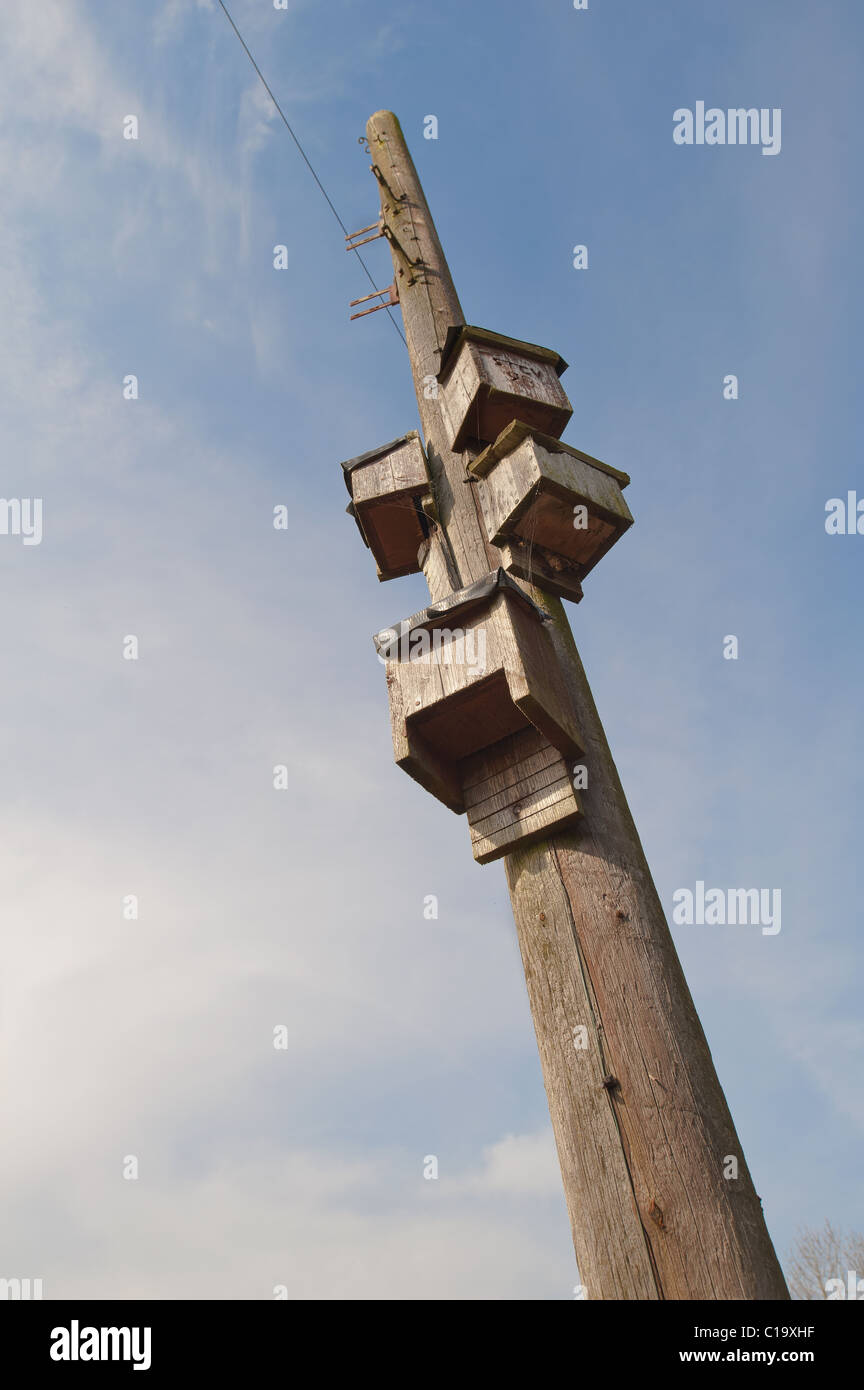 nest box for British bats a protected species in a good flight path and near lakes abundant in insects Stock Photohttps://www.alamy.com/image-license-details/?v=1https://www.alamy.com/stock-photo-nest-box-for-british-bats-a-protected-species-in-a-good-flight-path-35253835.html
nest box for British bats a protected species in a good flight path and near lakes abundant in insects Stock Photohttps://www.alamy.com/image-license-details/?v=1https://www.alamy.com/stock-photo-nest-box-for-british-bats-a-protected-species-in-a-good-flight-path-35253835.htmlRFC19XHF–nest box for British bats a protected species in a good flight path and near lakes abundant in insects
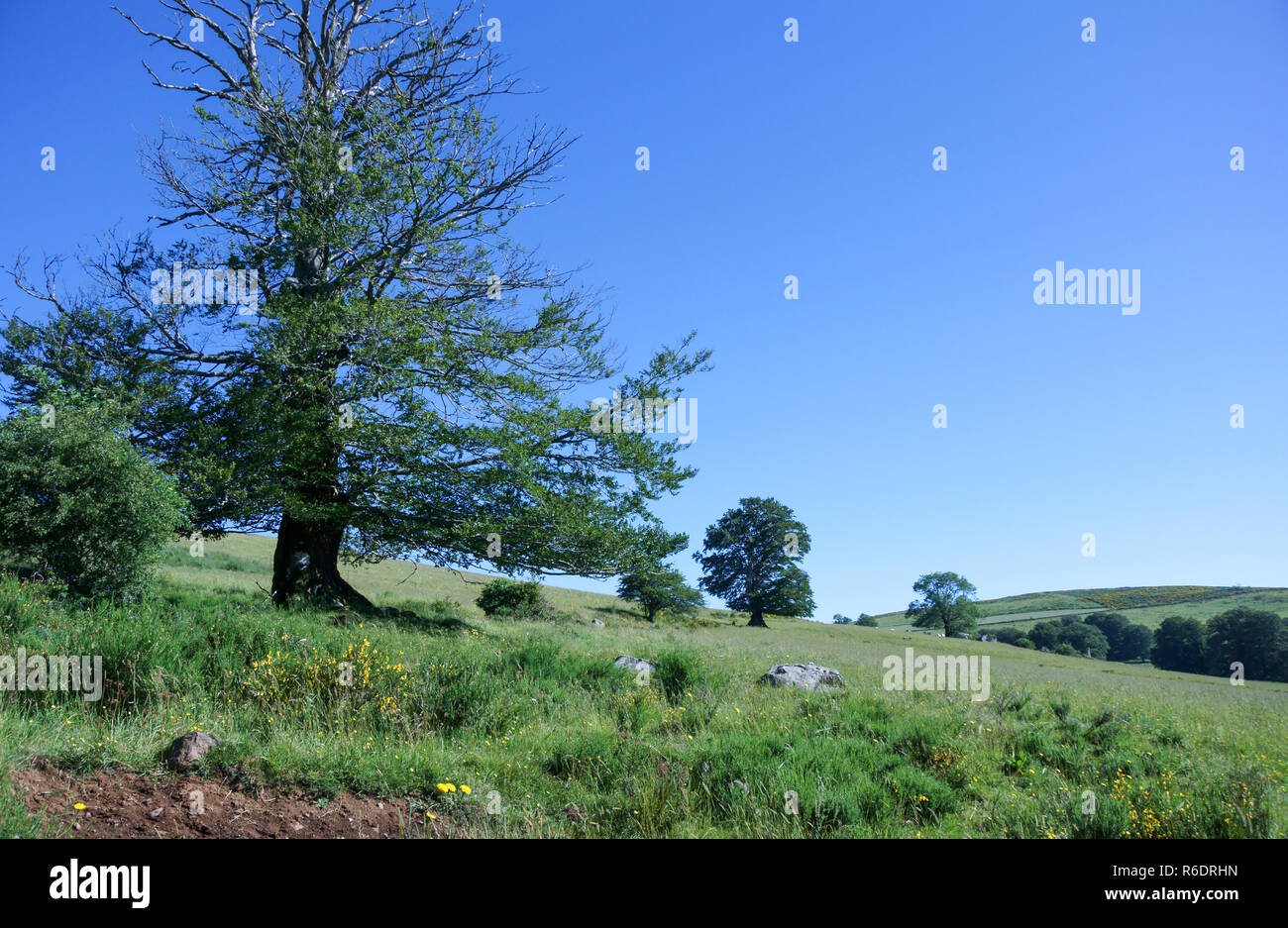 France.Dept 12.Aveyron. Dying Beech tree near Rodez .Causes unknown but perhaps just old age. Stock Photohttps://www.alamy.com/image-license-details/?v=1https://www.alamy.com/francedept-12aveyron-dying-beech-tree-near-rodez-causes-unknown-but-perhaps-just-old-age-image227726625.html
France.Dept 12.Aveyron. Dying Beech tree near Rodez .Causes unknown but perhaps just old age. Stock Photohttps://www.alamy.com/image-license-details/?v=1https://www.alamy.com/francedept-12aveyron-dying-beech-tree-near-rodez-causes-unknown-but-perhaps-just-old-age-image227726625.htmlRMR6DRHN–France.Dept 12.Aveyron. Dying Beech tree near Rodez .Causes unknown but perhaps just old age.
 Herrn de la Cepede's Naturgeschichte der Amphibien Weimar, Verlage des Industrie-Comptoir's, 1800-1802, amphibians, reptiles., The illustration features two distinct turtle species, each labeled with a figure number. The upper section depicts a streamlined aquatic turtle, identified as ''Die Igront-Schildkröte, ' showcasing its elongated shell and limbs adapted for swimming. The lower section presents a terrestrial tortoise, referred to as ''Die Japanische Schildkröte, ' characterized by its dome-shaped, patterned shell and sturdy legs, suitable for life on land. Both figures are detailed with Stock Photohttps://www.alamy.com/image-license-details/?v=1https://www.alamy.com/herrn-de-la-cepedes-naturgeschichte-der-amphibien-weimar-verlage-des-industrie-comptoirs-1800-1802-amphibians-reptiles-the-illustration-features-two-distinct-turtle-species-each-labeled-with-a-figure-number-the-upper-section-depicts-a-streamlined-aquatic-turtle-identified-as-die-igront-schildkrte-showcasing-its-elongated-shell-and-limbs-adapted-for-swimming-the-lower-section-presents-a-terrestrial-tortoise-referred-to-as-die-japanische-schildkrte-characterized-by-its-dome-shaped-patterned-shell-and-sturdy-legs-suitable-for-life-on-land-both-figures-are-detailed-with-image636094552.html
Herrn de la Cepede's Naturgeschichte der Amphibien Weimar, Verlage des Industrie-Comptoir's, 1800-1802, amphibians, reptiles., The illustration features two distinct turtle species, each labeled with a figure number. The upper section depicts a streamlined aquatic turtle, identified as ''Die Igront-Schildkröte, ' showcasing its elongated shell and limbs adapted for swimming. The lower section presents a terrestrial tortoise, referred to as ''Die Japanische Schildkröte, ' characterized by its dome-shaped, patterned shell and sturdy legs, suitable for life on land. Both figures are detailed with Stock Photohttps://www.alamy.com/image-license-details/?v=1https://www.alamy.com/herrn-de-la-cepedes-naturgeschichte-der-amphibien-weimar-verlage-des-industrie-comptoirs-1800-1802-amphibians-reptiles-the-illustration-features-two-distinct-turtle-species-each-labeled-with-a-figure-number-the-upper-section-depicts-a-streamlined-aquatic-turtle-identified-as-die-igront-schildkrte-showcasing-its-elongated-shell-and-limbs-adapted-for-swimming-the-lower-section-presents-a-terrestrial-tortoise-referred-to-as-die-japanische-schildkrte-characterized-by-its-dome-shaped-patterned-shell-and-sturdy-legs-suitable-for-life-on-land-both-figures-are-detailed-with-image636094552.htmlRM2YXTH2G–Herrn de la Cepede's Naturgeschichte der Amphibien Weimar, Verlage des Industrie-Comptoir's, 1800-1802, amphibians, reptiles., The illustration features two distinct turtle species, each labeled with a figure number. The upper section depicts a streamlined aquatic turtle, identified as ''Die Igront-Schildkröte, ' showcasing its elongated shell and limbs adapted for swimming. The lower section presents a terrestrial tortoise, referred to as ''Die Japanische Schildkröte, ' characterized by its dome-shaped, patterned shell and sturdy legs, suitable for life on land. Both figures are detailed with
 Wiesbaden, Germany. 08th Nov, 2019. Biologists have bred this small European pond turtle, which is now being prepared for reintroduction into the wild. As soon as the animal is big enough, it will be reintroduced by experts in suitable habitats in Hesse and Rhineland-Palatinate. (Zu dpa 'Swamp tortoises populate Hesse and Rhineland-Palatinate again') Credit: Boris Roessler/dpa/Alamy Live News Stock Photohttps://www.alamy.com/image-license-details/?v=1https://www.alamy.com/wiesbaden-germany-08th-nov-2019-biologists-have-bred-this-small-european-pond-turtle-which-is-now-being-prepared-for-reintroduction-into-the-wild-as-soon-as-the-animal-is-big-enough-it-will-be-reintroduced-by-experts-in-suitable-habitats-in-hesse-and-rhineland-palatinate-zu-dpa-swamp-tortoises-populate-hesse-and-rhineland-palatinate-again-credit-boris-roesslerdpaalamy-live-news-image333088669.html
Wiesbaden, Germany. 08th Nov, 2019. Biologists have bred this small European pond turtle, which is now being prepared for reintroduction into the wild. As soon as the animal is big enough, it will be reintroduced by experts in suitable habitats in Hesse and Rhineland-Palatinate. (Zu dpa 'Swamp tortoises populate Hesse and Rhineland-Palatinate again') Credit: Boris Roessler/dpa/Alamy Live News Stock Photohttps://www.alamy.com/image-license-details/?v=1https://www.alamy.com/wiesbaden-germany-08th-nov-2019-biologists-have-bred-this-small-european-pond-turtle-which-is-now-being-prepared-for-reintroduction-into-the-wild-as-soon-as-the-animal-is-big-enough-it-will-be-reintroduced-by-experts-in-suitable-habitats-in-hesse-and-rhineland-palatinate-zu-dpa-swamp-tortoises-populate-hesse-and-rhineland-palatinate-again-credit-boris-roesslerdpaalamy-live-news-image333088669.htmlRM2A9WDYW–Wiesbaden, Germany. 08th Nov, 2019. Biologists have bred this small European pond turtle, which is now being prepared for reintroduction into the wild. As soon as the animal is big enough, it will be reintroduced by experts in suitable habitats in Hesse and Rhineland-Palatinate. (Zu dpa 'Swamp tortoises populate Hesse and Rhineland-Palatinate again') Credit: Boris Roessler/dpa/Alamy Live News
 An ecological characterization of Coastal An ecological characterization of Coastal Maine (north and east of Cape Elizabeth) ecologicalcharac03usfi Year: 1980 Chapter 19 Commercially Important Forest Types Author: David Canavera Trees occur in abundance on virtually all of the terrestrial habitats in the characterization area. They are present on all types of terrestrial habitat, from open pine barrens to urban centers and provide suitable habitat for many plant and animal communities. Due to diverse habitat and reproductive requirements, trees of the coastal zones, (a term that will be use Stock Photohttps://www.alamy.com/image-license-details/?v=1https://www.alamy.com/an-ecological-characterization-of-coastal-an-ecological-characterization-of-coastal-maine-north-and-east-of-cape-elizabeth-ecologicalcharac03usfi-year-1980-chapter-19-commercially-important-forest-types-author-david-canavera-trees-occur-in-abundance-on-virtually-all-of-the-terrestrial-habitats-in-the-characterization-area-they-are-present-on-all-types-of-terrestrial-habitat-from-open-pine-barrens-to-urban-centers-and-provide-suitable-habitat-for-many-plant-and-animal-communities-due-to-diverse-habitat-and-reproductive-requirements-trees-of-the-coastal-zones-a-term-that-will-be-use-image239925529.html
An ecological characterization of Coastal An ecological characterization of Coastal Maine (north and east of Cape Elizabeth) ecologicalcharac03usfi Year: 1980 Chapter 19 Commercially Important Forest Types Author: David Canavera Trees occur in abundance on virtually all of the terrestrial habitats in the characterization area. They are present on all types of terrestrial habitat, from open pine barrens to urban centers and provide suitable habitat for many plant and animal communities. Due to diverse habitat and reproductive requirements, trees of the coastal zones, (a term that will be use Stock Photohttps://www.alamy.com/image-license-details/?v=1https://www.alamy.com/an-ecological-characterization-of-coastal-an-ecological-characterization-of-coastal-maine-north-and-east-of-cape-elizabeth-ecologicalcharac03usfi-year-1980-chapter-19-commercially-important-forest-types-author-david-canavera-trees-occur-in-abundance-on-virtually-all-of-the-terrestrial-habitats-in-the-characterization-area-they-are-present-on-all-types-of-terrestrial-habitat-from-open-pine-barrens-to-urban-centers-and-provide-suitable-habitat-for-many-plant-and-animal-communities-due-to-diverse-habitat-and-reproductive-requirements-trees-of-the-coastal-zones-a-term-that-will-be-use-image239925529.htmlRMRX9FCW–An ecological characterization of Coastal An ecological characterization of Coastal Maine (north and east of Cape Elizabeth) ecologicalcharac03usfi Year: 1980 Chapter 19 Commercially Important Forest Types Author: David Canavera Trees occur in abundance on virtually all of the terrestrial habitats in the characterization area. They are present on all types of terrestrial habitat, from open pine barrens to urban centers and provide suitable habitat for many plant and animal communities. Due to diverse habitat and reproductive requirements, trees of the coastal zones, (a term that will be use
 Common Blue (Polyommatus icarus) is a common butterfly found in suitable habitats in Turkey. Stock Photohttps://www.alamy.com/image-license-details/?v=1https://www.alamy.com/common-blue-polyommatus-icarus-is-a-common-butterfly-found-in-suitable-habitats-in-turkey-image602033376.html
Common Blue (Polyommatus icarus) is a common butterfly found in suitable habitats in Turkey. Stock Photohttps://www.alamy.com/image-license-details/?v=1https://www.alamy.com/common-blue-polyommatus-icarus-is-a-common-butterfly-found-in-suitable-habitats-in-turkey-image602033376.htmlRF2WYCYM0–Common Blue (Polyommatus icarus) is a common butterfly found in suitable habitats in Turkey.
 Clematis 'Chantilly', close up flower Stock Photohttps://www.alamy.com/image-license-details/?v=1https://www.alamy.com/clematis-chantilly-close-up-flower-image369542225.html
Clematis 'Chantilly', close up flower Stock Photohttps://www.alamy.com/image-license-details/?v=1https://www.alamy.com/clematis-chantilly-close-up-flower-image369542225.htmlRM2CD62TH–Clematis 'Chantilly', close up flower
 Northern Shoveler (Spatula clypeata) is a species that lives in suitable habitats in Asia, Europe and Africa. Stock Photohttps://www.alamy.com/image-license-details/?v=1https://www.alamy.com/northern-shoveler-spatula-clypeata-is-a-species-that-lives-in-suitable-habitats-in-asia-europe-and-africa-image602049380.html
Northern Shoveler (Spatula clypeata) is a species that lives in suitable habitats in Asia, Europe and Africa. Stock Photohttps://www.alamy.com/image-license-details/?v=1https://www.alamy.com/northern-shoveler-spatula-clypeata-is-a-species-that-lives-in-suitable-habitats-in-asia-europe-and-africa-image602049380.htmlRF2WYDM3G–Northern Shoveler (Spatula clypeata) is a species that lives in suitable habitats in Asia, Europe and Africa.
 Snapping turtle (Chelydra serpentina) Roadside nest plundered by fox or raccoon Stock Photohttps://www.alamy.com/image-license-details/?v=1https://www.alamy.com/snapping-turtle-chelydra-serpentina-roadside-nest-plundered-by-fox-image5957129.html
Snapping turtle (Chelydra serpentina) Roadside nest plundered by fox or raccoon Stock Photohttps://www.alamy.com/image-license-details/?v=1https://www.alamy.com/snapping-turtle-chelydra-serpentina-roadside-nest-plundered-by-fox-image5957129.htmlRMA26NMA–Snapping turtle (Chelydra serpentina) Roadside nest plundered by fox or raccoon
 . Annals of the South African Museum = Annale van die Suid-Afrikaanse Museum. Natural history. 124 ANNALS OF THE SOUTH AFRICAN MUSEUM. Fig. 48. Hypothetical African avifaunal zones based on evolutionary patterns found in guinea-fowl. the latter, of relict patches of lowland forest and gallery forests, which provide suitable habitats for forest birds. Indeed, when distributional data are lacking or equivocal, Chapin (1932#) and other zoogeographers (e.g. Davis 1962; Moreau 1966) seem to have relied on the distribution of vegetation as a predictor of bird distributions. The division of Chapin's Stock Photohttps://www.alamy.com/image-license-details/?v=1https://www.alamy.com/annals-of-the-south-african-museum-=-annale-van-die-suid-afrikaanse-museum-natural-history-124-annals-of-the-south-african-museum-fig-48-hypothetical-african-avifaunal-zones-based-on-evolutionary-patterns-found-in-guinea-fowl-the-latter-of-relict-patches-of-lowland-forest-and-gallery-forests-which-provide-suitable-habitats-for-forest-birds-indeed-when-distributional-data-are-lacking-or-equivocal-chapin-1932-and-other-zoogeographers-eg-davis-1962-moreau-1966-seem-to-have-relied-on-the-distribution-of-vegetation-as-a-predictor-of-bird-distributions-the-division-of-chapins-image236451344.html
. Annals of the South African Museum = Annale van die Suid-Afrikaanse Museum. Natural history. 124 ANNALS OF THE SOUTH AFRICAN MUSEUM. Fig. 48. Hypothetical African avifaunal zones based on evolutionary patterns found in guinea-fowl. the latter, of relict patches of lowland forest and gallery forests, which provide suitable habitats for forest birds. Indeed, when distributional data are lacking or equivocal, Chapin (1932#) and other zoogeographers (e.g. Davis 1962; Moreau 1966) seem to have relied on the distribution of vegetation as a predictor of bird distributions. The division of Chapin's Stock Photohttps://www.alamy.com/image-license-details/?v=1https://www.alamy.com/annals-of-the-south-african-museum-=-annale-van-die-suid-afrikaanse-museum-natural-history-124-annals-of-the-south-african-museum-fig-48-hypothetical-african-avifaunal-zones-based-on-evolutionary-patterns-found-in-guinea-fowl-the-latter-of-relict-patches-of-lowland-forest-and-gallery-forests-which-provide-suitable-habitats-for-forest-birds-indeed-when-distributional-data-are-lacking-or-equivocal-chapin-1932-and-other-zoogeographers-eg-davis-1962-moreau-1966-seem-to-have-relied-on-the-distribution-of-vegetation-as-a-predictor-of-bird-distributions-the-division-of-chapins-image236451344.htmlRMRMK82T–. Annals of the South African Museum = Annale van die Suid-Afrikaanse Museum. Natural history. 124 ANNALS OF THE SOUTH AFRICAN MUSEUM. Fig. 48. Hypothetical African avifaunal zones based on evolutionary patterns found in guinea-fowl. the latter, of relict patches of lowland forest and gallery forests, which provide suitable habitats for forest birds. Indeed, when distributional data are lacking or equivocal, Chapin (1932#) and other zoogeographers (e.g. Davis 1962; Moreau 1966) seem to have relied on the distribution of vegetation as a predictor of bird distributions. The division of Chapin's
 The moorlands and hill grazing areas on North Uist are excellent breeding grounds for curlew. Stock Photohttps://www.alamy.com/image-license-details/?v=1https://www.alamy.com/the-moorlands-and-hill-grazing-areas-on-north-uist-are-excellent-breeding-grounds-for-curlew-image475774799.html
The moorlands and hill grazing areas on North Uist are excellent breeding grounds for curlew. Stock Photohttps://www.alamy.com/image-license-details/?v=1https://www.alamy.com/the-moorlands-and-hill-grazing-areas-on-north-uist-are-excellent-breeding-grounds-for-curlew-image475774799.htmlRF2JJ1BH3–The moorlands and hill grazing areas on North Uist are excellent breeding grounds for curlew.
 Flying & dabbling Yellow billed ducks on Dead Tree Island in Botswana Stock Photohttps://www.alamy.com/image-license-details/?v=1https://www.alamy.com/stock-photo-flying-dabbling-yellow-billed-ducks-on-dead-tree-island-in-botswana-94109826.html
Flying & dabbling Yellow billed ducks on Dead Tree Island in Botswana Stock Photohttps://www.alamy.com/image-license-details/?v=1https://www.alamy.com/stock-photo-flying-dabbling-yellow-billed-ducks-on-dead-tree-island-in-botswana-94109826.htmlRFFD3216–Flying & dabbling Yellow billed ducks on Dead Tree Island in Botswana
![. Fig. 111. Distribution of Lynx rufus in Colorado. 1. L. r. baileyi. 2. L. r. pallescens. 3. L. r. rufus. For explanation of symbols, see p. 9. 2186 in 1959) (unpublished data from Divi- sion of Game, Fish and Parks). The figures reported possibly include an unknown number of lynx. Lynx rufus baileyi Merriam Lynx baileyi Merriam, N. Amer. Fauna, 3:79, 11 September 1890; type locality, Moccasin Spring, N of Colorado River, Coconino Co., Arizona. [Lynx rufa] baileyi, Elliot, Field Columbian Mus., Publ. 45, Zool. Ser., 2:297, 6 March 1901. Distribution in Colorado.—In suitable habitats at lower Stock Photo . Fig. 111. Distribution of Lynx rufus in Colorado. 1. L. r. baileyi. 2. L. r. pallescens. 3. L. r. rufus. For explanation of symbols, see p. 9. 2186 in 1959) (unpublished data from Divi- sion of Game, Fish and Parks). The figures reported possibly include an unknown number of lynx. Lynx rufus baileyi Merriam Lynx baileyi Merriam, N. Amer. Fauna, 3:79, 11 September 1890; type locality, Moccasin Spring, N of Colorado River, Coconino Co., Arizona. [Lynx rufa] baileyi, Elliot, Field Columbian Mus., Publ. 45, Zool. Ser., 2:297, 6 March 1901. Distribution in Colorado.—In suitable habitats at lower Stock Photo](https://c8.alamy.com/comp/MCKP79/fig-111-distribution-of-lynx-rufus-in-colorado-1-l-r-baileyi-2-l-r-pallescens-3-l-r-rufus-for-explanation-of-symbols-see-p-9-2186-in-1959-unpublished-data-from-divi-sion-of-game-fish-and-parks-the-figures-reported-possibly-include-an-unknown-number-of-lynx-lynx-rufus-baileyi-merriam-lynx-baileyi-merriam-n-amer-fauna-379-11-september-1890-type-locality-moccasin-spring-n-of-colorado-river-coconino-co-arizona-lynx-rufa-baileyi-elliot-field-columbian-mus-publ-45-zool-ser-2297-6-march-1901-distribution-in-coloradoin-suitable-habitats-at-lower-MCKP79.jpg) . Fig. 111. Distribution of Lynx rufus in Colorado. 1. L. r. baileyi. 2. L. r. pallescens. 3. L. r. rufus. For explanation of symbols, see p. 9. 2186 in 1959) (unpublished data from Divi- sion of Game, Fish and Parks). The figures reported possibly include an unknown number of lynx. Lynx rufus baileyi Merriam Lynx baileyi Merriam, N. Amer. Fauna, 3:79, 11 September 1890; type locality, Moccasin Spring, N of Colorado River, Coconino Co., Arizona. [Lynx rufa] baileyi, Elliot, Field Columbian Mus., Publ. 45, Zool. Ser., 2:297, 6 March 1901. Distribution in Colorado.—In suitable habitats at lower Stock Photohttps://www.alamy.com/image-license-details/?v=1https://www.alamy.com/fig-111-distribution-of-lynx-rufus-in-colorado-1-l-r-baileyi-2-l-r-pallescens-3-l-r-rufus-for-explanation-of-symbols-see-p-9-2186-in-1959-unpublished-data-from-divi-sion-of-game-fish-and-parks-the-figures-reported-possibly-include-an-unknown-number-of-lynx-lynx-rufus-baileyi-merriam-lynx-baileyi-merriam-n-amer-fauna-379-11-september-1890-type-locality-moccasin-spring-n-of-colorado-river-coconino-co-arizona-lynx-rufa-baileyi-elliot-field-columbian-mus-publ-45-zool-ser-2297-6-march-1901-distribution-in-coloradoin-suitable-habitats-at-lower-image179914093.html
. Fig. 111. Distribution of Lynx rufus in Colorado. 1. L. r. baileyi. 2. L. r. pallescens. 3. L. r. rufus. For explanation of symbols, see p. 9. 2186 in 1959) (unpublished data from Divi- sion of Game, Fish and Parks). The figures reported possibly include an unknown number of lynx. Lynx rufus baileyi Merriam Lynx baileyi Merriam, N. Amer. Fauna, 3:79, 11 September 1890; type locality, Moccasin Spring, N of Colorado River, Coconino Co., Arizona. [Lynx rufa] baileyi, Elliot, Field Columbian Mus., Publ. 45, Zool. Ser., 2:297, 6 March 1901. Distribution in Colorado.—In suitable habitats at lower Stock Photohttps://www.alamy.com/image-license-details/?v=1https://www.alamy.com/fig-111-distribution-of-lynx-rufus-in-colorado-1-l-r-baileyi-2-l-r-pallescens-3-l-r-rufus-for-explanation-of-symbols-see-p-9-2186-in-1959-unpublished-data-from-divi-sion-of-game-fish-and-parks-the-figures-reported-possibly-include-an-unknown-number-of-lynx-lynx-rufus-baileyi-merriam-lynx-baileyi-merriam-n-amer-fauna-379-11-september-1890-type-locality-moccasin-spring-n-of-colorado-river-coconino-co-arizona-lynx-rufa-baileyi-elliot-field-columbian-mus-publ-45-zool-ser-2297-6-march-1901-distribution-in-coloradoin-suitable-habitats-at-lower-image179914093.htmlRMMCKP79–. Fig. 111. Distribution of Lynx rufus in Colorado. 1. L. r. baileyi. 2. L. r. pallescens. 3. L. r. rufus. For explanation of symbols, see p. 9. 2186 in 1959) (unpublished data from Divi- sion of Game, Fish and Parks). The figures reported possibly include an unknown number of lynx. Lynx rufus baileyi Merriam Lynx baileyi Merriam, N. Amer. Fauna, 3:79, 11 September 1890; type locality, Moccasin Spring, N of Colorado River, Coconino Co., Arizona. [Lynx rufa] baileyi, Elliot, Field Columbian Mus., Publ. 45, Zool. Ser., 2:297, 6 March 1901. Distribution in Colorado.—In suitable habitats at lower
 Aylesbury Vale, Buckinghamshire, UK. 7th May, 2021. HS2 were scraping the ancient woodland floor from Jones Hill Wood today and putting it in dumper trucks. They were then tipping it onto a receptor field as part of their mitigation for destroying ancient woodland. They have also put some felled tree limbs into the area to supposedly make a new environment suitable for wildlife. Jones Hill Wood is said to have inspired local author Roald Dahl to write the popular children's novel, The Fantastic Mr Fox. The High Speed Rail 2 from London to Birmingham is carving a huge scar across the Chilterns. Stock Photohttps://www.alamy.com/image-license-details/?v=1https://www.alamy.com/aylesbury-vale-buckinghamshire-uk-7th-may-2021-hs2-were-scraping-the-ancient-woodland-floor-from-jones-hill-wood-today-and-putting-it-in-dumper-trucks-they-were-then-tipping-it-onto-a-receptor-field-as-part-of-their-mitigation-for-destroying-ancient-woodland-they-have-also-put-some-felled-tree-limbs-into-the-area-to-supposedly-make-a-new-environment-suitable-for-wildlife-jones-hill-wood-is-said-to-have-inspired-local-author-roald-dahl-to-write-the-popular-childrens-novel-the-fantastic-mr-fox-the-high-speed-rail-2-from-london-to-birmingham-is-carving-a-huge-scar-across-the-chilterns-image425572060.html
Aylesbury Vale, Buckinghamshire, UK. 7th May, 2021. HS2 were scraping the ancient woodland floor from Jones Hill Wood today and putting it in dumper trucks. They were then tipping it onto a receptor field as part of their mitigation for destroying ancient woodland. They have also put some felled tree limbs into the area to supposedly make a new environment suitable for wildlife. Jones Hill Wood is said to have inspired local author Roald Dahl to write the popular children's novel, The Fantastic Mr Fox. The High Speed Rail 2 from London to Birmingham is carving a huge scar across the Chilterns. Stock Photohttps://www.alamy.com/image-license-details/?v=1https://www.alamy.com/aylesbury-vale-buckinghamshire-uk-7th-may-2021-hs2-were-scraping-the-ancient-woodland-floor-from-jones-hill-wood-today-and-putting-it-in-dumper-trucks-they-were-then-tipping-it-onto-a-receptor-field-as-part-of-their-mitigation-for-destroying-ancient-woodland-they-have-also-put-some-felled-tree-limbs-into-the-area-to-supposedly-make-a-new-environment-suitable-for-wildlife-jones-hill-wood-is-said-to-have-inspired-local-author-roald-dahl-to-write-the-popular-childrens-novel-the-fantastic-mr-fox-the-high-speed-rail-2-from-london-to-birmingham-is-carving-a-huge-scar-across-the-chilterns-image425572060.htmlRM2FMADE4–Aylesbury Vale, Buckinghamshire, UK. 7th May, 2021. HS2 were scraping the ancient woodland floor from Jones Hill Wood today and putting it in dumper trucks. They were then tipping it onto a receptor field as part of their mitigation for destroying ancient woodland. They have also put some felled tree limbs into the area to supposedly make a new environment suitable for wildlife. Jones Hill Wood is said to have inspired local author Roald Dahl to write the popular children's novel, The Fantastic Mr Fox. The High Speed Rail 2 from London to Birmingham is carving a huge scar across the Chilterns.
 The Wood Anemone is a delicate spring flower that will carpet the floor of deciduous woodland in suitable habitats. They flower before the tree canopy Stock Photohttps://www.alamy.com/image-license-details/?v=1https://www.alamy.com/the-wood-anemone-is-a-delicate-spring-flower-that-will-carpet-the-floor-of-deciduous-woodland-in-suitable-habitats-they-flower-before-the-tree-canopy-image426062518.html
The Wood Anemone is a delicate spring flower that will carpet the floor of deciduous woodland in suitable habitats. They flower before the tree canopy Stock Photohttps://www.alamy.com/image-license-details/?v=1https://www.alamy.com/the-wood-anemone-is-a-delicate-spring-flower-that-will-carpet-the-floor-of-deciduous-woodland-in-suitable-habitats-they-flower-before-the-tree-canopy-image426062518.htmlRM2FN4R2E–The Wood Anemone is a delicate spring flower that will carpet the floor of deciduous woodland in suitable habitats. They flower before the tree canopy
 Mallard duck, green body, brownish body, wild duck, glossy green head, grey wings and belly, suitable wetland habitats, shallow sanctuaries, yellow. Stock Photohttps://www.alamy.com/image-license-details/?v=1https://www.alamy.com/mallard-duck-green-body-brownish-body-wild-duck-glossy-green-head-grey-wings-and-belly-suitable-wetland-habitats-shallow-sanctuaries-yellow-image479301000.html
Mallard duck, green body, brownish body, wild duck, glossy green head, grey wings and belly, suitable wetland habitats, shallow sanctuaries, yellow. Stock Photohttps://www.alamy.com/image-license-details/?v=1https://www.alamy.com/mallard-duck-green-body-brownish-body-wild-duck-glossy-green-head-grey-wings-and-belly-suitable-wetland-habitats-shallow-sanctuaries-yellow-image479301000.htmlRF2JRP18T–Mallard duck, green body, brownish body, wild duck, glossy green head, grey wings and belly, suitable wetland habitats, shallow sanctuaries, yellow.
 Rote Island, Indonesia. July 16, 2009. Indonesian minister of forestry, MS Kaban, and other officials releasing Rote Island's snake-necked turtles (Chelodina mccordi) bred in captivity back to one of the suitable habitats, which is Lake Peto in Maubesi village, during a ceremonial event to save the critically endangered species threatened by wildlife trade. Lake Peto, Maubesi village, Rote Ndao regency, East Nusa Tenggara, Indonesia. Stock Photohttps://www.alamy.com/image-license-details/?v=1https://www.alamy.com/rote-island-indonesia-july-16-2009-indonesian-minister-of-forestry-ms-kaban-and-other-officials-releasing-rote-islands-snake-necked-turtles-chelodina-mccordi-bred-in-captivity-back-to-one-of-the-suitable-habitats-which-is-lake-peto-in-maubesi-village-during-a-ceremonial-event-to-save-the-critically-endangered-species-threatened-by-wildlife-trade-lake-peto-maubesi-village-rote-ndao-regency-east-nusa-tenggara-indonesia-image414115659.html
Rote Island, Indonesia. July 16, 2009. Indonesian minister of forestry, MS Kaban, and other officials releasing Rote Island's snake-necked turtles (Chelodina mccordi) bred in captivity back to one of the suitable habitats, which is Lake Peto in Maubesi village, during a ceremonial event to save the critically endangered species threatened by wildlife trade. Lake Peto, Maubesi village, Rote Ndao regency, East Nusa Tenggara, Indonesia. Stock Photohttps://www.alamy.com/image-license-details/?v=1https://www.alamy.com/rote-island-indonesia-july-16-2009-indonesian-minister-of-forestry-ms-kaban-and-other-officials-releasing-rote-islands-snake-necked-turtles-chelodina-mccordi-bred-in-captivity-back-to-one-of-the-suitable-habitats-which-is-lake-peto-in-maubesi-village-during-a-ceremonial-event-to-save-the-critically-endangered-species-threatened-by-wildlife-trade-lake-peto-maubesi-village-rote-ndao-regency-east-nusa-tenggara-indonesia-image414115659.htmlRM2F1MGMY–Rote Island, Indonesia. July 16, 2009. Indonesian minister of forestry, MS Kaban, and other officials releasing Rote Island's snake-necked turtles (Chelodina mccordi) bred in captivity back to one of the suitable habitats, which is Lake Peto in Maubesi village, during a ceremonial event to save the critically endangered species threatened by wildlife trade. Lake Peto, Maubesi village, Rote Ndao regency, East Nusa Tenggara, Indonesia.
 Rote Island, Indonesia. July 15, 2009. Lake Peto in Maubesi village, Rote Island, Rote Ndao regency, East Nusa Tenggara province, Indonesia. Considered as one of the suitable habitats for Rote Island's endemic snake-necked turtle species (Chelodina mccordi), this lake is chosen as the location to release the endangered species bred in captivity, on a ceremonial event that will be attended by Indonesian officials on July 16, 2009. Lake Peto, Maubesi village, Rote Ndao regency, East Nusa Tenggara, Indonesia. Stock Photohttps://www.alamy.com/image-license-details/?v=1https://www.alamy.com/rote-island-indonesia-july-15-2009-lake-peto-in-maubesi-village-rote-island-rote-ndao-regency-east-nusa-tenggara-province-indonesia-considered-as-one-of-the-suitable-habitats-for-rote-islands-endemic-snake-necked-turtle-species-chelodina-mccordi-this-lake-is-chosen-as-the-location-to-release-the-endangered-species-bred-in-captivity-on-a-ceremonial-event-that-will-be-attended-by-indonesian-officials-on-july-16-2009-lake-peto-maubesi-village-rote-ndao-regency-east-nusa-tenggara-indonesia-image414115431.html
Rote Island, Indonesia. July 15, 2009. Lake Peto in Maubesi village, Rote Island, Rote Ndao regency, East Nusa Tenggara province, Indonesia. Considered as one of the suitable habitats for Rote Island's endemic snake-necked turtle species (Chelodina mccordi), this lake is chosen as the location to release the endangered species bred in captivity, on a ceremonial event that will be attended by Indonesian officials on July 16, 2009. Lake Peto, Maubesi village, Rote Ndao regency, East Nusa Tenggara, Indonesia. Stock Photohttps://www.alamy.com/image-license-details/?v=1https://www.alamy.com/rote-island-indonesia-july-15-2009-lake-peto-in-maubesi-village-rote-island-rote-ndao-regency-east-nusa-tenggara-province-indonesia-considered-as-one-of-the-suitable-habitats-for-rote-islands-endemic-snake-necked-turtle-species-chelodina-mccordi-this-lake-is-chosen-as-the-location-to-release-the-endangered-species-bred-in-captivity-on-a-ceremonial-event-that-will-be-attended-by-indonesian-officials-on-july-16-2009-lake-peto-maubesi-village-rote-ndao-regency-east-nusa-tenggara-indonesia-image414115431.htmlRM2F1MGCR–Rote Island, Indonesia. July 15, 2009. Lake Peto in Maubesi village, Rote Island, Rote Ndao regency, East Nusa Tenggara province, Indonesia. Considered as one of the suitable habitats for Rote Island's endemic snake-necked turtle species (Chelodina mccordi), this lake is chosen as the location to release the endangered species bred in captivity, on a ceremonial event that will be attended by Indonesian officials on July 16, 2009. Lake Peto, Maubesi village, Rote Ndao regency, East Nusa Tenggara, Indonesia.
 A group of French birdwatchers from the Gers Bird Club birding in the Parc Naturel Des Grand Causses. Dept.12. Aveyron. Stock Photohttps://www.alamy.com/image-license-details/?v=1https://www.alamy.com/a-group-of-french-birdwatchers-from-the-gers-bird-club-birding-in-the-parc-naturel-des-grand-causses-dept12-aveyron-image227726633.html
A group of French birdwatchers from the Gers Bird Club birding in the Parc Naturel Des Grand Causses. Dept.12. Aveyron. Stock Photohttps://www.alamy.com/image-license-details/?v=1https://www.alamy.com/a-group-of-french-birdwatchers-from-the-gers-bird-club-birding-in-the-parc-naturel-des-grand-causses-dept12-aveyron-image227726633.htmlRMR6DRJ1–A group of French birdwatchers from the Gers Bird Club birding in the Parc Naturel Des Grand Causses. Dept.12. Aveyron.
 Tableau encyclopédique et méthodique des trois règnes de la nature, A Paris, Chez Mme. veuve Agasse, 1823, birds, pictorial works., The illustration features a collection of avian species, meticulously arranged in a vertical layout for study. At the top, a bird with a long tail and slender body, known for its melodic calls, is showcased. Below it, a distinctive bird with a long, curved beak is depicted, likely adapted for foraging along shorelines. The third figure represents a seabird, characterized by its robust build and webbed feet, suitable for marine environments. Finally, the bottom bir Stock Photohttps://www.alamy.com/image-license-details/?v=1https://www.alamy.com/tableau-encyclopdique-et-mthodique-des-trois-rgnes-de-la-nature-a-paris-chez-mme-veuve-agasse-1823-birds-pictorial-works-the-illustration-features-a-collection-of-avian-species-meticulously-arranged-in-a-vertical-layout-for-study-at-the-top-a-bird-with-a-long-tail-and-slender-body-known-for-its-melodic-calls-is-showcased-below-it-a-distinctive-bird-with-a-long-curved-beak-is-depicted-likely-adapted-for-foraging-along-shorelines-the-third-figure-represents-a-seabird-characterized-by-its-robust-build-and-webbed-feet-suitable-for-marine-environments-finally-the-bottom-bir-image636109668.html
Tableau encyclopédique et méthodique des trois règnes de la nature, A Paris, Chez Mme. veuve Agasse, 1823, birds, pictorial works., The illustration features a collection of avian species, meticulously arranged in a vertical layout for study. At the top, a bird with a long tail and slender body, known for its melodic calls, is showcased. Below it, a distinctive bird with a long, curved beak is depicted, likely adapted for foraging along shorelines. The third figure represents a seabird, characterized by its robust build and webbed feet, suitable for marine environments. Finally, the bottom bir Stock Photohttps://www.alamy.com/image-license-details/?v=1https://www.alamy.com/tableau-encyclopdique-et-mthodique-des-trois-rgnes-de-la-nature-a-paris-chez-mme-veuve-agasse-1823-birds-pictorial-works-the-illustration-features-a-collection-of-avian-species-meticulously-arranged-in-a-vertical-layout-for-study-at-the-top-a-bird-with-a-long-tail-and-slender-body-known-for-its-melodic-calls-is-showcased-below-it-a-distinctive-bird-with-a-long-curved-beak-is-depicted-likely-adapted-for-foraging-along-shorelines-the-third-figure-represents-a-seabird-characterized-by-its-robust-build-and-webbed-feet-suitable-for-marine-environments-finally-the-bottom-bir-image636109668.htmlRM2YXW8AC–Tableau encyclopédique et méthodique des trois règnes de la nature, A Paris, Chez Mme. veuve Agasse, 1823, birds, pictorial works., The illustration features a collection of avian species, meticulously arranged in a vertical layout for study. At the top, a bird with a long tail and slender body, known for its melodic calls, is showcased. Below it, a distinctive bird with a long, curved beak is depicted, likely adapted for foraging along shorelines. The third figure represents a seabird, characterized by its robust build and webbed feet, suitable for marine environments. Finally, the bottom bir
 Wiesbaden, Germany. 08th Nov, 2019. These two European pond turtles have been bred by biologists and are now being prepared for reintroduction into the wild. As soon as the animals are big enough, they are released into the wild by experts in suitable habitats in Hesse and Rhineland-Palatinate. (Zu dpa 'Swamp tortoises populate Hesse and Rhineland-Palatinate again') Credit: Boris Roessler/dpa/Alamy Live News Stock Photohttps://www.alamy.com/image-license-details/?v=1https://www.alamy.com/wiesbaden-germany-08th-nov-2019-these-two-european-pond-turtles-have-been-bred-by-biologists-and-are-now-being-prepared-for-reintroduction-into-the-wild-as-soon-as-the-animals-are-big-enough-they-are-released-into-the-wild-by-experts-in-suitable-habitats-in-hesse-and-rhineland-palatinate-zu-dpa-swamp-tortoises-populate-hesse-and-rhineland-palatinate-again-credit-boris-roesslerdpaalamy-live-news-image333088668.html
Wiesbaden, Germany. 08th Nov, 2019. These two European pond turtles have been bred by biologists and are now being prepared for reintroduction into the wild. As soon as the animals are big enough, they are released into the wild by experts in suitable habitats in Hesse and Rhineland-Palatinate. (Zu dpa 'Swamp tortoises populate Hesse and Rhineland-Palatinate again') Credit: Boris Roessler/dpa/Alamy Live News Stock Photohttps://www.alamy.com/image-license-details/?v=1https://www.alamy.com/wiesbaden-germany-08th-nov-2019-these-two-european-pond-turtles-have-been-bred-by-biologists-and-are-now-being-prepared-for-reintroduction-into-the-wild-as-soon-as-the-animals-are-big-enough-they-are-released-into-the-wild-by-experts-in-suitable-habitats-in-hesse-and-rhineland-palatinate-zu-dpa-swamp-tortoises-populate-hesse-and-rhineland-palatinate-again-credit-boris-roesslerdpaalamy-live-news-image333088668.htmlRM2A9WDYT–Wiesbaden, Germany. 08th Nov, 2019. These two European pond turtles have been bred by biologists and are now being prepared for reintroduction into the wild. As soon as the animals are big enough, they are released into the wild by experts in suitable habitats in Hesse and Rhineland-Palatinate. (Zu dpa 'Swamp tortoises populate Hesse and Rhineland-Palatinate again') Credit: Boris Roessler/dpa/Alamy Live News
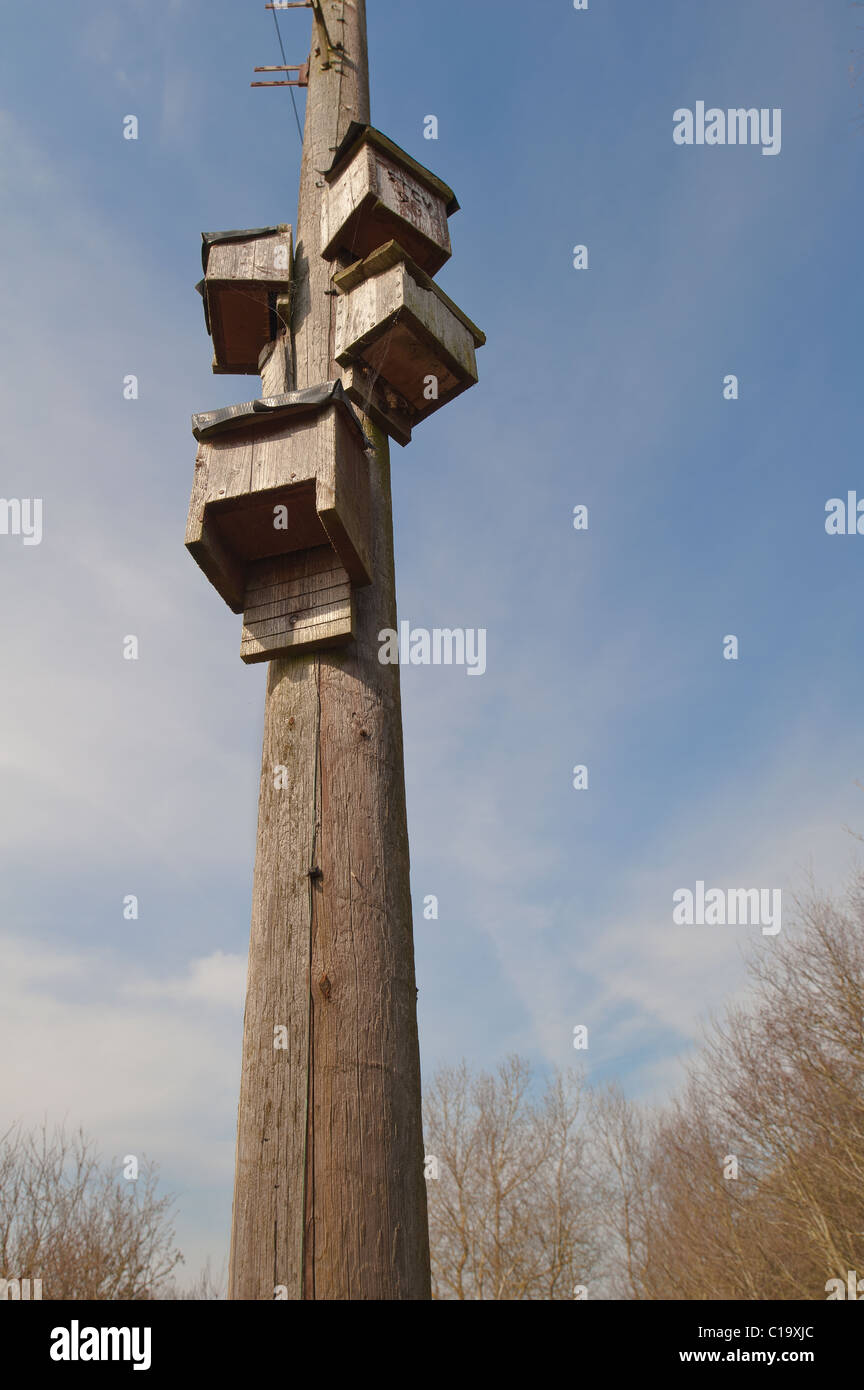 nest box for British bats a protected species in a good flight path and near lakes abundant in insects Stock Photohttps://www.alamy.com/image-license-details/?v=1https://www.alamy.com/stock-photo-nest-box-for-british-bats-a-protected-species-in-a-good-flight-path-35253860.html
nest box for British bats a protected species in a good flight path and near lakes abundant in insects Stock Photohttps://www.alamy.com/image-license-details/?v=1https://www.alamy.com/stock-photo-nest-box-for-british-bats-a-protected-species-in-a-good-flight-path-35253860.htmlRFC19XJC–nest box for British bats a protected species in a good flight path and near lakes abundant in insects